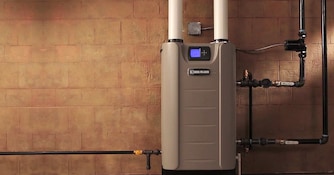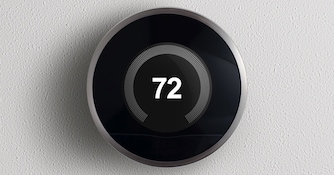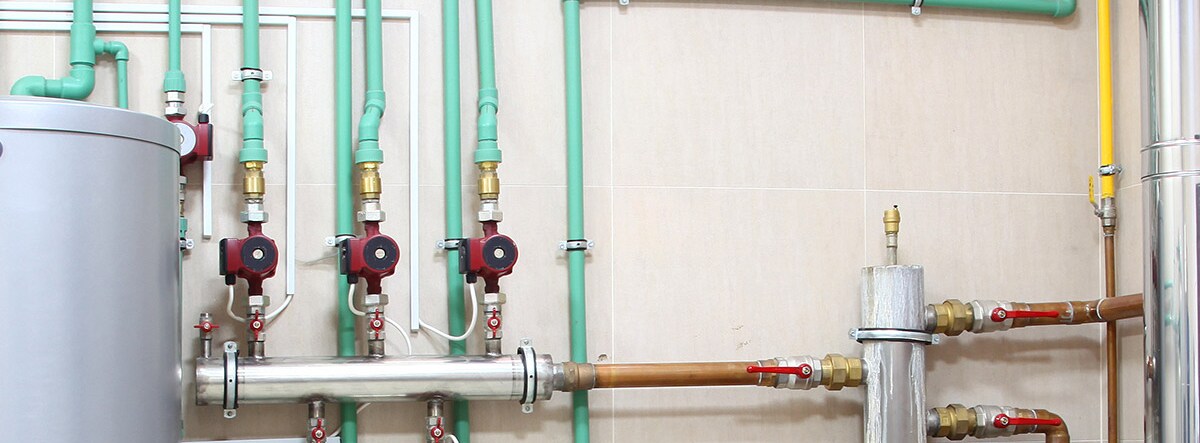
{"storeInfo":{"id":15,"name":"eComfort","domain":"ecomfort.com","initials":"ECD","url":"https:\/\/www.ecomfort.com","path":"\/var\/www\/vhosts\/ecomfort.com\/"},"headerNavJSON":"{\"MainLinks\":[{\"URL\":\"\\\/cooling\\\/cooling.html\",\"displayText\":\"Cooling\",\"subNavigationLinks\":[{\"URL\":\"\\\/cooling\\\/central-air-conditioners.html\",\"Parent\":\"304\",\"displayText\":\"Central Air Conditioners\",\"sectionLinks\":{\"columns\":\"6\",\"linkItems\":[{\"URL\":\"\\\/cooling\\\/central-air-packages.html\",\"imageURL\":\"\\\/nav-image\\\/100\\\/cool-ac-15-1.jpg\",\"displayText\":\"Central Air Kits\"},{\"URL\":\"\\\/cooling\\\/air-conditioning-condensers.html\",\"imageURL\":\"\\\/nav-image\\\/100\\\/cool-ac-15-2.jpg\",\"displayText\":\"A\\\/C Condensers\"},{\"URL\":\"\\\/heating\\\/central-heat-pumps.html\",\"imageURL\":\"\\\/nav-image\\\/100\\\/cool-ac-15-3.jpg\",\"displayText\":\"Heat Pump Condensers\"},{\"URL\":\"\\\/cooling\\\/packaged-units.html\",\"imageURL\":\"\\\/nav-image\\\/100\\\/cool-ac-15-4.jpg\",\"displayText\":\"Packaged Units\"},{\"URL\":\"\\\/cooling\\\/air-handlers-coils.html\",\"imageURL\":\"\\\/nav-image\\\/100\\\/cool-ac-15-5.jpg\",\"displayText\":\"Air Handlers & Coils\"},{\"URL\":\"\\\/cooling\\\/central-air-conditioner-accessories.html\",\"imageURL\":\"\\\/nav-image\\\/100\\\/cool-ac-15-6.jpg\",\"displayText\":\"Central A\\\/C Accessories\"}]},\"subCategories\":[{\"URL\":null,\"type\":\"list\",\"title\":\"Popular Brands\",\"linkItems\":[{\"URL\":\"\\\/cooling\\\/goodman-central-air-conditioners.html\",\"displayText\":\"Goodman\"},{\"URL\":\"\\\/cooling\\\/revolv-air-conditioners.html\",\"displayText\":\"Revolv\"},{\"URL\":\"\\\/cooling\\\/daikin-split-systems.html\",\"displayText\":\"Daikin\"},{\"URL\":\"\\\/cooling\\\/first-company.html\",\"displayText\":\"First Company\"}]},{\"URL\":null,\"type\":\"list\",\"title\":\"Shop by Tonnage\",\"linkItems\":[{\"URL\":\"\\\/cooling\\\/1-5-ton-central-air-conditioners.html\",\"displayText\":\"1.5 Ton\"},{\"URL\":\"\\\/cooling\\\/2-ton-central-air-conditioners.html\",\"displayText\":\"2.0 - 2.5 Ton\"},{\"URL\":\"\\\/cooling\\\/3-ton-central-air-conditioners.html\",\"displayText\":\"3.0 - 3.5 Ton\"},{\"URL\":\"\\\/cooling\\\/4-ton-central-air-conditioners.html\",\"displayText\":\"4.0 Ton\"},{\"URL\":\"\\\/cooling\\\/5-ton-central-air-conditioners.html\",\"displayText\":\"5.0 Ton\"}]},{\"URL\":null,\"type\":\"list\",\"title\":\"Shop by SEER\",\"linkItems\":[{\"URL\":\"\\\/cooling\\\/13-nominal-seer-air-conditioners.html\",\"displayText\":\"13 SEER\"},{\"URL\":\"\\\/cooling\\\/14-nominal-seer-air-conditioners.html\",\"displayText\":\"14 SEER\"},{\"URL\":\"\\\/cooling\\\/16-nominal-seer-air-conditioners.html\",\"displayText\":\"16 SEER\"},{\"URL\":\"\\\/cooling\\\/18-nominal-seer-air-conditioners.html\",\"displayText\":\"18 SEER\"}]},{\"URL\":\"\\\/stories\\\/115-How-to-Pick-the-Perfect-Air-Conditioner.html\",\"type\":\"image\",\"title\":\"Buyer's Guide\",\"imageURL\":\"\\\/nav-article-image\\\/305\\\/social_img_115.jpg\",\"linkItems\":[],\"displayText\":\"Central Air Conditioner Buying Guide\"}]},{\"URL\":\"\\\/cooling\\\/ductless-mini-split-systems.html\",\"Parent\":\"304\",\"displayText\":\"Ductless Mini Splits\",\"sectionLinks\":{\"columns\":\"6\",\"linkItems\":[{\"URL\":\"\\\/cooling\\\/mini-split-heat-pump-systems.html\",\"imageURL\":\"\\\/nav-image\\\/100\\\/cool-mini-15-1.jpg\",\"displayText\":\"Cooling + Heating Systems\"},{\"URL\":\"\\\/cooling\\\/cooling-only-mini-splits.html\",\"imageURL\":\"\\\/nav-image\\\/100\\\/cool-mini-15-2.jpg\",\"displayText\":\"Cooling Only Systems\"},{\"URL\":\"\\\/cooling\\\/mini-split-components.html\",\"imageURL\":\"\\\/nav-image\\\/100\\\/cool-mini-15-3.jpg\",\"displayText\":\"Mini Split Components\"},{\"URL\":\"\\\/cooling\\\/mini-split-accessories.html\",\"imageURL\":\"\\\/nav-image\\\/100\\\/cool-mini-15-4.jpg\",\"displayText\":\"Mini Split Accessories\"}]},\"subCategories\":[{\"URL\":null,\"type\":\"list\",\"title\":\"Popular Brands\",\"linkItems\":[{\"URL\":\"\\\/cooling\\\/lg-mini-split-systems.html\",\"displayText\":\"LG\"},{\"URL\":\"\\\/cooling\\\/mitsubishi-mini-split-systems.html\",\"displayText\":\"Mitsubishi\"},{\"URL\":\"\\\/cooling\\\/fujitsu-mini-split-systems.html\",\"displayText\":\"Fujitsu\"},{\"URL\":\"\\\/cooling\\\/daikin-mini-split-systems.html\",\"displayText\":\"Daikin\"},{\"URL\":\"\\\/cooling\\\/ge-mini-split-systems.html\",\"displayText\":\"GE\"}]},{\"URL\":null,\"type\":\"list\",\"title\":\"Shop by Zone\",\"linkItems\":[{\"URL\":\"\\\/cooling\\\/single-zone-mini-splits.html\",\"displayText\":\"Single-Zone\"},{\"URL\":\"\\\/cooling\\\/dual-zone-mini-splits.html\",\"displayText\":\"Dual-Zone\"},{\"URL\":\"\\\/cooling\\\/tri-zone-mini-splits.html\",\"displayText\":\"3-Zone\"},{\"URL\":\"\\\/cooling\\\/quad-zone-mini-splits.html\",\"displayText\":\"4-Zone\"},{\"URL\":\"\\\/cooling\\\/five-zone-mini-splits.html\",\"displayText\":\"5-Zone\"}]},{\"URL\":null,\"type\":\"list\",\"title\":\"Shop by Type\",\"linkItems\":[{\"URL\":\"\\\/cooling\\\/wall-mounted-mini-splits.html\",\"displayText\":\"Wall Mounted\"},{\"URL\":\"\\\/cooling\\\/ceiling-cassette-mini-splits.html\",\"displayText\":\"Ceiling Cassette\"},{\"URL\":\"\\\/cooling\\\/concealed-duct-mini-splits.html\",\"displayText\":\"Concealed Duct\"},{\"URL\":\"\\\/cooling\\\/ceiling-suspended-mini-splits.html\",\"displayText\":\"Ceiling Suspended\"},{\"URL\":\"\\\/cooling\\\/floor-standing-mini-splits.html\",\"displayText\":\"Floor Standing\"}]},{\"URL\":\"\\\/stories\\\/1184-How-to-Pick-the-Perfect-Mini-Split.html\",\"type\":\"image\",\"title\":\"Buyer's Guide\",\"imageURL\":\"\\\/nav-article-image\\\/305\\\/social_img_1184.jpg\",\"linkItems\":[],\"displayText\":\"The Ultimate Mini Split Buyer's Guide\"}]},{\"URL\":\"\\\/cooling\\\/central-air-packages.html\",\"Parent\":\"304\",\"displayText\":\"Central Air Kits\",\"sectionLinks\":{\"columns\":\"6\",\"linkItems\":[{\"URL\":\"\\\/cooling\\\/air-conditioner-furnace-central-air-packages.html\",\"imageURL\":\"\\\/nav-image\\\/100\\\/cool-air-kits-15-1.jpg\",\"displayText\":\"A\\\/C & Furnace Kits\"},{\"URL\":\"\\\/cooling\\\/air-conditioner-coil-kits.html\",\"imageURL\":\"\\\/nav-image\\\/100\\\/cool-air-kits-15-2.jpg\",\"displayText\":\"A\\\/C & Coil Kits\"},{\"URL\":\"\\\/cooling\\\/air-conditioner-air-handler-packages.html\",\"imageURL\":\"\\\/nav-image\\\/100\\\/cool-air-kits-15-3.jpg\",\"displayText\":\"A\\\/C & Air Handler Kits\"},{\"URL\":\"\\\/cooling\\\/heat-pump-furnace-central-air-packages.html\",\"imageURL\":\"\\\/nav-image\\\/100\\\/cool-air-kits-15-4.jpg\",\"displayText\":\"Heat Pump & Furnace Kits\"},{\"URL\":\"\\\/cooling\\\/heat-pump-air-handler-packages.html\",\"imageURL\":\"\\\/nav-image\\\/100\\\/cool-air-kits-15-5.jpg\",\"displayText\":\"Heat Pump & Air Handler Kits\"}]},\"subCategories\":[{\"URL\":null,\"type\":\"list\",\"title\":\"Popular Brands\",\"linkItems\":[{\"URL\":\"\\\/cooling\\\/goodman-central-air-packages.html\",\"displayText\":\"Goodman\"},{\"URL\":\"\\\/cooling\\\/revolv-central-air-kits.html\",\"displayText\":\"Revolv\"}]},{\"URL\":null,\"type\":\"list\",\"title\":\"Shop by Tonnage\",\"linkItems\":[{\"URL\":\"\\\/cooling\\\/1-5-ton-central-air-kits.html\",\"displayText\":\"1.5 Ton\"},{\"URL\":\"\\\/cooling\\\/2-2-5-ton-central-air-kits.html\",\"displayText\":\"2.0 - 2.5 Ton\"},{\"URL\":\"\\\/cooling\\\/3-3-5-ton-central-air-kits.html\",\"displayText\":\"3.0 - 3.5 Ton\"},{\"URL\":\"\\\/cooling\\\/4-ton-central-air-kits.html\",\"displayText\":\"4.0 Ton\"},{\"URL\":\"\\\/cooling\\\/5-ton-central-air-kits.html\",\"displayText\":\"5.0 Ton\"}]},{\"URL\":null,\"type\":\"list\",\"title\":\"Shop by SEER\",\"linkItems\":[{\"URL\":\"\\\/cooling\\\/13-seer-central-air-kits.html\",\"displayText\":\"13 SEER\"},{\"URL\":\"\\\/cooling\\\/14-seer-central-air-kits.html\",\"displayText\":\"14 SEER\"},{\"URL\":\"\\\/cooling\\\/16-seer-central-air-kits.html\",\"displayText\":\"16 SEER\"},{\"URL\":\"\\\/cooling\\\/18-seer-central-air-kits.html\",\"displayText\":\"18 SEER\"}]},{\"URL\":\"\\\/stories\\\/115-How-to-Pick-the-Perfect-Air-Conditioner.html\",\"type\":\"image\",\"title\":\"Buyer's Guide\",\"imageURL\":\"\\\/nav-article-image\\\/305\\\/social_img_115.jpg\",\"linkItems\":[],\"displayText\":\"Central Air Conditioner Buying Guide\"}]},{\"URL\":\"\\\/cooling\\\/packaged-units.html\",\"Parent\":\"304\",\"displayText\":\"Packaged Units\",\"sectionLinks\":{\"columns\":\"6\",\"linkItems\":[{\"URL\":\"\\\/cooling\\\/air-conditioner-packaged-units.html\",\"imageURL\":\"\\\/nav-image\\\/100\\\/cool-packaged-15-1.jpg\",\"displayText\":\"Packaged Air Conditioners\"},{\"URL\":\"\\\/cooling\\\/air-conditioner-furnace-packaged-units.html\",\"imageURL\":\"\\\/nav-image\\\/100\\\/cool-packaged-15-2.jpg\",\"displayText\":\"Gas\\\/Electric Packaged Units\"},{\"URL\":\"\\\/cooling\\\/packaged-heat-pump-systems.html\",\"imageURL\":\"\\\/nav-image\\\/100\\\/cool-packaged-15-3.jpg\",\"displayText\":\"Packaged Heat Pumps\"},{\"URL\":\"\\\/cooling\\\/heat-pump-furnace-packaged-units.html\",\"imageURL\":\"\\\/nav-image\\\/100\\\/cool-packaged-15-4.jpg\",\"displayText\":\"Dual-Fuel Packaged Units\"},{\"URL\":\"\\\/cooling\\\/packaged-unit-accessories.html\",\"imageURL\":\"\\\/nav-image\\\/100\\\/cool-packaged-15-5.jpg\",\"displayText\":\"Packaged Unit Accessories\"}]},\"subCategories\":[{\"URL\":null,\"type\":\"list\",\"title\":\"Popular Brands\",\"linkItems\":[{\"URL\":\"\\\/cooling\\\/goodman-packaged-units.html\",\"displayText\":\"Goodman\"},{\"URL\":\"\\\/cooling\\\/revolv-packaged-units.html\",\"displayText\":\"Revolv\"},{\"URL\":\"\\\/cooling\\\/daikin-packaged-units.html\",\"displayText\":\"Daikin\"}]},{\"URL\":null,\"type\":\"list\",\"title\":\"Accessories\",\"linkItems\":[{\"URL\":\"\\\/cooling\\\/packaged-unit-duct-accessories.html\",\"displayText\":\"Duct Accessories\"},{\"URL\":\"\\\/cooling\\\/packaged-unit-economizers.html\",\"displayText\":\"Economizers\"},{\"URL\":\"\\\/cooling\\\/packaged-unit-roof-curbs.html\",\"displayText\":\"Roof Curbs\"},{\"URL\":\"\\\/cooling\\\/packaged-unit-heat-strip-kits.html\",\"displayText\":\"Heat Kits\"}]},{\"URL\":\"\\\/stories\\\/1483-How-Packaged-Heating-and-Cooling-Units-Work.html\",\"type\":\"image\",\"title\":\"Buyer's Guide\",\"imageURL\":\"\\\/nav-article-image\\\/305\\\/social_img_1483.jpg\",\"linkItems\":[],\"displayText\":\"Packaged Units 101\"}]},{\"URL\":\"\\\/cooling\\\/room-air-conditioners.html\",\"Parent\":\"304\",\"displayText\":\"Room Air Conditioners\",\"sectionLinks\":{\"columns\":\"6\",\"linkItems\":[{\"URL\":\"\\\/cooling\\\/through-the-wall-air-conditioners.html\",\"imageURL\":\"\\\/nav-image\\\/100\\\/cool-room-15-2.jpg\",\"displayText\":\"Through-the-Wall Air Conditioners\"},{\"URL\":\"\\\/cooling\\\/window-air-conditioners.html\",\"imageURL\":\"\\\/nav-image\\\/100\\\/cool-room-15-3.jpg\",\"displayText\":\"Window Air Conditioners\"},{\"URL\":\"\\\/cooling\\\/ductless-mini-split-systems.html\",\"imageURL\":\"\\\/nav-image\\\/100\\\/cool-room-15-4.jpg\",\"displayText\":\"Ductless Mini Splits\"},{\"URL\":\"\\\/cooling\\\/ptac-units.html\",\"imageURL\":\"\\\/nav-image\\\/100\\\/cool-room-15-5.jpg\",\"displayText\":\"PTAC Units\"},{\"URL\":\"\\\/cooling\\\/evaporative-coolers.html\",\"imageURL\":\"\\\/nav-image\\\/100\\\/cool-room-15-6.jpg\",\"displayText\":\"Evaporative Coolers\"},{\"URL\":\"\\\/cooling\\\/portable-air-conditioners.html\",\"imageURL\":\"\\\/nav-image\\\/100\\\/LG-portable-air-conditioner_36689b61e34200c931a4f307eb27e8e7.jpg\",\"displayText\":\"Portable Air Conditioners\"}]},\"subCategories\":[{\"URL\":null,\"type\":\"list\",\"title\":\"Popular Brands\",\"linkItems\":[{\"URL\":\"\\\/cooling\\\/ge-room-air-conditioners.html\",\"displayText\":\"GE\"},{\"URL\":\"\\\/cooling\\\/koldfront-air-conditioners.html\",\"displayText\":\"Koldfront\"},{\"URL\":\"\\\/cooling\\\/lg-room-air-conditioners.html\",\"displayText\":\"LG \"},{\"URL\":\"\\\/cooling\\\/frigidaire-room-air-conditioners.html\",\"displayText\":\"Frigidaire\"},{\"URL\":\"\\\/cooling\\\/portacool-room-air-conditioners.html\",\"displayText\":\"Portacool\"}]},{\"URL\":null,\"type\":\"list\",\"title\":\"PTAC Units\",\"linkItems\":[{\"URL\":\"\\\/cooling\\\/ptac-cooling-electric-heat.html\",\"displayText\":\"Cooling Only\"},{\"URL\":\"\\\/cooling\\\/ptac-cooling-electric-heat.html\",\"displayText\":\"Cooling + Electric Heat\"},{\"URL\":\"\\\/cooling\\\/ptac-heat-pump-electric-heat.html\",\"displayText\":\"Heat Pump + Electric Backup\"},{\"URL\":\"\\\/cooling\\\/ptac-accessories.html\",\"displayText\":\"PTAC Accessories\"}]},{\"URL\":null,\"type\":\"list\",\"title\":\"Wall Air Conditioners\",\"linkItems\":[{\"URL\":\"\\\/cooling\\\/8000-btu-through-the-wall-air-conditioners.html\",\"displayText\":\"8,000 BTU\"},{\"URL\":\"\\\/cooling\\\/10000-btu-through-the-wall-air-conditioners.html\",\"displayText\":\"10,000 BTU\"},{\"URL\":\"\\\/cooling\\\/12000-btu-through-the-wall-air-conditioners.html\",\"displayText\":\"12,000 BTU\"},{\"URL\":\"\\\/cooling\\\/14000-btu-through-the-wall-air-conditioners.html\",\"displayText\":\"14,000 BTU\"},{\"URL\":\"\\\/cooling\\\/through-the-wall-air-conditioner-sleeves.html\",\"displayText\":\"AC Sleeves\"}]}]},{\"URL\":\"\\\/heating\\\/central-heat-pumps.html\",\"Parent\":\"304\",\"displayText\":\"Central Heat Pumps\",\"sectionLinks\":{\"columns\":\"6\",\"linkItems\":[{\"URL\":\"\\\/heating\\\/central-heat-pumps.html\",\"imageURL\":\"\\\/nav-image\\\/100\\\/cool-central-heat-15-1.jpg\",\"displayText\":\"Heat Pump Condensers\"},{\"URL\":\"\\\/cooling\\\/heat-pump-furnace-central-air-packages.html\",\"imageURL\":\"\\\/nav-image\\\/100\\\/cool-central-heat-15-2.jpg\",\"displayText\":\"Heat Pump & Furnace Kits\"},{\"URL\":\"\\\/cooling\\\/heat-pump-air-handler-packages.html\",\"imageURL\":\"\\\/nav-image\\\/100\\\/cool-central-heat-15-3.jpg\",\"displayText\":\"Heat Pump & Air Handler Kits\"},{\"URL\":\"\\\/cooling\\\/packaged-heat-pump-systems.html\",\"imageURL\":\"\\\/nav-image\\\/100\\\/cool-central-heat-15-4.jpg\",\"displayText\":\"Packaged Heat Pumps\"},{\"URL\":\"\\\/cooling\\\/heat-pump-furnace-packaged-units.html\",\"imageURL\":\"\\\/nav-image\\\/100\\\/cool-central-heat-15-5.jpg\",\"displayText\":\"Dual-Fuel Packaged Units\"},{\"URL\":\"\\\/cooling\\\/air-handlers-coils.html\",\"imageURL\":\"\\\/nav-image\\\/100\\\/cool-central-heat-15-6.jpg\",\"displayText\":\"Air Handlers & Coils\"}]},\"subCategories\":[{\"URL\":null,\"type\":\"list\",\"title\":\"Popular Brands\",\"linkItems\":[{\"URL\":\"\\\/heating\\\/goodman-heat-pumps.html\",\"displayText\":\"Goodman\"},{\"URL\":\"\\\/cooling\\\/revolv-heat-pumps.html\",\"displayText\":\"Revolv\"},{\"URL\":\"\\\/cooling\\\/daikin-heat-pumps.html\",\"displayText\":\"Daikin\"}]},{\"URL\":null,\"type\":\"list\",\"title\":\"Shop by Tonnage\",\"linkItems\":[{\"URL\":\"\\\/heating\\\/1-5-ton-heat-pumps.html\",\"displayText\":\"1.5 Ton\"},{\"URL\":\"\\\/heating\\\/2-ton-heat-pumps.html\",\"displayText\":\"2.0 - 2.5 Ton\"},{\"URL\":\"\\\/heating\\\/3-ton-heat-pumps.html\",\"displayText\":\"3.0 - 3.5 Ton\"},{\"URL\":\"\\\/heating\\\/4-ton-heat-pumps.html\",\"displayText\":\"4.0 Ton\"},{\"URL\":\"\\\/heating\\\/5-ton-heat-pumps.html\",\"displayText\":\"5.0 Ton\"}]},{\"URL\":null,\"type\":\"list\",\"title\":\"Shop by SEER\",\"linkItems\":[{\"URL\":\"\\\/heating\\\/14-nominal-seer-heat-pumps.html\",\"displayText\":\"14 SEER\"},{\"URL\":\"\\\/heating\\\/16-nominal-seer-heat-pumps.html\",\"displayText\":\"16 SEER\"},{\"URL\":\"\\\/heating\\\/18-nominal-seer-heat-pumps.html\",\"displayText\":\"18 SEER\"}]},{\"URL\":\"\\\/stories\\\/1482-How-Central-Heat-Pumps-Work.html\",\"type\":\"image\",\"title\":\"Buyer's Guide\",\"imageURL\":\"\\\/nav-article-image\\\/305\\\/social_img_1482.jpg\",\"linkItems\":[],\"displayText\":\"Heat Pumps 101\"}]},{\"URL\":\"\\\/cooling\\\/hydronic-cooling.html\",\"Parent\":\"304\",\"displayText\":\"Hydronic Cooling\",\"sectionLinks\":{\"columns\":\"6\",\"linkItems\":[{\"URL\":\"\\\/heating\\\/hydronic-air-handlers.html\",\"imageURL\":\"\\\/nav-image\\\/100\\\/cool-hyronic-15-1.jpg\",\"displayText\":\"Hydronic Air Handlers\"},{\"URL\":\"\\\/heating\\\/hot-water-coils.html\",\"imageURL\":\"\\\/nav-image\\\/100\\\/cool-hyronic-15-2.jpg\",\"displayText\":\"Chilled Water Coils\"},{\"URL\":\"\\\/heating\\\/terminal-fan-coil-accessories.html\",\"imageURL\":\"\\\/nav-image\\\/100\\\/cool-hyronic-15-3.jpg\",\"displayText\":\"Terminal Fan Coil Accessories\"}]},\"subCategories\":[{\"URL\":null,\"type\":\"list\",\"title\":\"Popular Brands\",\"linkItems\":[{\"URL\":\"\\\/heating\\\/weil-mclain-hydronic-air-handlers.html\",\"displayText\":\"Weil-McLain\"}]}]},{\"URL\":\"\\\/cooling\\\/ptac-units.html\",\"Parent\":\"304\",\"displayText\":\"PTAC Units\",\"sectionLinks\":{\"columns\":\"6\",\"linkItems\":[{\"URL\":\"\\\/cooling\\\/ptac-cooling-electric-heat.html\",\"imageURL\":\"\\\/nav-image\\\/100\\\/cool-ptac-15-1.jpg\",\"displayText\":\"Cooling + Electric Heat\"},{\"URL\":\"\\\/cooling\\\/ptac-heat-pump-electric-heat.html\",\"imageURL\":\"\\\/nav-image\\\/100\\\/cool-ptac-15-2.jpg\",\"displayText\":\"Heat Pump + Electric Backup\"},{\"URL\":\"\\\/cooling\\\/ptac-accessories.html\",\"imageURL\":\"\\\/nav-image\\\/100\\\/cool-ptac-15-3.jpg\",\"displayText\":\"PTAC Accessories\"}]},\"subCategories\":[{\"URL\":null,\"type\":\"list\",\"title\":\"Popular Brands\",\"linkItems\":[{\"URL\":\"\\\/cooling\\\/amana-ptac-units.html\",\"displayText\":\"Amana\"},{\"URL\":\"\\\/cooling\\\/lg-ptac-units.html\",\"displayText\":\"LG\"},{\"URL\":\"\\\/cooling\\\/ge-ptac-units.html\",\"displayText\":\"GE\"},{\"URL\":\"\\\/cooling\\\/hotpoint-ptac-units.html\",\"displayText\":\"Hotpoint\"}]},{\"URL\":null,\"type\":\"list\",\"title\":\"PTAC Accessories\",\"linkItems\":[{\"URL\":\"\\\/cooling\\\/ptac-wall-sleeves.html\",\"displayText\":\"Wall Sleeves\"},{\"URL\":\"\\\/cooling\\\/ptac-grilles.html\",\"displayText\":\"Grilles\"},{\"URL\":\"\\\/cooling\\\/ptac-power-cords.html\",\"displayText\":\"Power Cords\"},{\"URL\":\"\\\/cooling\\\/ptac-subbases.html\",\"displayText\":\"Subbases\"},{\"URL\":\"\\\/thermostats\\\/ptac-thermostats.html\",\"displayText\":\"Thermostats\"}]},{\"URL\":\"\\\/stories\\\/1198-How-to-Pick-the-Perfect-Packaged-Terminal-Air-Conditioner.html\",\"type\":\"image\",\"title\":\"Buyer's Guide\",\"imageURL\":\"\\\/nav-article-image\\\/305\\\/social_img_1198.jpg\",\"linkItems\":[],\"displayText\":\"PTAC: Self Contained Air Conditioner Buyer's Guide\"}]},{\"URL\":\"\\\/cooling\\\/cooling-controls.html\",\"Parent\":\"304\",\"displayText\":\"Cooling Controls\",\"sectionLinks\":{\"columns\":\"6\",\"linkItems\":[{\"URL\":\"\\\/thermostats\\\/thermostats.html\",\"imageURL\":\"\\\/nav-image\\\/100\\\/cool-controls-15-1.jpg\",\"displayText\":\"Thermostats\"},{\"URL\":\"\\\/thermostats\\\/forced-air-zone-controllers.html\",\"imageURL\":\"\\\/nav-image\\\/100\\\/cool-controls-15-2.jpg\",\"displayText\":\"Zone Controllers\"},{\"URL\":\"\\\/thermostats\\\/zone-dampers.html\",\"imageURL\":\"\\\/nav-image\\\/100\\\/cool-controls-15-3.jpg\",\"displayText\":\"Zone Dampers\"},{\"URL\":\"\\\/thermostats\\\/by-pass-dampers.html\",\"imageURL\":\"\\\/nav-image\\\/100\\\/cool-controls-15-4.jpg\",\"displayText\":\"By-Pass Dampers\"},{\"URL\":\"\\\/thermostats\\\/damper-accessories.html\",\"imageURL\":\"\\\/nav-image\\\/100\\\/cool-controls-15-5.jpg\",\"displayText\":\"Damper Accessories\"}]},\"subCategories\":[{\"URL\":null,\"type\":\"list\",\"title\":\"Popular Brands\",\"linkItems\":[{\"URL\":\"\\\/thermostats\\\/nest-thermostats.html\",\"displayText\":\"Nest\"},{\"URL\":\"\\\/thermostats\\\/ecobee-thermostats.html\",\"displayText\":\"Ecobee\"},{\"URL\":\"\\\/thermostats\\\/honeywell-thermostats.html\",\"displayText\":\"Honeywell\"},{\"URL\":\"\\\/thermostats\\\/white-rodgers-thermostats.html\",\"displayText\":\"White Rodgers\"},{\"URL\":\"\\\/thermostats\\\/aprilaire-thermostats.html\",\"displayText\":\"Aprilaire\"}]},{\"URL\":null,\"type\":\"list\",\"title\":\"Popular Categories\",\"linkItems\":[{\"URL\":\"\\\/thermostats\\\/smart-thermostats.html\",\"displayText\":\"Smart Thermostats\"},{\"URL\":\"\\\/thermostats\\\/wifi-thermostats.html\",\"displayText\":\"Wi-Fi Thermostats\"},{\"URL\":\"\\\/thermostats\\\/programmable-thermostats.html\",\"displayText\":\"Programmable Thermostats\"},{\"URL\":\"\\\/thermostats\\\/basic-thermostats.html\",\"displayText\":\"Basic Thermostats\"},{\"URL\":\"\\\/thermostats\\\/thermostat-accessories.html\",\"displayText\":\"Thermostat Accessories\"}]}]}]},{\"URL\":\"\\\/cooling\\\/ductless-mini-split-systems.html\",\"displayText\":\"Ductless Mini Splits\",\"subNavigationLinks\":[{\"URL\":\"\\\/cooling\\\/single-zone-mini-splits.html\",\"Parent\":\"314\",\"displayText\":\"Single Zone\",\"sectionLinks\":{\"columns\":\"6\",\"linkItems\":[{\"URL\":\"\\\/cooling\\\/single-zone-wall-mounted-mini-splits.html\",\"imageURL\":\"\\\/nav-image\\\/100\\\/mini-single-15-1.jpg\",\"displayText\":\"Wall Mounted\"},{\"URL\":\"\\\/cooling\\\/single-zone-ceiling-cassette-mini-splits.html\",\"imageURL\":\"\\\/nav-image\\\/100\\\/mini-single-15-2.jpg\",\"displayText\":\"Ceiling Cassette\"},{\"URL\":\"\\\/cooling\\\/single-zone-concealed-duct-mini-splits.html\",\"imageURL\":\"\\\/nav-image\\\/100\\\/mini-single-15-3.jpg\",\"displayText\":\"Concealed Duct\"},{\"URL\":\"\\\/cooling\\\/single-zone-ceiling-suspended-mini-splits.html\",\"imageURL\":\"\\\/nav-image\\\/100\\\/mini-single-15-4.jpg\",\"displayText\":\"Ceiling Suspended\"},{\"URL\":\"\\\/cooling\\\/single-zone-floor-standing-mini-splits.html\",\"imageURL\":\"\\\/nav-image\\\/100\\\/mini-single-15-5.jpg\",\"displayText\":\"Floor Mounted\"},{\"URL\":\"\\\/cooling\\\/ducted-air-handler-mini-splits.html\",\"imageURL\":\"\\\/nav-image\\\/100\\\/airhandlerimage (002)_8131627dcd81973c4b394d42d12ba2b4.jpg\",\"displayText\":\"Ducted Air Handler\"}]},\"subCategories\":[{\"URL\":null,\"type\":\"list\",\"title\":\"Popular Brands\",\"linkItems\":[{\"URL\":\"\\\/cooling\\\/lg-single-zone-mini-splits.html\",\"displayText\":\"LG\"},{\"URL\":\"\\\/cooling\\\/mitsubishi-single-zone-mini-splits.html\",\"displayText\":\"Mitsubishi\"},{\"URL\":\"\\\/cooling\\\/daikin-single-zone-mini-splits.html\",\"displayText\":\"Daikin\"},{\"URL\":\"\\\/cooling\\\/ge-mini-split-systems.html\",\"displayText\":\"GE\"},{\"URL\":\"\\\/cooling\\\/fujitsu-single-zone-mini-splits.html\",\"displayText\":\"Fujitsu\"},{\"URL\":\"\\\/cooling\\\/durastar-single-zone-mini-splits.html\",\"displayText\":\"Durastar\"}]},{\"URL\":null,\"type\":\"list\",\"title\":\"Shop by Operating Mode\",\"linkItems\":[{\"URL\":\"\\\/cooling\\\/single-zone-mini-split-heat-pumps.html\",\"displayText\":\"Cooling + Heating\"},{\"URL\":\"\\\/cooling\\\/single-zone-cooling-only-mini-splits.html\",\"displayText\":\"Cooling Only\"}]},{\"URL\":\"\\\/stories\\\/1184-How-to-Pick-the-Perfect-Mini-Split.html\",\"type\":\"image\",\"title\":\"Buyer's Guide\",\"imageURL\":\"\\\/nav-article-image\\\/305\\\/social_img_1184.jpg\",\"linkItems\":[],\"displayText\":\"The Ultimate Mini Split Buyer's Guide\"}]},{\"URL\":\"\\\/cooling\\\/dual-zone-mini-splits.html\",\"Parent\":\"314\",\"displayText\":\"Dual Zone\",\"sectionLinks\":{\"columns\":\"6\",\"linkItems\":[{\"URL\":\"\\\/cooling\\\/dual-zone-wall-mounted-mini-splits.html\",\"imageURL\":\"\\\/nav-image\\\/100\\\/mini-dual-15-1.jpg\",\"displayText\":\"Wall Mounted\"},{\"URL\":\"\\\/cooling\\\/dual-zone-ceiling-cassette-mini-splits.html\",\"imageURL\":\"\\\/nav-image\\\/100\\\/mini-dual-15-2.jpg\",\"displayText\":\"Ceiling Cassette\"},{\"URL\":\"\\\/cooling\\\/dual-zone-concealed-duct-mini-splits.html\",\"imageURL\":\"\\\/nav-image\\\/100\\\/mini-dual-15-3.jpg\",\"displayText\":\"Concealed Duct\"},{\"URL\":\"\\\/cooling\\\/dual-zone-floor-standing-mini-splits.html\",\"imageURL\":\"\\\/nav-image\\\/100\\\/mini-dual-15-4.jpg\",\"displayText\":\"Floor Mounted\"}]},\"subCategories\":[{\"URL\":null,\"type\":\"list\",\"title\":\"Popular Brands\",\"linkItems\":[{\"URL\":\"\\\/cooling\\\/lg-dual-zone-mini-split-systems.html\",\"displayText\":\"LG\"},{\"URL\":\"\\\/cooling\\\/mitsubishi-dual-zone-mini-splits.html\",\"displayText\":\"Mitsubishi\"},{\"URL\":\"\\\/cooling\\\/daikin-dual-zone-mini-splits.html\",\"displayText\":\"Daikin\"},{\"URL\":\"\\\/cooling\\\/fujitsu-dual-zone-mini-splits.html\",\"displayText\":\"Fujitsu\"},{\"URL\":\"\\\/cooling\\\/durastar-dual-zone-mini-splits.html\",\"displayText\":\"Durastar\"}]},{\"URL\":null,\"type\":\"list\",\"title\":\"Shop by BTU\",\"linkItems\":[{\"URL\":\"\\\/cooling\\\/18000-btu-dual-zone-mini-splits.html\",\"displayText\":\"18,000 BTU\"},{\"URL\":\"\\\/cooling\\\/24000-btu-dual-zone-mini-splits.html\",\"displayText\":\"24,000 BTU\"},{\"URL\":\"\\\/cooling\\\/30000-btu-dual-zone-mini-splits.html\",\"displayText\":\"30,000 BTU\"},{\"URL\":\"\\\/cooling\\\/36000-btu-dual-zone-mini-splits.html\",\"displayText\":\"36,000 BTU\"},{\"URL\":\"\\\/cooling\\\/48000-btu-dual-zone-mini-splits.html\",\"displayText\":\"48,000 BTU\"}]},{\"URL\":null,\"type\":\"list\",\"title\":\"Shop by Tonnage\",\"linkItems\":[{\"URL\":\"\\\/cooling\\\/1-5-ton-dual-zone-mini-splits.html\",\"displayText\":\"1.5 Ton\"},{\"URL\":\"\\\/cooling\\\/2-ton-dual-zone-mini-splits.html\",\"displayText\":\"2 Ton\"},{\"URL\":\"\\\/cooling\\\/2-5-ton-dual-zone-mini-splits.html\",\"displayText\":\"2.5 Ton\"},{\"URL\":\"\\\/cooling\\\/3-ton-dual-zone-mini-splits.html\",\"displayText\":\"3 Ton\"},{\"URL\":\"\\\/cooling\\\/4-ton-dual-zone-mini-splits.html\",\"displayText\":\"4 Ton\"}]},{\"URL\":\"\\\/stories\\\/1439-What-Size-Mini-Split-Should-You-Buy.html\",\"type\":\"image\",\"title\":\"Buyer's Guide\",\"imageURL\":\"\\\/nav-article-image\\\/305\\\/social_img_1439.jpg\",\"linkItems\":[],\"displayText\":\"Mini Split and HVAC Sizing Calculator\"}]},{\"URL\":\"\\\/cooling\\\/tri-zone-mini-splits.html\",\"Parent\":\"314\",\"displayText\":\"Tri Zone\",\"sectionLinks\":{\"columns\":\"6\",\"linkItems\":[{\"URL\":\"\\\/cooling\\\/tri-zone-wall-mounted-mini-splits.html\",\"imageURL\":\"\\\/nav-image\\\/100\\\/mini-tri-15-1.jpg\",\"displayText\":\"Wall Mounted\"},{\"URL\":\"\\\/cooling\\\/tri-zone-ceiling-cassette-mini-splits.html\",\"imageURL\":\"\\\/nav-image\\\/100\\\/mini-tri-15-2.jpg\",\"displayText\":\"Ceiling Cassette\"},{\"URL\":\"\\\/cooling\\\/tri-zone-concealed-duct-mini-splits.html\",\"imageURL\":\"\\\/nav-image\\\/100\\\/mini-tri-15-3.jpg\",\"displayText\":\"Concealed Duct\"},{\"URL\":\"\\\/cooling\\\/tri-zone-floor-standing-mini-splits.html\",\"imageURL\":\"\\\/nav-image\\\/100\\\/mini-tri-15-4.jpg\",\"displayText\":\"Floor Mounted\"}]},\"subCategories\":[{\"URL\":null,\"type\":\"list\",\"title\":\"Popular Brands\",\"linkItems\":[{\"URL\":\"\\\/cooling\\\/lg-tri-zone-mini-split-systems.html\",\"displayText\":\"LG\"},{\"URL\":\"\\\/cooling\\\/mitsubishi-tri-zone-mini-splits.html\",\"displayText\":\"Mitsubishi\"},{\"URL\":\"\\\/cooling\\\/daikin-tri-zone-mini-splits.html\",\"displayText\":\"Daikin\"},{\"URL\":\"\\\/cooling\\\/fujitsu-tri-zone-mini-splits.html\",\"displayText\":\"Fujitsu\"},{\"URL\":\"\\\/cooling\\\/durastar-tri-zone-mini-splits.html\",\"displayText\":\"Durastar\"}]},{\"URL\":null,\"type\":\"list\",\"title\":\"Shop by BTU\",\"linkItems\":[{\"URL\":\"\\\/cooling\\\/24000-btu-tri-zone-mini-splits.html\",\"displayText\":\"24,000 BTU\"},{\"URL\":\"\\\/cooling\\\/30000-btu-tri-zone-mini-splits.html\",\"displayText\":\"30,000 BTU\"},{\"URL\":\"\\\/cooling\\\/36000-btu-tri-zone-mini-splits.html\",\"displayText\":\"36,000 BTU\"},{\"URL\":\"\\\/cooling\\\/48000-btu-tri-zone-mini-splits.html\",\"displayText\":\"48,000 BTU\"},{\"URL\":\"\\\/cooling\\\/60000-btu-tri-zone-mini-splits.html\",\"displayText\":\"60,000 BTU\"}]},{\"URL\":null,\"type\":\"list\",\"title\":\"Shop by Tonnage\",\"linkItems\":[{\"URL\":\"\\\/cooling\\\/2-ton-tri-zone-mini-splits.html\",\"displayText\":\"2 Ton\"},{\"URL\":\"\\\/cooling\\\/2-5-ton-tri-zone-mini-splits.html\",\"displayText\":\"2.5 Ton\"},{\"URL\":\"\\\/cooling\\\/3-ton-tri-zone-mini-splits.html\",\"displayText\":\"3 Ton\"},{\"URL\":\"\\\/cooling\\\/4-ton-tri-zone-mini-splits.html\",\"displayText\":\"4 Ton\"},{\"URL\":\"\\\/cooling\\\/5-ton-tri-zone-mini-splits.html\",\"displayText\":\"5 Ton\"}]},{\"URL\":\"\\\/stories\\\/1313-Choosing-Between-Single-Zone-and-Multi-Zone-Systems.html\",\"type\":\"image\",\"title\":\"Buyer's Guide\",\"imageURL\":\"\\\/nav-article-image\\\/305\\\/social_img_1313.jpg\",\"linkItems\":[],\"displayText\":\"Single-Zone or Multi-Zone\"}]},{\"URL\":\"\\\/cooling\\\/quad-zone-mini-splits.html\",\"Parent\":\"314\",\"displayText\":\"Quad Zone\",\"sectionLinks\":{\"columns\":\"6\",\"linkItems\":[{\"URL\":\"\\\/cooling\\\/quad-zone-wall-mounted-mini-splits.html\",\"imageURL\":\"\\\/nav-image\\\/100\\\/mini-quad-15-1.jpg\",\"displayText\":\"Wall Mounted\"},{\"URL\":\"\\\/cooling\\\/quad-zone-ceiling-cassette-mini-splits.html\",\"imageURL\":\"\\\/nav-image\\\/100\\\/mini-quad-15-2.jpg\",\"displayText\":\"Ceiling Cassette\"},{\"URL\":\"\\\/cooling\\\/quad-zone-concealed-duct-mini-splits.html\",\"imageURL\":\"\\\/nav-image\\\/100\\\/mini-quad-15-3.jpg\",\"displayText\":\"Concealed Duct\"},{\"URL\":\"\\\/cooling\\\/quad-zone-floor-standing-mini-splits.html\",\"imageURL\":\"\\\/nav-image\\\/100\\\/mini-quad-15-4.jpg\",\"displayText\":\"Floor Mounted\"}]},\"subCategories\":[{\"URL\":null,\"type\":\"list\",\"title\":\"Popular Brands\",\"linkItems\":[{\"URL\":\"\\\/cooling\\\/lg-quad-zone-mini-split-systems.html\",\"displayText\":\"LG\"},{\"URL\":\"\\\/cooling\\\/mitsubishi-quad-zone-mini-splits.html\",\"displayText\":\"Mitsubishi\"},{\"URL\":\"\\\/cooling\\\/daikin-quad-zone-mini-splits.html\",\"displayText\":\"Daikin\"},{\"URL\":\"\\\/cooling\\\/fujitsu-quad-zone-mini-splits.html\",\"displayText\":\"Fujitsu\"},{\"URL\":\"\\\/cooling\\\/durastar-quad-zone-mini-splits.html\",\"displayText\":\"Durastar\"}]},{\"URL\":null,\"type\":\"list\",\"title\":\"Shop by BTU\",\"linkItems\":[{\"URL\":\"\\\/cooling\\\/30000-btu-quad-zone-mini-splits.html\",\"displayText\":\"30,000 BTU\"},{\"URL\":\"\\\/cooling\\\/36000-btu-quad-zone-mini-splits.html\",\"displayText\":\"36,000 BTU\"},{\"URL\":\"\\\/cooling\\\/42000-btu-quad-zone-mini-splits.html\",\"displayText\":\"42,000 BTU\"},{\"URL\":\"\\\/cooling\\\/48000-btu-quad-zone-mini-splits.html\",\"displayText\":\"48,000 BTU\"},{\"URL\":\"\\\/cooling\\\/60000-btu-quad-zone-mini-splits.html\",\"displayText\":\"60,000 BTU\"}]},{\"URL\":null,\"type\":\"list\",\"title\":\"Shop by Tonnage\",\"linkItems\":[{\"URL\":\"\\\/cooling\\\/2-5-ton-quad-zone-mini-splits.html\",\"displayText\":\"2.5 Ton\"},{\"URL\":\"\\\/cooling\\\/3-ton-quad-zone-mini-splits.html\",\"displayText\":\"3 Ton\"},{\"URL\":\"\\\/cooling\\\/3-5-ton-quad-zone-mini-splits.html\",\"displayText\":\"3.5 Ton\"},{\"URL\":\"\\\/cooling\\\/4-ton-quad-zone-mini-splits.html\",\"displayText\":\"4 Ton\"},{\"URL\":\"\\\/cooling\\\/5-ton-quad-zone-mini-splits.html\",\"displayText\":\"5 Ton\"}]},{\"URL\":\"\\\/stories\\\/1186-Build-Your-Own-Mini-Split-System.html\",\"type\":\"image\",\"title\":\"Buyer's Guide\",\"imageURL\":\"\\\/nav-article-image\\\/305\\\/social_img_1186.jpg\",\"linkItems\":[],\"displayText\":\"How to Choose the Best Mini Split System\"}]},{\"URL\":\"\\\/cooling\\\/five-zone-mini-splits.html\",\"Parent\":\"314\",\"displayText\":\"Five Zone\",\"sectionLinks\":{\"columns\":\"6\",\"linkItems\":[{\"URL\":\"\\\/cooling\\\/five-zone-wall-mounted-mini-splits.html\",\"imageURL\":\"\\\/nav-image\\\/100\\\/mini-five-15-1.jpg\",\"displayText\":\"Wall Mounted\"},{\"URL\":\"\\\/cooling\\\/five-zone-ceiling-cassette-mini-splits.html\",\"imageURL\":\"\\\/nav-image\\\/100\\\/mini-five-15-2.jpg\",\"displayText\":\"Ceiling Cassette\"},{\"URL\":\"\\\/cooling\\\/five-zone-concealed-duct-mini-splits.html\",\"imageURL\":\"\\\/nav-image\\\/100\\\/mini-five-15-3.jpg\",\"displayText\":\"Concealed Duct\"},{\"URL\":\"\\\/cooling\\\/five-zone-floor-standing-mini-splits.html\",\"imageURL\":\"\\\/nav-image\\\/100\\\/mini-five-15-4.jpg\",\"displayText\":\"Floor Mounted\"}]},\"subCategories\":[{\"URL\":null,\"type\":\"list\",\"title\":\"Popular Brands\",\"linkItems\":[{\"URL\":\"\\\/cooling\\\/lg-five-zone-mini-splits.html\",\"displayText\":\"LG\"},{\"URL\":\"\\\/cooling\\\/mitsubishi-five-zone-mini-splits.html\",\"displayText\":\"Mitsubishi\"},{\"URL\":\"\\\/cooling\\\/fujitsu-five-zone-mini-splits.html\",\"displayText\":\"Fujitsu\"},{\"URL\":\"\\\/cooling\\\/daikin-five-zone-mini-splits.html\",\"displayText\":\"Daikin\"},{\"URL\":\"\\\/cooling\\\/durastar-five-zone-mini-splits.html\",\"displayText\":\"Durastar\"}]},{\"URL\":null,\"type\":\"list\",\"title\":\"Shop by BTU\",\"linkItems\":[{\"URL\":\"\\\/cooling\\\/36000-btu-five-zone-mini-splits.html\",\"displayText\":\"36,000 BTU\"},{\"URL\":\"\\\/cooling\\\/42000-btu-five-zone-mini-splits.html\",\"displayText\":\"42,000 BTU\"},{\"URL\":\"\\\/cooling\\\/48000-btu-five-zone-mini-splits.html\",\"displayText\":\"48,000 BTU\"},{\"URL\":\"\\\/cooling\\\/54000-btu-five-zone-mini-splits.html\",\"displayText\":\"54,000 BTU\"},{\"URL\":\"\\\/cooling\\\/60000-btu-five-zone-mini-splits.html\",\"displayText\":\"60,000 BTU\"}]},{\"URL\":null,\"type\":\"list\",\"title\":\"Shop by Tonnage\",\"linkItems\":[{\"URL\":\"\\\/cooling\\\/3-ton-five-zone-mini-splits.html\",\"displayText\":\"3 Ton\"},{\"URL\":\"\\\/cooling\\\/3-5-ton-five-zone-mini-splits.html\",\"displayText\":\"3.5 Ton\"},{\"URL\":\"\\\/cooling\\\/4-ton-five-zone-mini-splits.html\",\"displayText\":\"4 Ton\"},{\"URL\":\"\\\/cooling\\\/4-5-ton-five-zone-mini-splits.html\",\"displayText\":\"4.5 Ton\"},{\"URL\":\"\\\/cooling\\\/5-ton-five-zone-mini-splits.html\",\"displayText\":\"5 Ton\"}]},{\"URL\":\"\\\/stories\\\/1439-What-Size-Mini-Split-Should-You-Buy.html\",\"type\":\"image\",\"title\":\"Buyer's Guide\",\"imageURL\":\"\\\/nav-article-image\\\/305\\\/social_img_1439.jpg\",\"linkItems\":[],\"displayText\":\"Mini Split and HVAC Sizing Calculator\"}]},{\"URL\":\"\\\/cooling\\\/mini-split-components.html\",\"Parent\":\"314\",\"displayText\":\"Mini Split Components\",\"sectionLinks\":{\"columns\":\"6\",\"linkItems\":[{\"URL\":\"\\\/cooling\\\/mini-split-wall-mounted-units.html\",\"imageURL\":\"\\\/nav-image\\\/100\\\/mini-comps-15-1.jpg\",\"displayText\":\"Wall Mounted Units\"},{\"URL\":\"\\\/cooling\\\/mini-split-outdoor-condensing-units.html\",\"imageURL\":\"\\\/nav-image\\\/100\\\/mini-comps-15-2.jpg\",\"displayText\":\"Outdoor Condensers\"},{\"URL\":\"\\\/cooling\\\/mini-split-ceiling-cassette-units.html\",\"imageURL\":\"\\\/nav-image\\\/100\\\/mini-comps-15-3.jpg\",\"displayText\":\"Ceiling Cassette Units\"},{\"URL\":\"\\\/cooling\\\/mini-split-concealed-duct-units.html\",\"imageURL\":\"\\\/nav-image\\\/100\\\/mini-comps-15-4.jpg\",\"displayText\":\"Concealed Duct Units\"},{\"URL\":\"\\\/cooling\\\/mini-split-floor-standing-units.html\",\"imageURL\":\"\\\/nav-image\\\/100\\\/mini-comps-15-5.jpg\",\"displayText\":\"Floor Mounted Units\"},{\"URL\":\"\\\/cooling\\\/mini-split-air-handler-units.html\",\"imageURL\":\"\\\/nav-image\\\/100\\\/mini-comps-15-6.jpg\",\"displayText\":\"Air Handler Units\"}]},\"subCategories\":[{\"URL\":null,\"type\":\"list\",\"title\":\"Popular Brands\",\"linkItems\":[{\"URL\":\"\\\/cooling\\\/lg-mini-split-components.html\",\"displayText\":\"LG\"},{\"URL\":\"\\\/cooling\\\/mitsubishi-mini-split-components.html\",\"displayText\":\"Mitsubishi\"},{\"URL\":\"\\\/cooling\\\/daikin-mini-split-components.html\",\"displayText\":\"Daikin\"},{\"URL\":\"\\\/cooling\\\/fujitsu-mini-split-components.html\",\"displayText\":\"Fujitsu\"},{\"URL\":\"\\\/cooling\\\/durastar-mini-split-components.html\",\"displayText\":\"Durastar\"}]},{\"URL\":\"\\\/stories\\\/406-How-to-Pick-the-Perfect-Indoor-Mini-Split-Unit.html\",\"type\":\"image\",\"title\":\"Buyer's Guide\",\"imageURL\":\"\\\/nav-article-image\\\/305\\\/social_img_406.jpg\",\"linkItems\":[],\"displayText\":\"Mini Split Indoor Unit Buying Guide\"}]},{\"URL\":\"\\\/cooling\\\/mini-split-accessories.html\",\"Parent\":\"314\",\"displayText\":\"Mini Split Accessories\",\"sectionLinks\":{\"columns\":\"6\",\"linkItems\":[{\"URL\":\"\\\/cooling\\\/mini-split-installation-kits.html\",\"imageURL\":\"\\\/nav-image\\\/100\\\/mini-acc-15-1.jpg\",\"displayText\":\"Installation Kits\"},{\"URL\":\"\\\/cooling\\\/mini-split-line-sets.html\",\"imageURL\":\"\\\/nav-image\\\/100\\\/mini-acc-15-2.jpg\",\"displayText\":\"Line Sets\"},{\"URL\":\"\\\/cooling\\\/mini-split-line-set-covers.html\",\"imageURL\":\"\\\/nav-image\\\/100\\\/mini-acc-15-3.jpg\",\"displayText\":\"Line Set Covers\"},{\"URL\":\"\\\/filter\\\/mini-split-filters.html\",\"imageURL\":\"\\\/nav-image\\\/100\\\/mini-acc-15-4.jpg\",\"displayText\":\"Replacement Filters\"},{\"URL\":\"\\\/cooling\\\/mini-split-controls.html\",\"imageURL\":\"\\\/nav-image\\\/100\\\/mini-acc-15-5.jpg\",\"displayText\":\"Controls\"},{\"URL\":\"\\\/cooling\\\/mini-split-mounting-accessories.html\",\"imageURL\":\"\\\/nav-image\\\/100\\\/mini-acc-15-6.jpg\",\"displayText\":\"Mounting Accessories\"}]},\"subCategories\":[{\"URL\":null,\"type\":\"list\",\"title\":\"Installation Accessories\",\"linkItems\":[{\"URL\":\"\\\/cooling\\\/mini-split-line-set-accessories.html\",\"displayText\":\"Line Set Accessories\"},{\"URL\":\"\\\/cooling\\\/mini-split-base-heaters.html\",\"displayText\":\"Base Pan Heaters\"},{\"URL\":\"\\\/cooling\\\/mini-split-branch-boxes-pipe-joints.html\",\"displayText\":\"Branch Boxes & Pipe Joints\"},{\"URL\":\"\\\/cooling\\\/mini-split-connecting-cable.html\",\"displayText\":\"Connecting Cable\"},{\"URL\":\"\\\/cooling\\\/mini-split-disconnect-switches.html\",\"displayText\":\"Disconnect Switches\"}]},{\"URL\":null,\"type\":\"list\",\"title\":\"Mounting Accessories\",\"linkItems\":[{\"URL\":\"\\\/cooling\\\/mini-split-mounting-brackets.html\",\"displayText\":\"Mounting Brackets\"},{\"URL\":\"\\\/cooling\\\/mini-split-mounting-pads-and-risers.html\",\"displayText\":\"Mounting Pads & Risers\"},{\"URL\":\"\\\/cooling\\\/mini-split-stands.html\",\"displayText\":\"Stands\"},{\"URL\":\"\\\/cooling\\\/wind-baffles.html\",\"displayText\":\"Wind Baffles\"},{\"URL\":\"\\\/cooling\\\/hurricane-rated-condenser-pads.html\",\"displayText\":\"Hurricane Rated Pads\"}]},{\"URL\":null,\"type\":\"list\",\"title\":\"Condensate Accessories\",\"linkItems\":[{\"URL\":\"\\\/cooling\\\/mini-split-drain-pans.html\",\"displayText\":\"Drain Pans\"},{\"URL\":\"\\\/cooling\\\/mini-split-drain-sockets.html\",\"displayText\":\"Drain Sockets\"},{\"URL\":\"\\\/cooling\\\/mini-split-drain-tubing.html\",\"displayText\":\"Drain Tubing\"},{\"URL\":\"\\\/cooling\\\/mini-split-condensate-pumps.html\",\"displayText\":\"Condensate Pumps\"}]},{\"URL\":\"\\\/stories\\\/974-Mini-Split-Accessory-Buying-Guide.html\",\"type\":\"image\",\"title\":\"Buyer's Guide\",\"imageURL\":\"\\\/nav-article-image\\\/305\\\/social_img_974.jpg\",\"linkItems\":[],\"displayText\":\"Mini Split Accessory Buying Guide\"}]}]},{\"URL\":\"\\\/heating\\\/heating.html\",\"displayText\":\"Heating\",\"subNavigationLinks\":[{\"URL\":\"\\\/heating\\\/furnaces.html\",\"Parent\":\"322\",\"displayText\":\"Furnaces\",\"sectionLinks\":{\"columns\":\"6\",\"linkItems\":[{\"URL\":\"\\\/heating\\\/gas-furnaces.html\",\"imageURL\":\"\\\/nav-image\\\/100\\\/heat-furnace-15-1.jpg\",\"displayText\":\"Gas Furnaces\"},{\"URL\":\"\\\/heating\\\/electric-furnaces.html\",\"imageURL\":\"\\\/nav-image\\\/100\\\/heat-furnace-15-2.jpg\",\"displayText\":\"Electric Furnaces\"},{\"URL\":\"\\\/cooling\\\/air-conditioner-furnace-central-air-packages.html\",\"imageURL\":\"\\\/nav-image\\\/100\\\/heat-furnace-15-3.jpg\",\"displayText\":\"Furnace & AC Kits\"},{\"URL\":\"\\\/cooling\\\/heat-pump-furnace-central-air-packages.html\",\"imageURL\":\"\\\/nav-image\\\/100\\\/heat-furnace-15-4.jpg\",\"displayText\":\"Furnace & Heat Pump Kits\"},{\"URL\":\"\\\/cooling\\\/air-conditioner-furnace-packaged-units.html\",\"imageURL\":\"\\\/nav-image\\\/100\\\/heat-furnace-15-5.jpg\",\"displayText\":\"Furnace & AC Packaged Units\"},{\"URL\":\"\\\/cooling\\\/heat-pump-furnace-packaged-units.html\",\"imageURL\":\"\\\/nav-image\\\/100\\\/heat-furnace-15-6.jpg\",\"displayText\":\"Furnace & Heat Pump Packaged Units\"}]},\"subCategories\":[{\"URL\":null,\"type\":\"list\",\"title\":\"Popular Brands\",\"linkItems\":[{\"URL\":\"\\\/heating\\\/goodman-furnaces.html\",\"displayText\":\"Goodman\"},{\"URL\":\"\\\/heating\\\/revolv-furnaces.html\",\"displayText\":\"Revolv\"},{\"URL\":\"\\\/heating\\\/williams-furnaces.html\",\"displayText\":\"Williams\"},{\"URL\":\"\\\/heating\\\/rinnai-furnaces.html\",\"displayText\":\"Rinnai\"}]},{\"URL\":null,\"type\":\"list\",\"title\":\"Gas Furnaces\",\"linkItems\":[{\"URL\":\"\\\/heating\\\/single-stage-gas-furnaces.html\",\"displayText\":\"Single-Stage\"},{\"URL\":\"\\\/heating\\\/two-stage-gas-furnaces.html\",\"displayText\":\"Two-Stage\"},{\"URL\":\"\\\/heating\\\/modulating-gas-furnaces.html\",\"displayText\":\"Modulating\"},{\"URL\":\"\\\/heating\\\/multi-speed-gas-furnaces.html\",\"displayText\":\"Multi-Speed\"},{\"URL\":\"\\\/heating\\\/variable-speed-gas-furnaces.html\",\"displayText\":\"Variable-Speed\"}]},{\"URL\":null,\"type\":\"list\",\"title\":\"Specialty Furnaces\",\"linkItems\":[{\"URL\":\"\\\/heating\\\/electric-furnaces.html\",\"displayText\":\"Electric Furnaces\"},{\"URL\":\"\\\/heating\\\/wall-furnaces.html\",\"displayText\":\"Wall Furnaces\"},{\"URL\":\"\\\/heating\\\/mobile-home-furnaces.html\",\"displayText\":\"Mobile Home Furnaces\"},{\"URL\":\"\\\/heating\\\/duct-heaters.html\",\"displayText\":\"Duct Heaters\"},{\"URL\":\"\\\/heating\\\/oil-furnaces.html\",\"displayText\":\"Oil Furnaces\"}]},{\"URL\":\"\\\/stories\\\/1106-How-to-Pick-the-Perfect-Furnace.html\",\"type\":\"image\",\"title\":\"Buyer's Guide\",\"imageURL\":\"\\\/nav-article-image\\\/305\\\/social_img_1106.jpg\",\"linkItems\":[],\"displayText\":\"Furnace Buying Guide\"}]},{\"URL\":\"\\\/heating\\\/boilers.html\",\"Parent\":\"322\",\"displayText\":\"Boilers\",\"sectionLinks\":{\"columns\":\"6\",\"linkItems\":[{\"URL\":\"\\\/heating\\\/gas-fired-boilers.html\",\"imageURL\":\"\\\/nav-image\\\/100\\\/gas boiler_463683dcc08307e2677af3d555f12895.jpg\",\"displayText\":\"Gas Boilers\"},{\"URL\":\"\\\/heating\\\/oil-boilers.html\",\"imageURL\":\"\\\/nav-image\\\/100\\\/oil boiler_37cee082a07f4178e087b9e4cb4451c5.jpg\",\"displayText\":\"Oil Boilers\"},{\"URL\":\"\\\/heating\\\/electric-boilers.html\",\"imageURL\":\"\\\/nav-image\\\/100\\\/heat-boiler-15-3.jpg\",\"displayText\":\"Electric Boilers\"},{\"URL\":\"\\\/heating\\\/combi-dual-purpose-boilers.html\",\"imageURL\":\"\\\/nav-image\\\/100\\\/heat-boiler-15-4.jpg\",\"displayText\":\"Combi Boilers\"},{\"URL\":\"\\\/heating\\\/ultra-low-nox-boilers.html\",\"imageURL\":\"\\\/nav-image\\\/100\\\/heat-boiler-15-5.jpg\",\"displayText\":\"Ultra Low NOx\"}]},\"subCategories\":[{\"URL\":null,\"type\":\"list\",\"title\":\"Popular Brands\",\"linkItems\":[{\"URL\":\"\\\/heating\\\/weil-mclain-boilers.html\",\"displayText\":\"Weil-McLain\"},{\"URL\":\"\\\/heating\\\/burnham-boilers.html\",\"displayText\":\"Burnham\"},{\"URL\":\"\\\/heating\\\/triangle-tube-boilers.html\",\"displayText\":\"Triangle Tube\"},{\"URL\":\"\\\/heating\\\/crown-boiler-company-boilers.html\",\"displayText\":\"Crown Boiler\"},{\"URL\":\"\\\/heating\\\/electro-industries-boilers.html\",\"displayText\":\"Electro Industries\"}]},{\"URL\":null,\"type\":\"list\",\"title\":\"Shop by Medium\",\"linkItems\":[{\"URL\":\"\\\/heating\\\/hot-water-boilers.html\",\"displayText\":\"Hot Water\"},{\"URL\":\"\\\/heating\\\/steam-boilers.html\",\"displayText\":\"Steam\"}]},{\"URL\":null,\"type\":\"list\",\"title\":\"Shop by Feature\",\"linkItems\":[{\"URL\":\"\\\/heating\\\/cast-iron-boilers.html\",\"displayText\":\"Cast Iron\"},{\"URL\":\"\\\/heating\\\/high-efficiency-boilers.html\",\"displayText\":\"High Efficiency\"},{\"URL\":\"\\\/heating\\\/combi-dual-purpose-boilers.html\",\"displayText\":\"Combi\"},{\"URL\":\"\\\/heating\\\/modulating-boilers.html\",\"displayText\":\"Modulating\"},{\"URL\":\"\\\/heating\\\/ultra-low-nox-boilers.html\",\"displayText\":\"Ultra Low NOx\"}]},{\"URL\":\"\\\/stories\\\/438-How-to-Pick-the-Perfect-Boiler.html\",\"type\":\"image\",\"title\":\"Buyer's Guide\",\"imageURL\":\"\\\/nav-article-image\\\/305\\\/social_img_438.jpg\",\"linkItems\":[],\"displayText\":\"Boiler Buying Guide\"}]},{\"URL\":\"\\\/heating\\\/unit-heaters.html\",\"Parent\":\"322\",\"displayText\":\"Unit Heaters\",\"sectionLinks\":{\"columns\":\"6\",\"linkItems\":[{\"URL\":\"\\\/heating\\\/gas-fired-unit-heaters.html\",\"imageURL\":\"\\\/nav-image\\\/100\\\/heat-unit-15-1.jpg\",\"displayText\":\"Gas-Fired Unit Heaters\"},{\"URL\":\"\\\/heating\\\/electric-unit-heaters.html\",\"imageURL\":\"\\\/nav-image\\\/100\\\/heat-unit-15-2.jpg\",\"displayText\":\"Electric Unit Heaters\"},{\"URL\":\"\\\/heating\\\/hot-water-steam-unit-heaters.html\",\"imageURL\":\"\\\/nav-image\\\/100\\\/heat-unit-15-3.jpg\",\"displayText\":\"Hot Water\\\/Steam Unit Heaters\"},{\"URL\":\"\\\/heating\\\/oil-fired-unit-heaters.html\",\"imageURL\":\"\\\/nav-image\\\/100\\\/heat-unit-15-4.jpg\",\"displayText\":\"Oil-Fired Unit Heaters\"},{\"URL\":\"\\\/heating\\\/unit-heater-accessories.html\",\"imageURL\":\"\\\/nav-image\\\/100\\\/heat-unit-15-5.jpg\",\"displayText\":\"Unit Heater Accessories\"}]},\"subCategories\":[{\"URL\":null,\"type\":\"list\",\"title\":\"Popular Brands\",\"linkItems\":[{\"URL\":\"\\\/heating\\\/modine-unit-heaters.html\",\"displayText\":\"Modine\"},{\"URL\":\"\\\/heating\\\/reznor-unit-heaters.html\",\"displayText\":\"Reznor\"},{\"URL\":\"\\\/heating\\\/berko-unit-heaters.html\",\"displayText\":\"Berko\"},{\"URL\":\"\\\/heating\\\/wsd-unit-heaters.html\",\"displayText\":\"WSD\"}]},{\"URL\":null,\"type\":\"list\",\"title\":\"Shop by Style\",\"linkItems\":[{\"URL\":\"\\\/heating\\\/warehouse-unit-heaters.html\",\"displayText\":\"Warehouse\"},{\"URL\":\"\\\/heating\\\/industrial-unit-heaters.html\",\"displayText\":\"Industrial\"},{\"URL\":\"\\\/heating\\\/garage-unit-heaters.html\",\"displayText\":\"Garage\"}]},{\"URL\":null,\"type\":\"list\",\"title\":\"Shop by Fuel Type\",\"linkItems\":[{\"URL\":\"\\\/heating\\\/gas-fired-unit-heaters.html\",\"displayText\":\"Gas\"},{\"URL\":\"\\\/heating\\\/electric-unit-heaters.html\",\"displayText\":\"Electric\"},{\"URL\":\"\\\/heating\\\/oil-fired-unit-heaters.html\",\"displayText\":\"Oil\"},{\"URL\":\"\\\/heating\\\/propane-unit-heaters.html\",\"displayText\":\"Propane\"},{\"URL\":\"\\\/heating\\\/hot-water-steam-unit-heaters.html\",\"displayText\":\"Hot Water\\\/Steam\"}]},{\"URL\":\"\\\/stories\\\/1201-How-to-Pick-the-Perfect-Unit-Heater.html\",\"type\":\"image\",\"title\":\"Buyer's Guide\",\"imageURL\":\"\\\/nav-article-image\\\/305\\\/social_img_1201.jpg\",\"linkItems\":[],\"displayText\":\"Unit Heater Buying Guide\"}]},{\"URL\":\"\\\/heating\\\/heat-pumps.html\",\"Parent\":\"322\",\"displayText\":\"Heat Pumps\",\"sectionLinks\":{\"columns\":\"6\",\"linkItems\":[{\"URL\":\"\\\/heating\\\/central-heat-pumps.html\",\"imageURL\":\"\\\/nav-image\\\/100\\\/heat-pumps-15-1.jpg\",\"displayText\":\"Central Heat Pumps\"},{\"URL\":\"\\\/cooling\\\/heat-pump-air-handler-packages.html\",\"imageURL\":\"\\\/nav-image\\\/100\\\/heat-pumps-15-2.jpg\",\"displayText\":\"Heat Pump & Air Handler Kits\"},{\"URL\":\"\\\/cooling\\\/heat-pump-furnace-central-air-packages.html\",\"imageURL\":\"\\\/nav-image\\\/100\\\/heat-pumps-15-3.jpg\",\"displayText\":\"Heat Pump & Furnace Kits\"},{\"URL\":\"\\\/cooling\\\/packaged-heat-pump-systems.html\",\"imageURL\":\"\\\/nav-image\\\/100\\\/heat-pumps-15-4.jpg\",\"displayText\":\"Packaged Heat Pumps\"},{\"URL\":\"\\\/cooling\\\/ptac-heat-pump-electric-heat.html\",\"imageURL\":\"\\\/nav-image\\\/100\\\/heat-pumps-15-5.jpg\",\"displayText\":\"PTAC Heat Pumps\"},{\"URL\":\"\\\/cooling\\\/mini-split-heat-pump-systems.html\",\"imageURL\":\"\\\/nav-image\\\/100\\\/heat-pumps-15-6.jpg\",\"displayText\":\"Mini Split Heat Pumps\"}]},\"subCategories\":[{\"URL\":null,\"type\":\"list\",\"title\":\"Popular Brands\",\"linkItems\":[{\"URL\":\"\\\/heating\\\/goodman-heat-pumps.html\",\"displayText\":\"Goodman\"},{\"URL\":\"\\\/cooling\\\/daikin-heat-pumps.html\",\"displayText\":\"Daikin\"},{\"URL\":\"\\\/cooling\\\/revolv-heat-pumps.html\",\"displayText\":\"Revolv\"}]},{\"URL\":null,\"type\":\"list\",\"title\":\"Shop by Tonnage\",\"linkItems\":[{\"URL\":\"\\\/heating\\\/1-5-ton-heat-pumps.html\",\"displayText\":\"1.5 Ton\"},{\"URL\":\"\\\/heating\\\/2-ton-heat-pumps.html\",\"displayText\":\"2.0 - 2.5 Ton\"},{\"URL\":\"\\\/heating\\\/3-ton-heat-pumps.html\",\"displayText\":\"3.0 - 3.5 Ton\"},{\"URL\":\"\\\/heating\\\/4-ton-heat-pumps.html\",\"displayText\":\"4.0 Ton\"},{\"URL\":\"\\\/heating\\\/5-ton-heat-pumps.html\",\"displayText\":\"5.0 Ton\"}]},{\"URL\":null,\"type\":\"list\",\"title\":\"Heat Pump Accessories\",\"linkItems\":[{\"URL\":\"\\\/cooling\\\/central-split-system-line-sets.html\",\"displayText\":\"Line Sets\"},{\"URL\":\"\\\/cooling\\\/central-split-system-mounting-accessories.html\",\"displayText\":\"Mounting Accessories\"},{\"URL\":\"\\\/cooling\\\/central-split-system-electrical-accessories.html\",\"displayText\":\"Electrical Accessories\"},{\"URL\":\"\\\/filter\\\/filter-racks.html\",\"displayText\":\"Filter Racks\"},{\"URL\":\"\\\/heating\\\/hvac-condensate-pumps.html\",\"displayText\":\"Condensate Pumps\"}]},{\"URL\":\"\\\/stories\\\/1310-Comparing-Heat-Pump-Mini-Splits-with-Cooling-Only-Systems.html\",\"type\":\"image\",\"title\":\"Buyer's Guide\",\"imageURL\":\"\\\/nav-article-image\\\/305\\\/social_img_1310.jpg\",\"linkItems\":[],\"displayText\":\"The Difference Between Heat Pumps and Air Conditioners\"}]},{\"URL\":\"https:\\\/\\\/www.ecomfort.com\\\/heating\\\/room-heaters.html\",\"Parent\":\"322\",\"displayText\":\"Room Heaters\",\"sectionLinks\":{\"columns\":\"6\",\"linkItems\":[{\"URL\":\"\\\/heating\\\/propane-room-heaters.html\",\"imageURL\":\"\\\/nav-image\\\/100\\\/propane-room-heater2_77523744090f46e5bd479ac243782b59.jpg\",\"displayText\":\"Propane Room Heaters\"},{\"URL\":\"\\\/heating\\\/fireplace-look-room-heaters.html\",\"imageURL\":\"\\\/nav-image\\\/100\\\/fireplace-room-heater2_c1971966b54c343efc52b7e5a08aefd8.jpg\",\"displayText\":\"Fireplace-Look Room Heaters\"}]},\"subCategories\":[{\"URL\":\"\\\/Popular Brands\",\"type\":\"list\",\"title\":\"Popular Brands\",\"linkItems\":[{\"URL\":\"\\\/heating\\\/williams-room-heaters.html\",\"displayText\":\"Williams\"},{\"URL\":\"\\\/heating\\\/king-electric-room-heaters.html\",\"displayText\":\"King Electric\"},{\"URL\":\"\\\/heating\\\/rinnai-room-heaters.html\",\"displayText\":\"Rinnai\"}]}]},{\"URL\":\"\\\/heating\\\/radiators.html\",\"Parent\":\"322\",\"displayText\":\"Radiators\",\"sectionLinks\":{\"columns\":\"6\",\"linkItems\":[{\"URL\":\"\\\/heating\\\/panel-radiators.html\",\"imageURL\":\"\\\/nav-image\\\/100\\\/heat-readiator-15-1.jpg\",\"displayText\":\"Panel Radiators\"},{\"URL\":\"\\\/heating\\\/baseboard-radiators.html\",\"imageURL\":\"\\\/nav-image\\\/100\\\/heat-readiator-15-2.jpg\",\"displayText\":\"Baseboard Radiators\"},{\"URL\":\"\\\/heating\\\/towel-warmers.html\",\"imageURL\":\"\\\/nav-image\\\/100\\\/heat-readiator-15-4.jpg\",\"displayText\":\"Towel Warmers\"},{\"URL\":\"\\\/heating\\\/fan-assisted-radiators.html\",\"imageURL\":\"\\\/nav-image\\\/100\\\/heat-readiator-15-5.jpg\",\"displayText\":\"Fan Assisted Radiators\"},{\"URL\":\"\\\/heating\\\/radiator-parts-accessories.html\",\"imageURL\":\"\\\/nav-image\\\/100\\\/heat-readiator-15-6.jpg\",\"displayText\":\"Radiator Parts & Accessories\"}]},\"subCategories\":[{\"URL\":null,\"type\":\"list\",\"title\":\"Popular Brands\",\"linkItems\":[{\"URL\":\"\\\/heating\\\/ecostyle-radiators.html\",\"displayText\":\"Ecostyle\"},{\"URL\":\"\\\/heating\\\/pensotti-radiators.html\",\"displayText\":\"Pensotti\"},{\"URL\":\"\\\/heating\\\/runtal-radiators.html\",\"displayText\":\"Runtal\"},{\"URL\":\"\\\/heating\\\/buderus-radiators.html\",\"displayText\":\"Buderus\"}]},{\"URL\":null,\"type\":\"list\",\"title\":\"Shop by Medium\",\"linkItems\":[{\"URL\":\"\\\/heating\\\/hydronic-radiators.html\",\"displayText\":\"Hot Water\\\/Hydronic\"},{\"URL\":\"\\\/heating\\\/electric-radiators.html\",\"displayText\":\"Electric\"}]},{\"URL\":null,\"type\":\"list\",\"title\":\"Parts & Accessories\",\"linkItems\":[{\"URL\":\"\\\/heating\\\/radiator-fittings.html\",\"displayText\":\"Radiator Fittings\"},{\"URL\":\"\\\/thermostats\\\/thermostatic-valves-controls.html\",\"displayText\":\"Thermostatic Valves and Controls\"},{\"URL\":\"\\\/heating\\\/radiator-trim-pipe-covers.html\",\"displayText\":\"Radiator Trim & Pipe Covers\"},{\"URL\":\"\\\/heating\\\/radiator-replacement-parts.html\",\"displayText\":\"Radiator Replacement Parts\"},{\"URL\":\"\\\/heating\\\/radiator-mounting-accessories.html\",\"displayText\":\"Radiator Mounting Accessories\"}]},{\"URL\":\"\\\/stories\\\/1132-How-to-Pick-the-Perfect-Radiator-and-Accessories.html\",\"type\":\"image\",\"title\":\"Buyer's Guide\",\"imageURL\":\"\\\/nav-article-image\\\/305\\\/social_img_1132.jpg\",\"linkItems\":[],\"displayText\":\"Ecostyle Radiator Buying Guide\"}]},{\"URL\":\"\\\/heating\\\/boiler-accessories.html\",\"Parent\":\"322\",\"displayText\":\"Boiler Accessories\",\"sectionLinks\":{\"columns\":\"6\",\"linkItems\":[{\"URL\":\"\\\/heating\\\/zoning-circulation.html\",\"imageURL\":\"\\\/nav-image\\\/100\\\/heat-boiler-acc-15-1.jpg\",\"displayText\":\"Zoning & Circulation\"},{\"URL\":\"\\\/heating\\\/boiler-trim.html\",\"imageURL\":\"\\\/nav-image\\\/100\\\/heat-boiler-acc-15-2.jpg\",\"displayText\":\"Boiler Trim\"},{\"URL\":\"\\\/thermostats\\\/boiler-controls.html\",\"imageURL\":\"\\\/nav-image\\\/100\\\/heat-boiler-acc-15-3.jpg\",\"displayText\":\"Boiler Controls\"},{\"URL\":\"\\\/heating\\\/heat-exchangers.html\",\"imageURL\":\"\\\/nav-image\\\/100\\\/heat-boiler-acc-15-4.jpg\",\"displayText\":\"Heat Exchangers\"}]},\"subCategories\":[{\"URL\":null,\"type\":\"list\",\"title\":\"Zoning and Circulation\",\"linkItems\":[{\"URL\":\"\\\/heating\\\/circulation-pumps.html\",\"displayText\":\"Circulation Pumps\"},{\"URL\":\"\\\/heating\\\/boiler-zone-control.html\",\"displayText\":\"Zone Control\"},{\"URL\":\"\\\/heating\\\/mixing-materials.html\",\"displayText\":\"Mixing Materials\"},{\"URL\":\"\\\/heating\\\/flow-control-materials.html\",\"displayText\":\"Flow Control Materials\"},{\"URL\":\"\\\/heating\\\/pump-parts-and-accessories.html\",\"displayText\":\"Pump Parts & Accessories\"}]},{\"URL\":null,\"type\":\"list\",\"title\":\"Boiler Trim\",\"linkItems\":[{\"URL\":\"\\\/heating\\\/boiler-trim-packages.html\",\"displayText\":\"Boiler Trim Packages\"},{\"URL\":\"\\\/heating\\\/expansion-tanks.html\",\"displayText\":\"Expansion Tanks\"},{\"URL\":\"\\\/heating\\\/air-separators.html\",\"displayText\":\"Air Separators\"},{\"URL\":\"\\\/heating\\\/dirt-separators.html\",\"displayText\":\"Dirt Separators\"},{\"URL\":\"\\\/heating\\\/water-feeders-feed-valves.html\",\"displayText\":\"Water Feeders & Feed Valves\"}]},{\"URL\":null,\"type\":\"list\",\"title\":\"Boiler Controls\",\"linkItems\":[{\"URL\":\"\\\/thermostats\\\/aquastats.html\",\"displayText\":\"Aquastats\"},{\"URL\":\"\\\/thermostats\\\/boiler-control-accessories.html\",\"displayText\":\"Boiler Control Accessories\"},{\"URL\":\"\\\/thermostats\\\/reset-controls.html\",\"displayText\":\"Reset Controls\"},{\"URL\":\"\\\/heating\\\/sensors-control-accessories.html\",\"displayText\":\"Sensors & Control Accessories\"},{\"URL\":\"\\\/thermostats\\\/staging-modulating-controls.html\",\"displayText\":\"Staging & Modulating Controls\"}]},{\"URL\":\"\\\/stories\\\/203-Hydronic-System-Accessory-Guide.html\",\"type\":\"image\",\"title\":\"Buyer's Guide\",\"imageURL\":\"\\\/nav-article-image\\\/305\\\/social_img_203.jpg\",\"linkItems\":[],\"displayText\":\"What Goes With My Boiler?\"}]},{\"URL\":\"\\\/heating\\\/radiant-heating.html\",\"Parent\":\"322\",\"displayText\":\"Radiant Heating\",\"sectionLinks\":{\"columns\":\"6\",\"linkItems\":[{\"URL\":\"\\\/heating\\\/electric-radiant-floor-heating.html\",\"imageURL\":\"\\\/nav-image\\\/100\\\/heat-radiant-15-1.jpg\",\"displayText\":\"Electric Floor Heating\"},{\"URL\":\"\\\/heating\\\/electric-snow-melting.html\",\"imageURL\":\"\\\/nav-image\\\/100\\\/heat-radiant-15-2.jpg\",\"displayText\":\"Electric Snow Melting\"},{\"URL\":\"\\\/heating\\\/radiant-tubing.html\",\"imageURL\":\"\\\/nav-image\\\/100\\\/heat-radiant-15-3.jpg\",\"displayText\":\"Radiant Tubing\"},{\"URL\":\"\\\/heating\\\/radiant-tubing-accessories.html\",\"imageURL\":\"\\\/nav-image\\\/100\\\/heat-radiant-15-4.jpg\",\"displayText\":\"Radiant Tubing Accessories\"}]},\"subCategories\":[{\"URL\":null,\"type\":\"list\",\"title\":\"Electric Floor Heating\",\"linkItems\":[{\"URL\":\"\\\/heating\\\/electric-radiant-floor-heating-kits.html\",\"displayText\":\"Floor Heating Kits\"},{\"URL\":\"\\\/heating\\\/electric-radiant-heating-cable.html\",\"displayText\":\"Floor Heating Cable\"},{\"URL\":\"\\\/heating\\\/electric-radiant-heating-mats.html\",\"displayText\":\"Floor Heating Mats\"},{\"URL\":\"\\\/heating\\\/electric-radiant-floor-heating-accessories.html\",\"displayText\":\"Floor Heating Accessories\"}]},{\"URL\":null,\"type\":\"list\",\"title\":\"Electric Snow Melting\",\"linkItems\":[{\"URL\":\"\\\/heating\\\/electric-snow-melting-mats.html\",\"displayText\":\"Snow Melt Mats\"},{\"URL\":\"\\\/heating\\\/electric-snow-melting-cable.html\",\"displayText\":\"Snow Melt Cable\"},{\"URL\":\"\\\/heating\\\/snow-melt-controls-accessories.html\",\"displayText\":\"Snow Melt Accessories\"}]},{\"URL\":null,\"type\":\"list\",\"title\":\"Radiant Tubing\",\"linkItems\":[{\"URL\":\"\\\/heating\\\/pex-tubing.html\",\"displayText\":\"PEX Tubing\"},{\"URL\":\"\\\/heating\\\/pex-al-pex-tubing.html\",\"displayText\":\"PEX-AL-PEX Tubing\"},{\"URL\":\"\\\/heating\\\/onix-tubing.html\",\"displayText\":\"Onix Tubing\"}]},{\"URL\":\"\\\/stories\\\/1125-How-Radiant-Floor-Heating-Works.html\",\"type\":\"image\",\"title\":\"Buyer's Guide\",\"imageURL\":\"\\\/nav-article-image\\\/305\\\/social_img_1125.jpg\",\"linkItems\":[],\"displayText\":\"Getting Cold Feet? There's No Need To Worry!\"}]},{\"URL\":\"\\\/heating\\\/infrared-heaters.html\",\"Parent\":\"322\",\"displayText\":\"Infrared Heaters\",\"sectionLinks\":{\"columns\":\"6\",\"linkItems\":[{\"URL\":\"\\\/heating\\\/infrared-tube-heaters.html\",\"imageURL\":\"\\\/nav-image\\\/100\\\/heat-infrared-15-1.jpg\",\"displayText\":\"Infrared Tube Heaters\"},{\"URL\":\"\\\/heating\\\/high-intensity-infrared-heaters.html\",\"imageURL\":\"\\\/nav-image\\\/100\\\/heat-infrared-15-2.jpg\",\"displayText\":\"High Intensity Infrared Heaters\"},{\"URL\":\"\\\/heating\\\/infrared-patio-heaters.html\",\"imageURL\":\"\\\/nav-image\\\/100\\\/heat-infrared-15-3.jpg\",\"displayText\":\"Patio Heaters\"},{\"URL\":\"\\\/heating\\\/infrared-patio-heater-components.html\",\"imageURL\":\"\\\/nav-image\\\/100\\\/heat-infrared-15-4.jpg\",\"displayText\":\"Patio Heater Components\"},{\"URL\":\"\\\/heating\\\/infrared-heater-accessories.html\",\"imageURL\":\"\\\/nav-image\\\/100\\\/heat-infrared-15-5.jpg\",\"displayText\":\"Infrared Heater Accessories\"}]},\"subCategories\":[{\"URL\":null,\"type\":\"list\",\"title\":\"Popular Brands\",\"linkItems\":[{\"URL\":\"\\\/heating\\\/infrasave-infrared-heaters.html\",\"displayText\":\"InfraSave\"},{\"URL\":\"\\\/heating\\\/reznor-infrared-heaters.html\",\"displayText\":\"Reznor\"},{\"URL\":\"\\\/heating\\\/modine-infrared-heaters.html\",\"displayText\":\"Modine\"}]},{\"URL\":null,\"type\":\"list\",\"title\":\"Popular Categories\",\"linkItems\":[{\"URL\":\"\\\/heating\\\/complete-infrared-tube-heaters.html\",\"displayText\":\"Complete Tube Heaters\"},{\"URL\":\"\\\/heating\\\/high-intensity-infrared-heaters.html\",\"displayText\":\"High Intensity Infrared Heaters\"},{\"URL\":\"\\\/heating\\\/infrared-tube-kits.html\",\"displayText\":\"Tube Kits\"},{\"URL\":\"\\\/heating\\\/infrared-tube-heater-burners.html\",\"displayText\":\"Burners\"}]},{\"URL\":\"\\\/stories\\\/1157-Three-Ways-to-Heat-Your-Garage.html\",\"type\":\"image\",\"title\":\"Buyer's Guide\",\"imageURL\":\"\\\/nav-article-image\\\/305\\\/social_img_1157.jpg\",\"linkItems\":[],\"displayText\":\"Too Cold to Use Your Garage?\"}]},{\"URL\":\"\\\/heating\\\/hydro-air.html\",\"Parent\":\"322\",\"displayText\":\"Hydro Air\",\"sectionLinks\":{\"columns\":\"6\",\"linkItems\":[{\"URL\":\"\\\/heating\\\/hydronic-air-handlers.html\",\"imageURL\":\"\\\/nav-image\\\/100\\\/heat-hydro-15-1.jpg\",\"displayText\":\"Hydronic Air Handlers\"},{\"URL\":\"\\\/heating\\\/hot-water-coils.html\",\"imageURL\":\"\\\/nav-image\\\/100\\\/heat-hydro-15-2.jpg\",\"displayText\":\"Hot Water Coils\"}]},\"subCategories\":[{\"URL\":null,\"type\":\"list\",\"title\":\"Popular Brands\",\"linkItems\":[{\"URL\":\"\\\/heating\\\/weil-mclain-hydronic-air-handlers.html\",\"displayText\":\"Weil-McLain\"}]}]},{\"URL\":\"\\\/heating\\\/electric-warm-air.html\",\"Parent\":\"322\",\"displayText\":\"Electric Warm Air\",\"sectionLinks\":{\"columns\":\"6\",\"linkItems\":[{\"URL\":\"\\\/heating\\\/electric-furnaces.html\",\"imageURL\":\"\\\/nav-image\\\/100\\\/heat-electric-15-1.jpg\",\"displayText\":\"Electric Furnaces\"},{\"URL\":\"\\\/heating\\\/plenum-heaters.html\",\"imageURL\":\"\\\/nav-image\\\/100\\\/heat-electric-15-2.jpg\",\"displayText\":\"Plenum Heaters\"},{\"URL\":\"\\\/heating\\\/duct-heaters.html\",\"imageURL\":\"\\\/nav-image\\\/100\\\/heat-electric-15-3.jpg\",\"displayText\":\"Duct Heaters\"},{\"URL\":\"\\\/heating\\\/electric-heat-controls.html\",\"imageURL\":\"\\\/nav-image\\\/100\\\/heat-electric-15-4.jpg\",\"displayText\":\"Electric Heat Controls\"}]},\"subCategories\":[{\"URL\":null,\"type\":\"list\",\"title\":\"Popular Brands\",\"linkItems\":[{\"URL\":\"\\\/heating\\\/revolv-electric-furnaces.html\",\"displayText\":\"Revolv\"},{\"URL\":\"\\\/heating\\\/electro-industries-plenum-heaters.html\",\"displayText\":\"Electro Industries\"},{\"URL\":\"\\\/heating\\\/williams-electric-furnaces.html\",\"displayText\":\"Williams\"}]}]},{\"URL\":\"\\\/heating\\\/heating-controls.html\",\"Parent\":\"322\",\"displayText\":\"Heating Controls\",\"sectionLinks\":{\"columns\":\"6\",\"linkItems\":[{\"URL\":\"\\\/thermostats\\\/thermostats.html\",\"imageURL\":\"\\\/nav-image\\\/100\\\/heat-control-15-1.jpg\",\"displayText\":\"Thermostats\"},{\"URL\":\"\\\/thermostats\\\/forced-air-zone-controllers.html\",\"imageURL\":\"\\\/nav-image\\\/100\\\/heat-control-15-2.jpg\",\"displayText\":\"Zone Controllers\"},{\"URL\":\"\\\/heating\\\/gas-valves.html\",\"imageURL\":\"\\\/nav-image\\\/100\\\/heat-control-15-3.jpg\",\"displayText\":\"Gas Valves\"},{\"URL\":\"\\\/heating\\\/ignition-controls.html\",\"imageURL\":\"\\\/nav-image\\\/100\\\/heat-control-15-4.jpg\",\"displayText\":\"Ignition Controls\"},{\"URL\":\"\\\/heating\\\/ignitors.html\",\"imageURL\":\"\\\/nav-image\\\/100\\\/heat-control-15-5.jpg\",\"displayText\":\"Ignitors\"},{\"URL\":\"\\\/heating\\\/thermocouples.html\",\"imageURL\":\"\\\/nav-image\\\/100\\\/heat-control-15-6.jpg\",\"displayText\":\"Thermocouples\"}]},\"subCategories\":[{\"URL\":null,\"type\":\"list\",\"title\":\"Popular Brands\",\"linkItems\":[{\"URL\":\"\\\/thermostats\\\/nest-thermostats.html\",\"displayText\":\"Nest\"},{\"URL\":\"\\\/thermostats\\\/ecobee-thermostats.html\",\"displayText\":\"Ecobee\"},{\"URL\":\"\\\/thermostats\\\/honeywell-thermostats.html\",\"displayText\":\"Honeywell\"},{\"URL\":\"\\\/thermostats\\\/white-rodgers-thermostats.html\",\"displayText\":\"White Rodgers\"},{\"URL\":\"\\\/thermostats\\\/aprilaire-thermostats.html\",\"displayText\":\"Aprilaire\"}]},{\"URL\":null,\"type\":\"list\",\"title\":\"Popular Categories\",\"linkItems\":[{\"URL\":\"\\\/thermostats\\\/smart-thermostats.html\",\"displayText\":\"Smart Thermostats\"},{\"URL\":\"\\\/thermostats\\\/wifi-thermostats.html\",\"displayText\":\"Wi-Fi Thermostats\"},{\"URL\":\"\\\/thermostats\\\/programmable-thermostats.html\",\"displayText\":\"Programmable Thermostats\"},{\"URL\":\"\\\/thermostats\\\/basic-thermostats.html\",\"displayText\":\"Basic Thermostats\"},{\"URL\":\"\\\/thermostats\\\/thermostat-accessories.html\",\"displayText\":\"Thermostat Accessories\"}]},{\"URL\":\"\\\/stories\\\/1139-How-to-Pick-the-Perfect-Thermostat.html\",\"type\":\"image\",\"title\":\"Buyer's Guide\",\"imageURL\":\"\\\/nav-article-image\\\/305\\\/social_img_1139.jpg\",\"linkItems\":[],\"displayText\":\"Thermostat Buying Guide\"}]}]},{\"URL\":\"\\\/heating\\\/boilers.html\",\"displayText\":\"Boilers\",\"subNavigationLinks\":[{\"URL\":\"\\\/heating\\\/gas-fired-boilers.html\",\"Parent\":\"334\",\"displayText\":\"Gas Boilers\",\"sectionLinks\":{\"columns\":\"6\",\"linkItems\":[{\"URL\":\"\\\/heating\\\/natural-gas-boilers.html\",\"imageURL\":\"\\\/nav-image\\\/100\\\/nattygas_9b500f1d1f1cb17c4678a38fb6a157b8.jpg\",\"displayText\":\"Natural Gas\"},{\"URL\":\"\\\/heating\\\/liquid-propane-boilers.html\",\"imageURL\":\"\\\/nav-image\\\/100\\\/boiler-gas-15-2.jpg\",\"displayText\":\"Propane\"},{\"URL\":\"\\\/heating\\\/gas-fired-hot-water-boilers.html\",\"imageURL\":\"\\\/nav-image\\\/100\\\/boiler-gas-15-3.jpg\",\"displayText\":\"Gas Hot Water\"},{\"URL\":\"\\\/heating\\\/gas-fired-steam-boilers.html\",\"imageURL\":\"\\\/nav-image\\\/100\\\/boiler-gas-15-4.jpg\",\"displayText\":\"Gas Steam\"},{\"URL\":\"\\\/heating\\\/standard-efficiency-gas-boilers.html\",\"imageURL\":\"\\\/nav-image\\\/100\\\/boiler-gas-15-5.jpg\",\"displayText\":\"Standard Efficiency\"},{\"URL\":\"\\\/heating\\\/high-efficiency-gas-boilers.html\",\"imageURL\":\"\\\/nav-image\\\/100\\\/boiler-gas-15-6.jpg\",\"displayText\":\"High Efficiency\"}]},\"subCategories\":[{\"URL\":null,\"type\":\"list\",\"title\":\"Popular Brands\",\"linkItems\":[{\"URL\":\"\\\/heating\\\/weil-mclain-gas-fired-boilers.html\",\"displayText\":\"Weil-McLain\"},{\"URL\":\"\\\/heating\\\/burnham-gas-boilers.html\",\"displayText\":\"Burnham\"},{\"URL\":\"\\\/heating\\\/buderus-gas-boilers.html\",\"displayText\":\"Buderus\"},{\"URL\":\"\\\/heating\\\/crown-boiler-gas-boilers.html\",\"displayText\":\"Crown Boiler\"},{\"URL\":\"\\\/heating\\\/proselect-boilers.html\",\"displayText\":\"ProSelect Force Boilers\"}]},{\"URL\":null,\"type\":\"list\",\"title\":\"Shop by Vent Type\",\"linkItems\":[{\"URL\":\"\\\/heating\\\/direct-vent-gas-boilers.html\",\"displayText\":\"Direct Vent\"},{\"URL\":\"\\\/heating\\\/chimney-vent-gas-boilers.html\",\"displayText\":\"Chimney Vent\"},{\"URL\":\"\\\/heating\\\/power-vent-boilers.html\",\"displayText\":\"Power Vent\"}]},{\"URL\":null,\"type\":\"list\",\"title\":\"Shop by Feature\",\"linkItems\":[{\"URL\":\"\\\/heating\\\/combi-dual-purpose-boilers.html\",\"displayText\":\"Combi\"},{\"URL\":\"\\\/heating\\\/condensing-gas-boilers.html\",\"displayText\":\"Condensing\"},{\"URL\":\"\\\/heating\\\/modulating-gas-boilers.html\",\"displayText\":\"Modulating\"}]},{\"URL\":\"\\\/stories\\\/438-How-to-Pick-the-Perfect-Boiler.html\",\"type\":\"image\",\"title\":\"Buyer's Guide\",\"imageURL\":\"\\\/nav-article-image\\\/305\\\/social_img_438.jpg\",\"linkItems\":[],\"displayText\":\"Boiler Buying Guide\"}]},{\"URL\":\"\\\/heating\\\/oil-boilers.html\",\"Parent\":\"334\",\"displayText\":\"Oil Boilers\",\"sectionLinks\":{\"columns\":\"6\",\"linkItems\":[{\"URL\":\"\\\/heating\\\/oil-fired-hot-water-boilers.html\",\"imageURL\":\"\\\/nav-image\\\/100\\\/hotwatieroiler_574dfad261986acae55a2d367d1b7843.jpg\",\"displayText\":\"Hot Water Oil\"},{\"URL\":\"\\\/heating\\\/oil-fired-steam-boilers.html\",\"imageURL\":\"\\\/nav-image\\\/100\\\/boiler-oil-15-2.jpg\",\"displayText\":\"Steam Oil\"},{\"URL\":\"\\\/heating\\\/cast-iron-oil-boilers.html\",\"imageURL\":\"\\\/nav-image\\\/100\\\/boiler-oil-15-3.jpg\",\"displayText\":\"Cast Iron\"},{\"URL\":\"\\\/heating\\\/condensing-oil-boilers.html\",\"imageURL\":\"\\\/nav-image\\\/100\\\/boiler-oil-15-4.jpg\",\"displayText\":\"Condensing\"},{\"URL\":\"\\\/heating\\\/high-efficiency-oil-boilers.html\",\"imageURL\":\"\\\/nav-image\\\/100\\\/boiler-oil-15-5.jpg\",\"displayText\":\"High Efficiency\"}]},\"subCategories\":[{\"URL\":null,\"type\":\"list\",\"title\":\"Popular Brands\",\"linkItems\":[{\"URL\":\"\\\/heating\\\/weil-mclain-oil-fired-boilers.html\",\"displayText\":\"Weil-McLain\"},{\"URL\":\"\\\/heating\\\/burnham-oil-fired-boilers.html\",\"displayText\":\"Burnham\"},{\"URL\":\"\\\/heating\\\/buderus-oil-fired-boilers.html\",\"displayText\":\"Buderus\"},{\"URL\":\"\\\/heating\\\/proselect-force-oil-boilers.html\",\"displayText\":\"ProSelect Force\"},{\"URL\":\"\\\/heating\\\/williamson-thermoflo-oil-fired-boilers.html\",\"displayText\":\"Williamson-Thermoflo\"}]},{\"URL\":null,\"type\":\"list\",\"title\":\"Shop by Vent Type\",\"linkItems\":[{\"URL\":\"\\\/heating\\\/chimney-vent-oil-fired-boilers.html\",\"displayText\":\"Chimney Vent\"},{\"URL\":\"\\\/heating\\\/direct-vent-oil-fired-boilers.html\",\"displayText\":\"Direct Vent\"}]},{\"URL\":\"\\\/stories\\\/1168-A-Break-Down-of-Boiler-Fuel-Options.html\",\"type\":\"image\",\"title\":\"Buyer's Guide\",\"imageURL\":\"\\\/nav-article-image\\\/305\\\/social_img_1168.jpg\",\"linkItems\":[],\"displayText\":\"Which Boiler Fuel Should I Use?\"}]},{\"URL\":\"\\\/heating\\\/electric-boilers.html\",\"Parent\":\"334\",\"displayText\":\"Electric Boilers\",\"sectionLinks\":{\"columns\":\"6\",\"linkItems\":[{\"URL\":\"\\\/heating\\\/120-volt-1-phase-electric-boilers.html\",\"imageURL\":\"\\\/nav-image\\\/100\\\/boiler-electric-15-1.jpg\",\"displayText\":\"120 Volt\\\/1 Phase\"},{\"URL\":\"\\\/heating\\\/208-volt-3-phase-electric-boilers.html\",\"imageURL\":\"\\\/nav-image\\\/100\\\/boiler-electric-15-2.jpg\",\"displayText\":\"208 Volt\\\/3 Phase\"},{\"URL\":\"\\\/heating\\\/240-volt-1-phase-electric-boilers.html\",\"imageURL\":\"\\\/nav-image\\\/100\\\/boiler-electric-15-3.jpg\",\"displayText\":\"240 Volt\\\/1 Phase\"},{\"URL\":\"\\\/heating\\\/240-volt-3-phase-electric-boilers.html\",\"imageURL\":\"\\\/nav-image\\\/100\\\/boiler-electric-15-4.jpg\",\"displayText\":\"240 Volt\\\/3 Phase\"},{\"URL\":\"\\\/heating\\\/480-volt-3-phase-electric-boilers.html\",\"imageURL\":\"\\\/nav-image\\\/100\\\/boiler-electric-15-5.jpg\",\"displayText\":\"480 Volt\\\/3 Phase\"}]},\"subCategories\":[{\"URL\":null,\"type\":\"list\",\"title\":\"Popular Brands\",\"linkItems\":[{\"URL\":\"\\\/heating\\\/electro-industries-boilers.html\",\"displayText\":\"Electro Industries\"},{\"URL\":\"\\\/heating\\\/burnham-electric-boilers.html\",\"displayText\":\"Burnham\"}]},{\"URL\":null,\"type\":\"list\",\"title\":\"Shop by Capacity\",\"linkItems\":[{\"URL\":\"\\\/heating\\\/less-than-50000-btu-electric-boilers.html\",\"displayText\":\"< 50,000 BTU\"},{\"URL\":\"\\\/heating\\\/50000-100000-btu-electric-boilers.html\",\"displayText\":\"50,000 - 100,000 BTU\"},{\"URL\":\"\\\/heating\\\/100000-250000-btu-electric-boilers.html\",\"displayText\":\"100,000 - 250,000 BTU\"},{\"URL\":\"\\\/heating\\\/250000-500000-btu-electric-boilers.html\",\"displayText\":\"250,000 - 500,000 BTU\"},{\"URL\":\"\\\/heating\\\/greater-than-500000-btu-electric-boilers.html\",\"displayText\":\"> 500,000 BTU\"}]},{\"URL\":null,\"type\":\"list\",\"title\":\"Shop by Type\",\"linkItems\":[{\"URL\":\"\\\/heating\\\/modulating-electric-boilers.html\",\"displayText\":\"Modulating\"},{\"URL\":\"\\\/heating\\\/electric-boiler-accessories.html\",\"displayText\":\"Accessories\"},{\"URL\":\"\\\/heating\\\/staging-electric-boilers.html\",\"displayText\":\"Staging\"}]},{\"URL\":\"\\\/stories\\\/438-How-to-Pick-the-Perfect-Boiler.html\",\"type\":\"image\",\"title\":\"Buyer's Guide\",\"imageURL\":\"\\\/nav-article-image\\\/305\\\/social_img_438.jpg\",\"linkItems\":[],\"displayText\":\"Boiler Buying Guide\"}]},{\"URL\":\"\\\/heating\\\/boiler-accessories.html\",\"Parent\":\"334\",\"displayText\":\"Boiler Accessories\",\"sectionLinks\":{\"columns\":\"6\",\"linkItems\":[{\"URL\":\"\\\/heating\\\/zoning-circulation.html\",\"imageURL\":\"\\\/nav-image\\\/100\\\/boiler-acc-15-1.jpg\",\"displayText\":\"Zoning & Circulation\"},{\"URL\":\"\\\/heating\\\/boiler-trim.html\",\"imageURL\":\"\\\/nav-image\\\/100\\\/boiler-acc-15-2.jpg\",\"displayText\":\"Boiler Trim\"},{\"URL\":\"\\\/thermostats\\\/boiler-controls.html\",\"imageURL\":\"\\\/nav-image\\\/100\\\/boiler-acc-15-3.jpg\",\"displayText\":\"Boiler Controls\"},{\"URL\":\"\\\/heating\\\/heat-exchangers.html\",\"imageURL\":\"\\\/nav-image\\\/100\\\/boiler-acc-15-4.jpg\",\"displayText\":\"Heat Exchangers\"}]},\"subCategories\":[{\"URL\":null,\"type\":\"list\",\"title\":\"Zoning and Circulation\",\"linkItems\":[{\"URL\":\"\\\/heating\\\/circulation-pumps.html\",\"displayText\":\"Circulation Pumps\"},{\"URL\":\"\\\/heating\\\/boiler-zone-control.html\",\"displayText\":\"Zone Control\"},{\"URL\":\"\\\/heating\\\/mixing-materials.html\",\"displayText\":\"Mixing Materials\"},{\"URL\":\"\\\/heating\\\/flow-control-materials.html\",\"displayText\":\"Flow Control Materials\"},{\"URL\":\"\\\/heating\\\/pump-parts-and-accessories.html\",\"displayText\":\"Pump Parts & Accessories\"}]},{\"URL\":null,\"type\":\"list\",\"title\":\"Boiler Trim\",\"linkItems\":[{\"URL\":\"\\\/heating\\\/boiler-trim-packages.html\",\"displayText\":\"Boiler Trim Packages\"},{\"URL\":\"\\\/heating\\\/expansion-tanks.html\",\"displayText\":\"Expansion Tanks\"},{\"URL\":\"\\\/heating\\\/air-separators.html\",\"displayText\":\"Air Separators\"},{\"URL\":\"\\\/heating\\\/dirt-separators.html\",\"displayText\":\"Dirt Separators\"},{\"URL\":\"\\\/heating\\\/water-feeders-feed-valves.html\",\"displayText\":\"Water Feeders & Feed Valves\"}]},{\"URL\":null,\"type\":\"list\",\"title\":\"Boiler Controls\",\"linkItems\":[{\"URL\":\"\\\/thermostats\\\/aquastats.html\",\"displayText\":\"Aquastats\"},{\"URL\":\"\\\/thermostats\\\/boiler-control-accessories.html\",\"displayText\":\"Boiler Control Accessories\"},{\"URL\":\"\\\/thermostats\\\/reset-controls.html\",\"displayText\":\"Reset Controls\"},{\"URL\":\"\\\/heating\\\/sensors-control-accessories.html\",\"displayText\":\"Sensors & Control Accessories\"},{\"URL\":\"\\\/thermostats\\\/staging-modulating-controls.html\",\"displayText\":\"Staging & Modulating Controls\"}]},{\"URL\":\"\\\/stories\\\/203-Hydronic-System-Accessory-Guide.html\",\"type\":\"image\",\"title\":\"Buyer's Guide\",\"imageURL\":\"\\\/nav-article-image\\\/305\\\/social_img_203.jpg\",\"linkItems\":[],\"displayText\":\"What Goes With My Boiler?\"}]}]},{\"URL\":\"\\\/water-heaters\\\/water-heaters.html\",\"displayText\":\"Water Heaters\",\"subNavigationLinks\":[{\"URL\":\"\\\/water-heaters\\\/tankless-water-heaters.html\",\"Parent\":\"339\",\"displayText\":\"Tankless Water Heaters\",\"sectionLinks\":{\"columns\":\"6\",\"linkItems\":[{\"URL\":\"\\\/water-heaters\\\/residential-tankless-water-heaters.html\",\"imageURL\":\"\\\/nav-image\\\/100\\\/water-tankless-15-5.jpg\",\"displayText\":\"Residential\"},{\"URL\":\"\\\/water-heaters\\\/commercial-tankless-water-heaters.html\",\"imageURL\":\"\\\/nav-image\\\/100\\\/water-tankless-15-6.jpg\",\"displayText\":\"Commercial\"},{\"URL\":\"\\\/water-heaters\\\/gas-tankless-water-heaters.html\",\"imageURL\":\"\\\/nav-image\\\/100\\\/water-tankless-15-1.jpg\",\"displayText\":\"Gas\"},{\"URL\":\"\\\/water-heaters\\\/electric-tankless-water-heaters.html\",\"imageURL\":\"\\\/nav-image\\\/100\\\/water-tankless-15-2.jpg\",\"displayText\":\"Electric\"},{\"URL\":\"\\\/water-heaters\\\/natural-gas-tankless-water-heaters.html\",\"imageURL\":\"\\\/nav-image\\\/100\\\/water-tankless-15-3.jpg\",\"displayText\":\"Natural Gas\"},{\"URL\":\"\\\/water-heaters\\\/lp-tankless-water-heaters.html\",\"imageURL\":\"\\\/nav-image\\\/100\\\/water-tankless-15-4.jpg\",\"displayText\":\"Liquid Propane\"}]},\"subCategories\":[{\"URL\":null,\"type\":\"list\",\"title\":\"Popular Brands\",\"linkItems\":[{\"URL\":\"\\\/water-heaters\\\/rheem-tankless-water-heaters.html\",\"displayText\":\"Rheem Tankless\"},{\"URL\":\"\\\/water-heaters\\\/noritz-tankless-water-heaters.html\",\"displayText\":\"Noritz\"},{\"URL\":\"\\\/water-heaters\\\/ao-smith-tankless-water-heaters.html\",\"displayText\":\"A.O. Smith\"},{\"URL\":\"\\\/water-heaters\\\/takagi-tankless-water-heaters.html\",\"displayText\":\"Takagi\"},{\"URL\":\"\\\/water-heaters\\\/rinnai-tankless-water-heaters.html\",\"displayText\":\"Rinnai\"}]},{\"URL\":null,\"type\":\"list\",\"title\":\"Shop by Feature\",\"linkItems\":[{\"URL\":\"\\\/water-heaters\\\/indoor-tankless-water-heaters.html\",\"displayText\":\"Indoor\"},{\"URL\":\"\\\/water-heaters\\\/outdoor-tankless-water-heaters.html\",\"displayText\":\"Outdoor\"},{\"URL\":\"\\\/water-heaters\\\/high-efficiency-tankless-water-heaters.html\",\"displayText\":\"High Efficiency\"},{\"URL\":\"\\\/water-heaters\\\/ultra-low-nox-tankless-water-heaters.html\",\"displayText\":\"Ultra Low NOx\"}]},{\"URL\":null,\"type\":\"list\",\"title\":\"Shop by Vent Type\",\"linkItems\":[{\"URL\":\"\\\/water-heaters\\\/direct-vent-tankless-water-heaters.html\",\"displayText\":\"Direct Vent\"},{\"URL\":\"\\\/water-heaters\\\/power-vent-tankless-water-heaters.html\",\"displayText\":\"Power Vent\"},{\"URL\":\"\\\/water-heaters\\\/outdoor-tankless-water-heaters.html\",\"displayText\":\"Outdoor (No Venting)\"}]},{\"URL\":\"\\\/stories\\\/1141-How-to-Pick-the-Perfect-Tankless-Water-Heater.html\",\"type\":\"image\",\"title\":\"Buyer's Guide\",\"imageURL\":\"\\\/nav-article-image\\\/305\\\/social_img_1141.jpg\",\"linkItems\":[],\"displayText\":\"Tankless Water Heater Buying Guide\"}]},{\"URL\":\"\\\/water-heaters\\\/tank-water-heaters.html\",\"Parent\":\"339\",\"displayText\":\"Tank Water Heaters\",\"sectionLinks\":{\"columns\":\"6\",\"linkItems\":[{\"URL\":\"\\\/water-heaters\\\/residential-tank-water-heaters.html\",\"imageURL\":\"\\\/nav-image\\\/100\\\/residential-tank-water-heaters_74a103b7ebd843bdc3b1d95f55e69be2.jpg\",\"displayText\":\"Residential\"},{\"URL\":\"\\\/water-heaters\\\/commercial-tank-water-heaters.html\",\"imageURL\":\"\\\/nav-image\\\/100\\\/commercial-tank-water-heaters_816dca7f9e82b564ca642f47e2b70db2.jpg\",\"displayText\":\"Commercial\"},{\"URL\":\"\\\/water-heaters\\\/natural-gas-tank-water-heaters.html\",\"imageURL\":\"\\\/nav-image\\\/100\\\/water-tank-15-1.jpg\",\"displayText\":\"Natural Gas\"},{\"URL\":\"\\\/water-heaters\\\/lp-tank-water-heaters.html\",\"imageURL\":\"\\\/nav-image\\\/100\\\/water-tank-15-2.jpg\",\"displayText\":\"Liquid Propane\"},{\"URL\":\"\\\/water-heaters\\\/electric-tank-water-heaters.html\",\"imageURL\":\"\\\/nav-image\\\/100\\\/water-tank-15-3.jpg\",\"displayText\":\"Electric\"},{\"URL\":\"\\\/water-heaters\\\/heat-pump-water-heaters.html\",\"imageURL\":\"\\\/nav-image\\\/100\\\/heat-pump-water-heaters_59f53824ce629f027a4f14b2d66a6f93.jpg\",\"displayText\":\"Heat Pump\"}]},\"subCategories\":[{\"URL\":null,\"type\":\"list\",\"title\":\"Popular Brands\",\"linkItems\":[{\"URL\":\"\\\/water-heaters\\\/ao-smith-tank-water-heaters.html\",\"displayText\":\"A.O. Smith\"},{\"URL\":\"\\\/water-heaters\\\/bradford-white-tank-water-heaters.html\",\"displayText\":\"Bradford White\"},{\"URL\":\"\\\/water-heaters\\\/noritz-tank-water-heaters.html\",\"displayText\":\"Noritz\"}]},{\"URL\":null,\"type\":\"list\",\"title\":\"Shop by Storage Volume\",\"linkItems\":[{\"URL\":\"\\\/water-heaters\\\/50-gallon-tank-water-heaters.html\",\"displayText\":\"50 Gallon\"},{\"URL\":\"\\\/water-heaters\\\/66-gallon-tank-water-heaters.html\",\"displayText\":\"66 Gallon\"},{\"URL\":\"\\\/water-heaters\\\/80-gallon-tank-water-heaters.html\",\"displayText\":\"80 Gallon\"},{\"URL\":\"\\\/water-heaters\\\/100-gallon-tank-water-heaters.html\",\"displayText\":\"100 Gallon\"},{\"URL\":\"\\\/water-heaters\\\/119-gallon-tank-water-heaters.html\",\"displayText\":\"119 Gallon\"}]},{\"URL\":\"\\\/stories\\\/1662-Tankless-vs-Tank-Hot-Water-Heaters.html\",\"type\":\"image\",\"title\":\"Buyer's Guide\",\"imageURL\":\"\\\/nav-article-image\\\/305\\\/social_img_1662.jpg\",\"linkItems\":[],\"displayText\":\"Clash of the Water Heaters\"}]},{\"URL\":\"https:\\\/\\\/www.ecomfort.com\\\/water-heaters\\\/residential-water-heaters.html\",\"Parent\":\"339\",\"displayText\":\"Residential Water Heaters\",\"sectionLinks\":{\"columns\":\"6\",\"linkItems\":[{\"URL\":\"\\\/water-heaters\\\/residential-tankless-water-heaters.html\",\"imageURL\":\"\\\/nav-image\\\/100\\\/residential-tankless-water-heater-nav_25ca1c9fab2d5655c5a28ebf8ca747a6.jpg\",\"displayText\":\"Tankless Water Heaters\"},{\"URL\":\"\\\/water-heaters\\\/residential-tank-water-heaters.html\",\"imageURL\":\"\\\/nav-image\\\/100\\\/residential-tank-water-heaters_74a103b7ebd843bdc3b1d95f55e69be2.jpg\",\"displayText\":\"Tank Water Heaters\"},{\"URL\":\"\\\/water-heaters\\\/residential-gas-water-heaters.html\",\"imageURL\":\"\\\/nav-image\\\/100\\\/residential-tank-water-heaters_74a103b7ebd843bdc3b1d95f55e69be2.jpg\",\"displayText\":\"Gas Water Heaters\"},{\"URL\":\"\\\/water-heaters\\\/residential-electric-water-heaters.html\",\"imageURL\":\"\\\/nav-image\\\/100\\\/residential-electric-water-heaters-nav_2ecdfba2457207ff800662e2efbc93e6.jpg\",\"displayText\":\"Electric Water Heaters\"}]},\"subCategories\":[{\"URL\":null,\"type\":\"list\",\"title\":\"Popular Brands\",\"linkItems\":[{\"URL\":\"\\\/water-heaters\\\/aosmith-residential-water-heaters.html\",\"displayText\":\"A.O. Smith\"},{\"URL\":\"\\\/water-heaters\\\/rheem-residential-water-heaters.html\",\"displayText\":\"Rheem\"},{\"URL\":\"\\\/water-heaters\\\/noritz-residential-water-heaters.html\",\"displayText\":\"Noritz\"},{\"URL\":\"\\\/water-heaters\\\/rinnai-residential-water-heaters.html\",\"displayText\":\"Rinnai\"},{\"URL\":\"\\\/water-heaters\\\/bradford-white-residential-water-heaters.html\",\"displayText\":\"Bradford White\"}]}]},{\"URL\":\"https:\\\/\\\/www.ecomfort.com\\\/water-heaters\\\/commercial-water-heaters.html\",\"Parent\":\"339\",\"displayText\":\"Commercial Water Heaters\",\"sectionLinks\":{\"columns\":\"6\",\"linkItems\":[{\"URL\":\"\\\/water-heaters\\\/commercial-tankless-water-heaters.html\",\"imageURL\":\"\\\/nav-image\\\/100\\\/commercial-gas-water-heater-nav_e22f71fbf82c6d6c4798aa39940c4a6e.jpg\",\"displayText\":\"Tankless Commercial Water Heaters\"},{\"URL\":\"\\\/water-heaters\\\/commercial-tank-water-heaters.html\",\"imageURL\":\"\\\/nav-image\\\/100\\\/commercial-tank-water-heaters-nav_0967b6da5cd67d36fa6f23e321dd1fda.jpg\",\"displayText\":\"Tank Commercial Water Heaters\"},{\"URL\":\"\\\/water-heaters\\\/commercial-gas-water-heaters.html\",\"imageURL\":\"\\\/nav-image\\\/100\\\/commercial-gas-water-heater-nav_e22f71fbf82c6d6c4798aa39940c4a6e.jpg\",\"displayText\":\"Gas Commercial Water Heaters\"},{\"URL\":\"\\\/water-heaters\\\/commercial-electric-water-heaters.html\",\"imageURL\":\"\\\/nav-image\\\/100\\\/commercial-electric-water-heater-nav_9cb1c90b2417d0a22554952fce570344.jpg\",\"displayText\":\"Electric Commercial Water Heaters\"}]},\"subCategories\":[{\"URL\":\"\\\/water-heaters\\\/commercial-water-heaters.html\",\"type\":\"list\",\"title\":\"Popular Brands\",\"linkItems\":[{\"URL\":\"\\\/water-heaters\\\/ao-smith-commercial-water-heaters.html\",\"displayText\":\"A.O. Smith\"},{\"URL\":\"\\\/water-heaters\\\/noritz-commercial-water-heaters.html\",\"displayText\":\"Noritz\"},{\"URL\":\"\\\/water-heaters\\\/takagi-commercial-water-heaters.html\",\"displayText\":\"Takagi\"},{\"URL\":\"\\\/water-heaters\\\/rinnai-commercial-water-heaters.html\",\"displayText\":\"Rinnai\"}]}]},{\"URL\":\"\\\/water-heaters\\\/indirect-water-heaters.html\",\"Parent\":\"339\",\"displayText\":\"Indirect Water Heaters\",\"sectionLinks\":{\"columns\":\"6\",\"linkItems\":[{\"URL\":\"\\\/water-heaters\\\/20-40-gallon-indirect-water-heaters.html\",\"imageURL\":\"\\\/nav-image\\\/100\\\/water-indirect-15-1.jpg\",\"displayText\":\"20 - 40 Gallon\"},{\"URL\":\"\\\/water-heaters\\\/40-60-gallon-indirect-water-heaters.html\",\"imageURL\":\"\\\/nav-image\\\/100\\\/water-indirect-15-2.jpg\",\"displayText\":\"40 - 60 Gallon\"},{\"URL\":\"\\\/water-heaters\\\/60-80-gallon-indirect-water-heaters.html\",\"imageURL\":\"\\\/nav-image\\\/100\\\/water-indirect-15-3.jpg\",\"displayText\":\"60 - 80 Gallon\"},{\"URL\":\"\\\/water-heaters\\\/80-100-gallon-indirect-water-heaters.html\",\"imageURL\":\"\\\/nav-image\\\/100\\\/water-indirect-15-4.jpg\",\"displayText\":\"80 - 100 Gallon\"},{\"URL\":\"\\\/water-heaters\\\/100-120-gallon-indirect-water-heaters.html\",\"imageURL\":\"\\\/nav-image\\\/100\\\/water-indirect-15-5.jpg\",\"displayText\":\"100 - 120 Gallon\"}]},\"subCategories\":[{\"URL\":null,\"type\":\"list\",\"title\":\"Popular Brands\",\"linkItems\":[{\"URL\":\"\\\/water-heaters\\\/weil-mclain-indirect-water-heaters.html\",\"displayText\":\"Weil-McLain\"},{\"URL\":\"\\\/water-heaters\\\/burnham-indirect-water-heaters.html\",\"displayText\":\"Burnham\"},{\"URL\":\"\\\/water-heaters\\\/crown-boiler-indirect-water-heaters.html\",\"displayText\":\"Crown Boiler\"},{\"URL\":\"\\\/water-heaters\\\/amtrol-indirect-water-heaters.html\",\"displayText\":\"Amtrol\"},{\"URL\":\"\\\/water-heaters\\\/buderus-indirect-water-heaters.html\",\"displayText\":\"Buderus\"}]},{\"URL\":null,\"type\":\"list\",\"title\":\"Popular Product Line\",\"linkItems\":[{\"URL\":\"\\\/water-heaters\\\/weil-mclain-aqua-plus-water-heaters.html\",\"displayText\":\"Aqua Plus\"},{\"URL\":\"\\\/water-heaters\\\/weil-mclain-aqua-pro-water-heaters.html\",\"displayText\":\"Aqua Pro\"},{\"URL\":\"\\\/water-heaters\\\/burnham-alliance-lt-sl-indirect-water-heaters.html\",\"displayText\":\"Alliance LT\\\/SL *\"},{\"URL\":\"\\\/water-heaters\\\/triangle-tube-smart-water-heaters.html\",\"displayText\":\"Smart\"},{\"URL\":\"\\\/water-heaters\\\/buderus-sst-water-heaters.html\",\"displayText\":\"SST\"}]},{\"URL\":\"\\\/stories\\\/311-An-Intro-to-Indirect-Water-Heaters.html\",\"type\":\"image\",\"title\":\"Buyer's Guide\",\"imageURL\":\"\\\/nav-article-image\\\/305\\\/social_img_311.jpg\",\"linkItems\":[],\"displayText\":\"Let's Talk Indirect Water Heaters\"}]},{\"URL\":\"\\\/water-heaters\\\/recirculating-pumps-controls.html\",\"Parent\":\"339\",\"displayText\":\"Recirculating Pumps & Controls\",\"sectionLinks\":{\"columns\":\"6\",\"linkItems\":[{\"URL\":\"\\\/water-heaters\\\/recirculating-pumps.html\",\"imageURL\":\"\\\/nav-image\\\/100\\\/water-recirc-15-1.jpg\",\"displayText\":\"Recirculating Pumps\"},{\"URL\":\"\\\/water-heaters\\\/recirculating-pump-timers-aquastats.html\",\"imageURL\":\"\\\/nav-image\\\/100\\\/water-recirc-15-2.jpg\",\"displayText\":\"Timers & Aquastats\"},{\"URL\":\"\\\/water-heaters\\\/recirculating-pump-demand-controls.html\",\"imageURL\":\"\\\/nav-image\\\/100\\\/water-recirc-15-3.jpg\",\"displayText\":\"Demand Controls\"},{\"URL\":\"\\\/heating\\\/isolation-valve-flanges.html\",\"imageURL\":\"\\\/nav-image\\\/100\\\/isolation valve flange_4f18422677b14d358fafd3e052e4a70c.jpg\",\"displayText\":\"Isolation Valve Flanges\"}]},\"subCategories\":[{\"URL\":null,\"type\":\"list\",\"title\":\"Popular Brands\",\"linkItems\":[{\"URL\":\"\\\/water-heaters\\\/grundfos-recirculating-pumps-controls.html\",\"displayText\":\"Grundfos\"},{\"URL\":\"\\\/water-heaters\\\/taco-recirculating-pumps-controls.html\",\"displayText\":\"Taco\"}]},{\"URL\":null,\"type\":\"list\",\"title\":\"Shop by Speed\",\"linkItems\":[{\"URL\":\"\\\/heating\\\/multi-speed-circulators.html\",\"displayText\":\"Multi\"},{\"URL\":\"\\\/heating\\\/single-speed-circulators.html\",\"displayText\":\"Single\"},{\"URL\":\"\\\/heating\\\/three-speed-circulators.html\",\"displayText\":\"Three\"}]},{\"URL\":null,\"type\":\"list\",\"title\":\"Shop by Connection Type\",\"linkItems\":[{\"URL\":\"\\\/water-heaters\\\/flange-connection-recirculating-pumps.html\",\"displayText\":\"Flange\"},{\"URL\":\"\\\/water-heaters\\\/npsm-union-connection-recirculating-pumps.html\",\"displayText\":\"NPSM Union\"},{\"URL\":\"\\\/water-heaters\\\/npt-connection-recirculating-pumps.html\",\"displayText\":\"NPT\"},{\"URL\":\"\\\/water-heaters\\\/sweat-connection-recirculating-pumps.html\",\"displayText\":\"Sweat\"},{\"URL\":\"\\\/water-heaters\\\/union-connection-recirculating-pumps.html\",\"displayText\":\"Union\"}]}]},{\"URL\":\"\\\/water-heaters\\\/domestic-hot-water-tanks.html\",\"Parent\":\"339\",\"displayText\":\"Hot Water Expansion Tanks\",\"sectionLinks\":{\"columns\":\"6\",\"linkItems\":[{\"URL\":\"\\\/water-heaters\\\/water-heater-expansion-tanks.html\",\"imageURL\":\"\\\/nav-image\\\/100\\\/water-expansion-15-1.jpg\",\"displayText\":\"Expansion Tanks\"},{\"URL\":\"\\\/water-heaters\\\/water-hammer-arrestors.html\",\"imageURL\":\"\\\/nav-image\\\/100\\\/water-expansion-15-2.jpg\",\"displayText\":\"Water Hammer Arrestors\"}]},\"subCategories\":[{\"URL\":null,\"type\":\"list\",\"title\":\"Popular Brands\",\"linkItems\":[{\"URL\":\"\\\/water-heaters\\\/amtrol-water-heater-expansion-tanks.html\",\"displayText\":\"Amtrol\"},{\"URL\":\"\\\/water-heaters\\\/proflo-water-heater-expansion-tanks.html\",\"displayText\":\"ProFlo\"}]}]},{\"URL\":\"\\\/water-heaters\\\/water-heater-parts-accessories.html\",\"Parent\":\"339\",\"displayText\":\"Water Heater Parts\",\"sectionLinks\":{\"columns\":\"6\",\"linkItems\":[{\"URL\":\"\\\/water-heaters\\\/water-heater-venting-materials.html\",\"imageURL\":\"\\\/nav-image\\\/100\\\/water-parts-15-1.jpg\",\"displayText\":\"Venting Materials\"},{\"URL\":\"\\\/heating\\\/isolation-valve-kits.html\",\"imageURL\":\"\\\/nav-image\\\/100\\\/44443WPR_97784__b00e844f269e03ae0706999d54a4b401.jpg\",\"displayText\":\"Isolation Valve Kits\"},{\"URL\":\"\\\/water-heaters\\\/water-quality-accessories.html\",\"imageURL\":\"\\\/nav-image\\\/100\\\/water-parts-15-3.jpg\",\"displayText\":\"Water Quality Accessories\"},{\"URL\":\"\\\/water-heaters\\\/water-heater-controls.html\",\"imageURL\":\"\\\/nav-image\\\/100\\\/water-parts-15-4.jpg\",\"displayText\":\"Controls\"},{\"URL\":\"\\\/water-heaters\\\/water-heater-mounting-materials.html\",\"imageURL\":\"\\\/nav-image\\\/100\\\/water-parts-15-5.jpg\",\"displayText\":\"Mounting Materials\"},{\"URL\":\"\\\/water-heaters\\\/condensate-management-accessories.html\",\"imageURL\":\"\\\/nav-image\\\/100\\\/water-parts-15-6.jpg\",\"displayText\":\"Condensate Management Accessories\"}]},\"subCategories\":[{\"URL\":null,\"type\":\"list\",\"title\":\"Popular Brands\",\"linkItems\":[{\"URL\":\"\\\/water-heaters\\\/webstone-isolator-valves.html\",\"displayText\":\"Webstone\"},{\"URL\":\"\\\/water-heaters\\\/rinnai-water-heater-parts-accessories.html\",\"displayText\":\"Rinnai\"},{\"URL\":\"\\\/water-heaters\\\/noritz-water-heater-parts-accessories.html\",\"displayText\":\"Noritz\"},{\"URL\":\"\\\/water-heaters\\\/duravent-venting-materials.html\",\"displayText\":\"Duravent\"},{\"URL\":\"\\\/water-heaters\\\/oatey-water-heater-pans.html\",\"displayText\":\"Oatey\"}]},{\"URL\":\"\\\/stories\\\/1392-DuraVent-PolyPro-Installation-Guide.html\",\"type\":\"image\",\"title\":\"Buyer's Guide\",\"imageURL\":\"\\\/nav-article-image\\\/305\\\/social_img_1392.jpg\",\"linkItems\":[],\"displayText\":\"How To Install Venting for High-Efficiency Equipment\"}]}]},{\"URL\":\"\\\/shower-and-tile\\\/shower-tile.html\",\"displayText\":\"Shower & Tile\",\"subNavigationLinks\":[{\"URL\":\"\\\/shower-and-tile\\\/schluter-shower-systems.html\",\"Parent\":\"347\",\"displayText\":\"Shower Systems\",\"sectionLinks\":{\"columns\":\"6\",\"linkItems\":[{\"URL\":\"\\\/shower-and-tile\\\/complete-shower-kits.html\",\"imageURL\":\"\\\/nav-image\\\/100\\\/shower-system-15-1.jpg\",\"displayText\":\"Complete Shower Kits\"},{\"URL\":\"\\\/shower-and-tile\\\/linear-drain-shower-systems.html\",\"imageURL\":\"\\\/nav-image\\\/100\\\/shower-system-15-2.jpg\",\"displayText\":\"Linear Drain Shower Systems\"},{\"URL\":\"\\\/shower-and-tile\\\/shower-trays.html\",\"imageURL\":\"\\\/nav-image\\\/100\\\/shower-system-15-3.jpg\",\"displayText\":\"Shower Trays\"},{\"URL\":\"\\\/shower-and-tile\\\/shower-profiles.html\",\"imageURL\":\"\\\/nav-image\\\/100\\\/shower-system-15-4.jpg\",\"displayText\":\"Shower Profiles\"},{\"URL\":\"\\\/shower-and-tile\\\/shower-drain-materials.html\",\"imageURL\":\"\\\/nav-image\\\/100\\\/Shower Drain Material.jpg\",\"displayText\":\"Shower Drain Materials\"}]},\"subCategories\":[{\"URL\":null,\"type\":\"list\",\"title\":\"Popular Brands\",\"linkItems\":[{\"URL\":\"\\\/shower-and-tile\\\/schluter-shower-systems.html\",\"displayText\":\"Schluter\"}]},{\"URL\":null,\"type\":\"list\",\"title\":\"Complete Shower Kits\",\"linkItems\":[{\"URL\":\"\\\/shower-and-tile\\\/38-inch-by-60-inch-shower-kits.html\",\"displayText\":\"38 Inch by 60 Inch\"},{\"URL\":\"\\\/shower-and-tile\\\/48-inch-by-48-inch-shower-kits.html\",\"displayText\":\"48 Inch by 48 Inch\"},{\"URL\":\"\\\/shower-and-tile\\\/48-inch-by-72-inch-shower-kits.html\",\"displayText\":\"48 Inch by 72 Inch\"},{\"URL\":\"\\\/shower-and-tile\\\/72-inch-by-72-inch-shower-kits.html\",\"displayText\":\"72 Inch by 72 Inch\"}]},{\"URL\":null,\"type\":\"list\",\"title\":\"Popular Drain Format\",\"linkItems\":[{\"URL\":\"\\\/shower-and-tile\\\/center-drain-shower-bases-pans.html\",\"displayText\":\"Center Drain\"},{\"URL\":\"\\\/shower-and-tile\\\/offset-outlet-drain-bodies.html\",\"displayText\":\"Offset Drain\"},{\"URL\":\"\\\/shower-and-tile\\\/closed-drain-grates.html\",\"displayText\":\"Closed Grate Drain Grate\"},{\"URL\":\"\\\/shower-and-tile\\\/perforated-drain-grates.html\",\"displayText\":\"Perforated Grate Drain Grate\"},{\"URL\":\"\\\/shower-and-tile\\\/frameless-tileable-drain-grates.html\",\"displayText\":\"Frameless Tileable Drain Grate\"}]}]},{\"URL\":\"\\\/shower-and-tile\\\/bath-shower-components.html\",\"Parent\":\"347\",\"displayText\":\"Bath & Shower Components\",\"sectionLinks\":{\"columns\":\"6\",\"linkItems\":[{\"URL\":\"\\\/shower-and-tile\\\/shower-building-panels.html\",\"imageURL\":\"\\\/nav-image\\\/100\\\/shower-component-15-1.jpg\",\"displayText\":\"Shower Panels\"},{\"URL\":\"\\\/shower-and-tile\\\/shower-bases-pans.html\",\"imageURL\":\"\\\/nav-image\\\/100\\\/shower-component-15-2.jpg\",\"displayText\":\"Shower Bases & Pans\"},{\"URL\":\"\\\/shower-and-tile\\\/shower-building-components.html\",\"imageURL\":\"\\\/nav-image\\\/100\\\/shower-component-15-3.jpg\",\"displayText\":\"Shower Building Components\"},{\"URL\":\"\\\/shower-and-tile\\\/shower-benches.html\",\"imageURL\":\"\\\/nav-image\\\/100\\\/shower-component-15-4.jpg\",\"displayText\":\"Shower Benches\"},{\"URL\":\"\\\/shower-and-tile\\\/shower-niches.html\",\"imageURL\":\"\\\/nav-image\\\/100\\\/shower-component-15-5.jpg\",\"displayText\":\"Shower Niches\"}]},\"subCategories\":[{\"URL\":null,\"type\":\"list\",\"title\":\"Popular Categories\",\"linkItems\":[{\"URL\":\"\\\/shower-and-tile\\\/shower-curbs.html\",\"displayText\":\"Shower Curbs\"},{\"URL\":\"\\\/shower-and-tile\\\/shower-ramps.html\",\"displayText\":\"Shower Ramps\"},{\"URL\":\"\\\/shower-and-tile\\\/shower-building-panel-profiles.html\",\"displayText\":\"Panel Profiles\"},{\"URL\":\"\\\/shower-and-tile\\\/shower-building-panel-accessories.html\",\"displayText\":\"Panel Accessories\"},{\"URL\":\"\\\/shower-and-tile\\\/shower-shelves.html\",\"displayText\":\"Shower Shelves\"}]},{\"URL\":null,\"type\":\"list\",\"title\":\"Drain Components\",\"linkItems\":[{\"URL\":\"\\\/shower-and-tile\\\/grates.html\",\"displayText\":\"Drain Grates\"},{\"URL\":\"\\\/shower-and-tile\\\/shower-drain-flange-kits.html\",\"displayText\":\"Drain Flange Kits\"},{\"URL\":\"\\\/shower-and-tile\\\/shower-drain-grate-assemblies.html\",\"displayText\":\"Linear Drain Grate Assemblies\"},{\"URL\":\"\\\/shower-and-tile\\\/drain-bodies.html\",\"displayText\":\"Linear Drain Channel Bodies\"}]}]},{\"URL\":\"\\\/shower-and-tile\\\/waterproofing-systems-accessories.html\",\"Parent\":\"347\",\"displayText\":\"Waterproofing Systems\",\"sectionLinks\":{\"columns\":\"6\",\"linkItems\":[{\"URL\":\"\\\/shower-and-tile\\\/waterproofing-membranes.html\",\"imageURL\":\"\\\/nav-image\\\/100\\\/shower-waterproof-15-1.jpg\",\"displayText\":\"Waterproofing Membranes\"},{\"URL\":\"\\\/shower-and-tile\\\/uncoupling-membranes.html\",\"imageURL\":\"\\\/nav-image\\\/100\\\/shower-waterproof-15-2.jpg\",\"displayText\":\"Uncoupling Membranes\"},{\"URL\":\"\\\/shower-and-tile\\\/waterproofing-accessories.html\",\"imageURL\":\"\\\/nav-image\\\/100\\\/shower-waterproof-15-3.jpg\",\"displayText\":\"Waterproofing Accessories\"},{\"URL\":\"\\\/shower-and-tile\\\/sealants-compounds.html\",\"imageURL\":\"\\\/nav-image\\\/100\\\/shower-waterproof-15-4.jpg\",\"displayText\":\"Sealants & Compounds\"},{\"URL\":\"\\\/shower-and-tile\\\/waterproofing-tools.html\",\"imageURL\":\"\\\/nav-image\\\/100\\\/shower-waterproof-15-5.jpg\",\"displayText\":\"Waterproofing Tools\"}]},\"subCategories\":[{\"URL\":null,\"type\":\"list\",\"title\":\"Popular Categories\",\"linkItems\":[{\"URL\":\"\\\/shower-and-tile\\\/drainage-systems.html\",\"displayText\":\"Drainage Systems\"},{\"URL\":\"\\\/shower-and-tile\\\/prefabricated-seals.html\",\"displayText\":\"Prefabricated Seals\"},{\"URL\":\"\\\/shower-and-tile\\\/seaming-bands.html\",\"displayText\":\"Seaming Bands\"},{\"URL\":\"\\\/shower-and-tile\\\/waterproofing-corners.html\",\"displayText\":\"Waterproofing Corners\"}]}]},{\"URL\":\"\\\/heating\\\/electric-radiant-floor-heating.html\",\"Parent\":\"347\",\"displayText\":\"Tile Floor Heating\",\"sectionLinks\":{\"columns\":\"6\",\"linkItems\":[{\"URL\":\"\\\/heating\\\/electric-radiant-floor-heating-kits.html\",\"imageURL\":\"\\\/nav-image\\\/100\\\/shower-heating-15-1.jpg\",\"displayText\":\"Electric Floor Heating Kits\"},{\"URL\":\"\\\/heating\\\/electric-radiant-heating-cable.html\",\"imageURL\":\"\\\/nav-image\\\/100\\\/shower-heating-15-2.jpg\",\"displayText\":\"Floor Heating Cable\"},{\"URL\":\"\\\/heating\\\/electric-radiant-heating-mats.html\",\"imageURL\":\"\\\/nav-image\\\/100\\\/shower-heating-15-3.jpg\",\"displayText\":\"Floor Heating Mats\"},{\"URL\":\"\\\/heating\\\/electric-radiant-floor-heating-accessories.html\",\"imageURL\":\"\\\/nav-image\\\/100\\\/shower-heating-15-4.jpg\",\"displayText\":\"Floor Heating Accessories\"},{\"URL\":\"\\\/shower-and-tile\\\/schluter-ditra-membranes.html\",\"imageURL\":\"\\\/nav-image\\\/100\\\/shower-heating-15-5.jpg\",\"displayText\":\"DITRA-HEAT Floor Membranes\"},{\"URL\":\"\\\/heating\\\/pex-tubing.html\",\"imageURL\":\"\\\/nav-image\\\/100\\\/shower-heating-15-6.jpg\",\"displayText\":\"PEX Floor Heating Tubing\"}]},\"subCategories\":[{\"URL\":null,\"type\":\"list\",\"title\":\"Popular Brands\",\"linkItems\":[{\"URL\":\"\\\/shower-and-tile\\\/schluter-shower-systems.html\",\"displayText\":\"Schluter\"},{\"URL\":\"\\\/heating\\\/suntouch.html\",\"displayText\":\"SunTouch\"},{\"URL\":\"\\\/heating\\\/watts-radiant.html\",\"displayText\":\"Watts Radiant\"},{\"URL\":\"\\\/heating\\\/viega-pex-tubing-fittings.html\",\"displayText\":\"Viega\"}]},{\"URL\":null,\"type\":\"list\",\"title\":\"Shop by Voltage\",\"linkItems\":[{\"URL\":\"\\\/heating\\\/120-volt-heating-mats.html\",\"displayText\":\"120 Volt Mats\"},{\"URL\":\"\\\/heating\\\/120-volt-heating-cable.html\",\"displayText\":\"120 Volt Cable\"},{\"URL\":\"\\\/heating\\\/240-volt-heating-mats.html\",\"displayText\":\"240 Volt Mats\"},{\"URL\":\"\\\/heating\\\/240-volt-heating-cable.html\",\"displayText\":\"240 Volt Cable\"}]},{\"URL\":null,\"type\":\"list\",\"title\":\"Popular Accessories\",\"linkItems\":[{\"URL\":\"\\\/shower-and-tile\\\/trowels.html\",\"displayText\":\"Trowels\"},{\"URL\":\"\\\/thermostats\\\/thermostats.html\",\"displayText\":\"Thermostats\"},{\"URL\":\"\\\/shower-and-tile\\\/cable-repair-kits.html\",\"displayText\":\"Cable Repair Kits\"}]}]},{\"URL\":\"\\\/heating\\\/towel-warmers.html\",\"Parent\":\"347\",\"displayText\":\"Towel Warmers\",\"sectionLinks\":{\"columns\":\"6\",\"linkItems\":[{\"URL\":\"\\\/heating\\\/electric-towel-warmers.html\",\"imageURL\":\"\\\/nav-image\\\/100\\\/shower-warmers-15-1.jpg\",\"displayText\":\"Electric Towel Warmers\"},{\"URL\":\"\\\/heating\\\/hydronic-towel-warmers.html\",\"imageURL\":\"\\\/nav-image\\\/100\\\/shower-warmers-15-2.jpg\",\"displayText\":\"Hot Water Towel Warmers\"},{\"URL\":\"\\\/heating\\\/towel-warmer-hooks-and-bars.html\",\"imageURL\":\"\\\/nav-image\\\/100\\\/shower-warmers-15-3.jpg\",\"displayText\":\"Hooks & Bars\"},{\"URL\":\"\\\/heating\\\/electric-towel-warmer-controls.html\",\"imageURL\":\"\\\/nav-image\\\/100\\\/shower-warmers-15-4.jpg\",\"displayText\":\"Electric Towel Warmer Controls\"}]},\"subCategories\":[{\"URL\":null,\"type\":\"list\",\"title\":\"Popular Brands\",\"linkItems\":[{\"URL\":\"\\\/heating\\\/ecostyle.html\",\"displayText\":\"Ecostyle\"},{\"URL\":\"\\\/heating\\\/runtal.html\",\"displayText\":\"Runtal\"}]},{\"URL\":null,\"type\":\"list\",\"title\":\"Popular Accessories\",\"linkItems\":[{\"URL\":\"\\\/heating\\\/air-vents.html\",\"displayText\":\"Air Vents\"},{\"URL\":\"\\\/heating\\\/isolating-and-diverting-valves.html\",\"displayText\":\"Isolating & Diverting Valves\"},{\"URL\":\"\\\/thermostats\\\/thermostatic-valves-controls.html\",\"displayText\":\"Thermostatic Valves & Controls\"},{\"URL\":\"\\\/heating\\\/tubing-pipe-fittings.html\",\"displayText\":\"Tubing & Pipe Fittings\"}]}]}]},{\"URL\":\"\\\/heating\\\/unit-heaters.html\",\"displayText\":\"Unit Heaters\",\"subNavigationLinks\":[{\"URL\":\"\\\/heating\\\/garage-unit-heaters.html\",\"Parent\":\"354\",\"displayText\":\"Garage Unit Heaters\",\"sectionLinks\":{\"columns\":\"6\",\"linkItems\":[{\"URL\":\"\\\/heating\\\/gas-fired-garage-unit-heaters.html\",\"imageURL\":\"\\\/nav-image\\\/100\\\/unit-garage-15-1.jpg\",\"displayText\":\"Gas-Fired\"},{\"URL\":\"\\\/heating\\\/electric-garage-unit-heaters.html\",\"imageURL\":\"\\\/nav-image\\\/100\\\/unit-garage-15-2.jpg\",\"displayText\":\"Electric\"},{\"URL\":\"\\\/heating\\\/hot-water-steam-garage-unit-heaters.html\",\"imageURL\":\"\\\/nav-image\\\/100\\\/unit-garage-15-3.jpg\",\"displayText\":\"Hot Water\\\/Steam\"},{\"URL\":\"\\\/heating\\\/natural-gas-garage-unit-heaters.html\",\"imageURL\":\"\\\/nav-image\\\/100\\\/unit-garage-15-4.jpg\",\"displayText\":\"Natural Gas\"},{\"URL\":\"\\\/heating\\\/liquid-propane-garage-unit-heaters.html\",\"imageURL\":\"\\\/nav-image\\\/100\\\/unit-garage-15-5.jpg\",\"displayText\":\"Propane\"}]},\"subCategories\":[{\"URL\":null,\"type\":\"list\",\"title\":\"Popular Brands\",\"linkItems\":[{\"URL\":\"\\\/heating\\\/modine-unit-heaters.html\",\"displayText\":\"Modine\"},{\"URL\":\"\\\/heating\\\/reznor-unit-heaters.html\",\"displayText\":\"Reznor\"},{\"URL\":\"\\\/heating\\\/berko-unit-heaters.html\",\"displayText\":\"Berko\"}]},{\"URL\":null,\"type\":\"list\",\"title\":\"Popular BTU\",\"linkItems\":[{\"URL\":\"\\\/heating\\\/30000-btu-garage-unit-heaters.html\",\"displayText\":\"30,000 BTU\"},{\"URL\":\"\\\/heating\\\/45000-btu-garage-unit-heaters.html\",\"displayText\":\"45,000 BTU\"},{\"URL\":\"\\\/heating\\\/60000-btu-garage-unit-heaters.html\",\"displayText\":\"60,000 BTU \"},{\"URL\":\"\\\/heating\\\/75000-btu-garage-unit-heaters.html\",\"displayText\":\"75,000 BTU\"},{\"URL\":\"\\\/heating\\\/100000-btu-garage-unit-heaters.html\",\"displayText\":\"100,000 BTU\"}]},{\"URL\":null,\"type\":\"list\",\"title\":\"Shop by Vent Type\",\"linkItems\":[{\"URL\":\"\\\/heating\\\/chimney-vent-garage-unit-heaters.html\",\"displayText\":\"Chimney Vent\"},{\"URL\":\"\\\/heating\\\/direct-vent-garage-unit-heaters.html\",\"displayText\":\"Direct Vent\"},{\"URL\":\"\\\/heating\\\/power-vent-garage-unit-heaters.html\",\"displayText\":\"Power Vent\"}]},{\"URL\":\"\\\/stories\\\/1207-How-to-Pick-the-Perfect-Garage-Unit-Heater.html\",\"type\":\"image\",\"title\":\"Buyer's Guide\",\"imageURL\":\"\\\/nav-article-image\\\/305\\\/social_img_1207.jpg\",\"linkItems\":[],\"displayText\":\"Garage Unit Heater Buying Guide\"}]},{\"URL\":\"\\\/heating\\\/warehouse-unit-heaters.html\",\"Parent\":\"354\",\"displayText\":\"Warehouse Unit Heaters\",\"sectionLinks\":{\"columns\":\"6\",\"linkItems\":[{\"URL\":\"\\\/heating\\\/gas-fired-warehouse-unit-heaters.html\",\"imageURL\":\"\\\/nav-image\\\/100\\\/unit-warehouse-15-1.jpg\",\"displayText\":\"Gas-Fired\"},{\"URL\":\"\\\/heating\\\/natural-gas-warehouse-unit-heaters.html\",\"imageURL\":\"\\\/nav-image\\\/100\\\/unit-warehouse-15-4.jpg\",\"displayText\":\"Natural Gas\"},{\"URL\":\"\\\/heating\\\/hot-water-steam-warehouse-unit-heaters.html\",\"imageURL\":\"\\\/nav-image\\\/100\\\/unit-warehouse-15-3.jpg\",\"displayText\":\"Hot Water\\\/Steam\"}]},\"subCategories\":[{\"URL\":null,\"type\":\"list\",\"title\":\"Popular Brands\",\"linkItems\":[{\"URL\":\"\\\/heating\\\/modine-unit-heaters.html\",\"displayText\":\"Modine\"},{\"URL\":\"\\\/heating\\\/reznor-unit-heaters.html\",\"displayText\":\"Reznor\"},{\"URL\":\"\\\/heating\\\/berko-unit-heaters.html\",\"displayText\":\"Berko\"}]},{\"URL\":null,\"type\":\"list\",\"title\":\"Popular BTU\",\"linkItems\":[{\"URL\":\"\\\/heating\\\/100000-150000-btu-unit-heaters.html\",\"displayText\":\"100,000 - 150,000 BTU\"},{\"URL\":\"\\\/heating\\\/150000-200000-btu-unit-heaters.html\",\"displayText\":\"150,000 - 200,000 BTU\"},{\"URL\":\"\\\/heating\\\/200000-250000-btu-unit-heaters.html\",\"displayText\":\"200,000 - 250,000 BTU\"}]},{\"URL\":null,\"type\":\"list\",\"title\":\"Shop by Vent Type\",\"linkItems\":[{\"URL\":\"\\\/heating\\\/chimney-vent-warehouse-unit-heaters.html\",\"displayText\":\"Chimney Vent\"},{\"URL\":\"\\\/heating\\\/direct-vent-warehouse-unit-heaters.html\",\"displayText\":\"Direct Vent\"},{\"URL\":\"\\\/heating\\\/power-vent-warehouse-unit-heaters.html\",\"displayText\":\"Power Vent\"}]},{\"URL\":\"\\\/stories\\\/1213-How-to-Pick-the-Perfect-Warehouse-Unit-Heater.html\",\"type\":\"image\",\"title\":\"Buyer's Guide\",\"imageURL\":\"\\\/nav-article-image\\\/305\\\/social_img_1213.jpg\",\"linkItems\":[],\"displayText\":\"Warehouse Unit Heater Buying Guide\"}]},{\"URL\":\"\\\/heating\\\/industrial-unit-heaters.html\",\"Parent\":\"354\",\"displayText\":\"Industrial Unit Heaters\",\"sectionLinks\":{\"columns\":\"6\",\"linkItems\":[{\"URL\":\"\\\/heating\\\/gas-fired-industrial-unit-heaters.html\",\"imageURL\":\"\\\/nav-image\\\/100\\\/unit-industrial-15-1.jpg\",\"displayText\":\"Gas\"},{\"URL\":\"\\\/heating\\\/hot-water-steam-industrial-unit-heaters.html\",\"imageURL\":\"\\\/nav-image\\\/100\\\/unit-industrial-15-2.jpg\",\"displayText\":\"Hot Water\\\/Steam\"},{\"URL\":\"\\\/heating\\\/industrial-natural-gas-unit-heaters.html\",\"imageURL\":\"\\\/nav-image\\\/100\\\/unit-industrial-15-3.jpg\",\"displayText\":\"Natural Gas\"},{\"URL\":\"\\\/heating\\\/industrial-liquid-propane-unit-heaters.html\",\"imageURL\":\"\\\/nav-image\\\/100\\\/unit-industrial-15-4.jpg\",\"displayText\":\"Propane\"}]},\"subCategories\":[{\"URL\":null,\"type\":\"list\",\"title\":\"Popular Brands\",\"linkItems\":[{\"URL\":\"\\\/heating\\\/modine-unit-heaters.html\",\"displayText\":\"Modine\"},{\"URL\":\"\\\/heating\\\/reznor-unit-heaters.html\",\"displayText\":\"Reznor\"}]},{\"URL\":null,\"type\":\"list\",\"title\":\"Popular BTU\",\"linkItems\":[{\"URL\":\"\\\/heating\\\/250000-300000-btu-unit-heaters.html\",\"displayText\":\"250,000 - 300,000 BTU\"},{\"URL\":\"\\\/heating\\\/300000-350000-btu-unit-heaters.html\",\"displayText\":\"300,000 - 350,000 BTU\"},{\"URL\":\"\\\/heating\\\/350000-400000-btu-unit-heaters.html\",\"displayText\":\"350,000 - 400,000 BTU\"},{\"URL\":\"\\\/heating\\\/400000-450000-btu-unit-heaters.html\",\"displayText\":\"400,000 - 450,000 BTU\"}]},{\"URL\":null,\"type\":\"list\",\"title\":\"Shop by Vent Type\",\"linkItems\":[{\"URL\":\"\\\/heating\\\/chimney-vent-industrial-unit-heaters.html\",\"displayText\":\"Chimney Vent\"},{\"URL\":\"\\\/heating\\\/direct-vent-industrial-unit-heaters.html\",\"displayText\":\"Direct Vent\"},{\"URL\":\"\\\/heating\\\/power-vent-industrial-unit-heaters.html\",\"displayText\":\"Power Vent\"}]},{\"URL\":\"\\\/stories\\\/1214-How-to-Pick-the-Perfect-Industrial-Unit-Heater.html\",\"type\":\"image\",\"title\":\"Buyer's Guide\",\"imageURL\":\"\\\/nav-article-image\\\/305\\\/social_img_1214.jpg\",\"linkItems\":[],\"displayText\":\"Industrial Unit Heater Buying Guide\"}]},{\"URL\":\"\\\/heating\\\/unit-heater-accessories.html\",\"Parent\":\"354\",\"displayText\":\"Unit Heater Accessories\",\"sectionLinks\":{\"columns\":\"6\",\"linkItems\":[{\"URL\":\"\\\/heating\\\/unit-heater-gas-conversion-kits.html\",\"imageURL\":\"\\\/nav-image\\\/100\\\/unit-acc-15-1.jpg\",\"displayText\":\"Gas Conversion Kits\"},{\"URL\":\"\\\/heating\\\/unit-heater-mounting-accessories.html\",\"imageURL\":\"\\\/nav-image\\\/100\\\/unit-acc-15-2.jpg\",\"displayText\":\"Mounting Accessories\"},{\"URL\":\"\\\/heating\\\/unit-heater-control-accessories.html\",\"imageURL\":\"\\\/nav-image\\\/100\\\/unit-acc-15-3.jpg\",\"displayText\":\"Controls\"},{\"URL\":\"\\\/heating\\\/unit-heater-high-altitude-kits.html\",\"imageURL\":\"\\\/nav-image\\\/100\\\/unit-acc-15-4.jpg\",\"displayText\":\"High Altitude Kits\"},{\"URL\":\"\\\/heating\\\/unit-heater-condensate-management-accessories.html\",\"imageURL\":\"\\\/nav-image\\\/100\\\/unit-acc-15-5.jpg\",\"displayText\":\"Condensate Management\"},{\"URL\":\"\\\/heating\\\/unit-heater-vent-kits.html\",\"imageURL\":\"\\\/nav-image\\\/100\\\/unit-acc-15-6.jpg\",\"displayText\":\"Vent Kits\"}]},\"subCategories\":[]}]},{\"URL\":\"\\\/fan\\\/whole-house-fans.html\",\"displayText\":\"Whole House Fans\",\"sectionLinks\":{\"columns\":\"6\",\"linkItems\":[{\"URL\":null,\"imageURL\":null,\"displayText\":\"\"}]},\"subCategories\":[]},{\"URL\":\"\\\/fan\\\/ventilation.html\",\"displayText\":\"Ventilation\",\"sectionLinks\":{\"columns\":\"6\",\"linkItems\":[{\"URL\":\"\\\/fan\\\/fans.html\",\"imageURL\":\"\\\/nav-image\\\/100\\\/more-ventilation-15-1.jpg\",\"displayText\":\"Fans\"},{\"URL\":\"\\\/fan\\\/energy-recovery-ventilators.html\",\"imageURL\":\"\\\/nav-image\\\/100\\\/more-ventilation-15-2.jpg\",\"displayText\":\"Energy Recovery Ventilators\"},{\"URL\":\"\\\/fan\\\/heat-recovery-ventilators.html\",\"imageURL\":\"\\\/nav-image\\\/100\\\/more-ventilation-15-3.jpg\",\"displayText\":\"Heat Recovery Ventilators\"},{\"URL\":\"\\\/fan\\\/ceiling-fans.html\",\"imageURL\":\"\\\/nav-image\\\/100\\\/ceilings_f7dcb7bfa4503d672608c370c61ba371.png\",\"displayText\":\"Ceiling Fans\"},{\"URL\":\"\\\/fan\\\/make-up-air.html\",\"imageURL\":\"\\\/nav-image\\\/100\\\/more-ventilation-15-5.jpg\",\"displayText\":\"Make-Up Air\"},{\"URL\":\"\\\/fan\\\/ventilation-accessories.html\",\"imageURL\":\"\\\/nav-image\\\/100\\\/more-ventilation-15-6.jpg\",\"displayText\":\"Ventilation Accessories\"}]},\"subCategories\":[{\"URL\":null,\"type\":\"list\",\"title\":\"Fans\",\"linkItems\":[{\"URL\":\"\\\/fan\\\/bathroom-fans.html\",\"displayText\":\"Bathroom Fans\"},{\"URL\":\"\\\/fan\\\/whole-house-fans.html\",\"displayText\":\"Whole House Fans\"},{\"URL\":\"\\\/fan\\\/inline-duct-fans.html\",\"displayText\":\"Inline Duct Fans\"},{\"URL\":\"\\\/fan\\\/exterior-duct-fans.html\",\"displayText\":\"Exterior Duct Fans\"},{\"URL\":\"\\\/fan\\\/exhaust-fans.html\",\"displayText\":\"Exhaust Fans\"}]},{\"URL\":null,\"type\":\"list\",\"title\":\"Ventilation Accessories\",\"linkItems\":[{\"URL\":\"\\\/fan\\\/fan-ducting-materials.html\",\"displayText\":\"Ducting Materials\"},{\"URL\":\"\\\/fan\\\/fan-grilles.html\",\"displayText\":\"Grilles\"},{\"URL\":\"\\\/fan\\\/fan-controls.html\",\"displayText\":\"Controls\"},{\"URL\":\"\\\/fan\\\/fan-dampers.html\",\"displayText\":\"Dampers\"},{\"URL\":\"\\\/fan\\\/vent-hoods-louvers.html\",\"displayText\":\"Vent Hoods & Louvers\"}]},{\"URL\":null,\"type\":\"list\",\"title\":\"Popular Categories\",\"linkItems\":[{\"URL\":\"\\\/fan\\\/diffusers-registers.html\",\"displayText\":\"Diffusers & Registers\"},{\"URL\":\"\\\/fan\\\/range-hoods.html\",\"displayText\":\"Range Hoods\"},{\"URL\":\"\\\/fan\\\/air-curtains.html\",\"displayText\":\"Air Curtains\"}]},{\"URL\":null,\"type\":\"list\",\"title\":\"Popular Brands\",\"linkItems\":[{\"URL\":\"\\\/fan\\\/air-king.html\",\"displayText\":\"Air King\"},{\"URL\":\"\\\/fan\\\/big-ass-fans-fans.html\",\"displayText\":\"Big Ass Fans\"},{\"URL\":\"\\\/fan\\\/fantech.html\",\"displayText\":\"Fantech\"},{\"URL\":\"\\\/fan\\\/quietcool.html\",\"displayText\":\"QuietCool\"},{\"URL\":\"\\\/cooling\\\/panasonic.html\",\"displayText\":\"Panasonic\"}]}]},{\"URL\":\"\\\/filter\\\/air-quality.html\",\"displayText\":\"Air Quality\",\"sectionLinks\":{\"columns\":\"6\",\"linkItems\":[{\"URL\":\"\\\/filter\\\/filters.html\",\"imageURL\":\"\\\/nav-image\\\/100\\\/more-air-15-1.jpg\",\"displayText\":\"Filters\"},{\"URL\":\"\\\/filter\\\/air-purification.html\",\"imageURL\":\"\\\/nav-image\\\/100\\\/more-air-15-2.jpg\",\"displayText\":\"Air Purification\"},{\"URL\":\"\\\/filter\\\/dehumidifiers.html\",\"imageURL\":\"\\\/nav-image\\\/100\\\/more-air-15-3.jpg\",\"displayText\":\"Dehumidifiers\"},{\"URL\":\"\\\/filter\\\/humidifiers.html\",\"imageURL\":\"\\\/nav-image\\\/100\\\/more-air-15-4.jpg\",\"displayText\":\"Humidifiers\"},{\"URL\":\"\\\/filter\\\/indoor-air-quality-parts-and-accessories.html\",\"imageURL\":\"\\\/nav-image\\\/100\\\/more-air-15-5.jpg\",\"displayText\":\"IAQ Parts & Accessories\"},{\"URL\":\"\\\/filter\\\/smoke-and-carbon-monoxide-detectors.html\",\"imageURL\":\"\\\/nav-image\\\/100\\\/more-air-15-6.jpg\",\"displayText\":\"Smoke & Carbon Monoxide Alarms\"}]},\"subCategories\":[{\"URL\":null,\"type\":\"list\",\"title\":\"Air Purification\",\"linkItems\":[{\"URL\":\"\\\/filter\\\/media-air-cleaners.html\",\"displayText\":\"Media Air Cleaners\"},{\"URL\":\"\\\/filter\\\/electronic-cleaners.html\",\"displayText\":\"Electronic Air Cleaners\"},{\"URL\":\"\\\/filter\\\/uv-air-purifiers.html\",\"displayText\":\"UV Air Purification\"},{\"URL\":\"\\\/filter\\\/air-purification-accessories.html\",\"displayText\":\"Air Purification Accessories\"},{\"URL\":\"\\\/filter\\\/uv-replacement-bulbs-and-lamps.html\",\"displayText\":\"UV Replacement Bulbs\"}]},{\"URL\":null,\"type\":\"list\",\"title\":\"Filters\",\"linkItems\":[{\"URL\":\"\\\/filter\\\/pleated-air-filters.html\",\"displayText\":\"Pleated Air Filters\"},{\"URL\":\"\\\/filter\\\/disposable-industrial-grade-filters.html\",\"displayText\":\"Disposable Industrial Grade Air Filters\"},{\"URL\":\"\\\/filter\\\/hepa-air-filters.html\",\"displayText\":\"HEPA Air Filters\"},{\"URL\":\"\\\/filter\\\/air-filter-media-and-auto-rolls.html\",\"displayText\":\"Air Filter Media & Auto Rolls\"},{\"URL\":\"\\\/heating\\\/furnace-filters.html\",\"displayText\":\"Furnace Filters\"}]},{\"URL\":null,\"type\":\"list\",\"title\":\"Dehumidifiers\",\"linkItems\":[{\"URL\":\"\\\/filter\\\/ducted-dehumidifiers.html\",\"displayText\":\"Ducted\"},{\"URL\":\"\\\/filter\\\/stand-alone-dehumidifiers.html\",\"displayText\":\"Stand Alone\"},{\"URL\":\"\\\/filter\\\/portable-dehumidifier.html\",\"displayText\":\"Portable\"},{\"URL\":\"\\\/filter\\\/whole-house-dehumidifiers.html\",\"displayText\":\"Whole House\"},{\"URL\":\"\\\/filter\\\/dehumidifier-accessories.html\",\"displayText\":\"Accessories\"}]},{\"URL\":null,\"type\":\"list\",\"title\":\"Humidifiers\",\"linkItems\":[{\"URL\":\"\\\/filter\\\/evaporative-humidifiers.html\",\"displayText\":\"Evaporative\"},{\"URL\":\"\\\/filter\\\/steam-humidifiers.html\",\"displayText\":\"Steam\"},{\"URL\":\"\\\/filter\\\/bypass-humidifiers.html\",\"displayText\":\"Bypass\"},{\"URL\":\"\\\/filter\\\/automatic-humidifiers.html\",\"displayText\":\"Automatic\"}]}]},{\"URL\":null,\"displayText\":\"More\",\"subNavigationLinks\":[{\"URL\":\"\\\/cooling\\\/mobile-home-hvac-equipment.html\",\"Parent\":\"359\",\"displayText\":\"Mobile Home HVAC\",\"sectionLinks\":{\"columns\":\"6\",\"linkItems\":[{\"URL\":\"\\\/cooling\\\/mobile-home-central-air-kits.html\",\"imageURL\":\"\\\/nav-image\\\/100\\\/more-mobile-15-1.jpg\",\"displayText\":\"Central Air Kits\"},{\"URL\":\"\\\/cooling\\\/mobile-home-air-conditioners.html\",\"imageURL\":\"\\\/nav-image\\\/100\\\/more-mobile-15-2.jpg\",\"displayText\":\"Air Conditioners\"},{\"URL\":\"\\\/cooling\\\/mobile-home-heat-pumps.html\",\"imageURL\":\"\\\/nav-image\\\/100\\\/more-mobile-15-3.jpg\",\"displayText\":\"Heat Pumps\"},{\"URL\":\"\\\/heating\\\/mobile-home-furnaces.html\",\"imageURL\":\"\\\/nav-image\\\/100\\\/more-mobile-15-4.jpg\",\"displayText\":\"Furnaces\"},{\"URL\":\"\\\/cooling\\\/mobile-home-packaged-units.html\",\"imageURL\":\"\\\/nav-image\\\/100\\\/more-mobile-15-5.jpg\",\"displayText\":\"Packaged Units\"},{\"URL\":\"\\\/cooling\\\/mobile-home-evaporator-coils.html\",\"imageURL\":\"\\\/nav-image\\\/100\\\/more-mobile-15-6.jpg\",\"displayText\":\"Evaporator Coils\"}]},\"subCategories\":[{\"URL\":null,\"type\":\"list\",\"title\":\"Popular Brands\",\"linkItems\":[{\"URL\":\"\\\/heating\\\/revolv.html\",\"displayText\":\"Revolv\"}]},{\"URL\":null,\"type\":\"list\",\"title\":\"Central Air Kits\",\"linkItems\":[{\"URL\":\"\\\/cooling\\\/mobile-home-air-conditioner-gas-furnace-kits.html\",\"displayText\":\"Air Conditioner + Gas Furnace\"},{\"URL\":\"\\\/cooling\\\/mobile-home-air-conditioner-electric-furnace-kits.html\",\"displayText\":\"Air Conditioner + Electric Furnace\"},{\"URL\":\"\\\/cooling\\\/mobile-home-heat-pump-gas-furnace-kits.html\",\"displayText\":\"Heat Pump + Gas Furnace\"},{\"URL\":\"\\\/cooling\\\/mobile-home-heat-pump-electric-furnace-kits.html\",\"displayText\":\"Heat Pump + Electric Furnace\"}]},{\"URL\":null,\"type\":\"list\",\"title\":\"Popular Categories\",\"linkItems\":[{\"URL\":\"\\\/heating\\\/mobile-home-gas-furnaces.html\",\"displayText\":\"Gas Furnaces\"},{\"URL\":\"\\\/heating\\\/mobile-home-electric-furnaces.html\",\"displayText\":\"Electric Furnaces\"},{\"URL\":\"\\\/cooling\\\/mobile-home-packaged-air-conditioners.html\",\"displayText\":\"Packaged Air Conditioners\"},{\"URL\":\"\\\/cooling\\\/mobile-home-packaged-heat-pumps.html\",\"displayText\":\"Packaged Heat Pumps\"}]},{\"URL\":\"\\\/stories\\\/1695-How-to-Pick-the-Perfect-Mobile-Home-HVAC-System.html\",\"type\":\"image\",\"title\":\"Buyer's Guide\",\"imageURL\":\"\\\/nav-article-image\\\/305\\\/social_img_1695.jpg\",\"linkItems\":[],\"displayText\":\"How to Pick the Perfect Mobile Home HVAC System\"}]},{\"URL\":\"\\\/smart-home\\\/smart-home-devices.html\",\"Parent\":\"359\",\"displayText\":\"Smart Home Devices\",\"sectionLinks\":{\"columns\":\"6\",\"linkItems\":[{\"URL\":\"\\\/thermostats\\\/smart-thermostats.html\",\"imageURL\":\"\\\/nav-image\\\/100\\\/more-smart-15-1.jpg\",\"displayText\":\"Smart Thermostats\"},{\"URL\":\"\\\/smart-home\\\/smart-home-security-monitoring.html\",\"imageURL\":\"\\\/nav-image\\\/100\\\/more-smart-15-2.jpg\",\"displayText\":\"Home Security & Monitoring\"},{\"URL\":\"\\\/smart-home\\\/wifi-streaming-devices.html\",\"imageURL\":\"\\\/nav-image\\\/100\\\/smart-home-wifi-streaming-devices_62278d36bc5f7ae6bfdbab32a6cec487.jpg\",\"displayText\":\"Wi-Fi & Streaming Devices\"},{\"URL\":\"\\\/smart-home\\\/smart-speakers-displays.html\",\"imageURL\":\"\\\/nav-image\\\/100\\\/smart-home-smart-speakers-displays_28c77c5be61a0f1e9b370baf9c0b1c9a.jpg\",\"displayText\":\"Smart Speakers & Displays\"}]},\"subCategories\":[{\"URL\":null,\"type\":\"list\",\"title\":\"Popular Brands\",\"linkItems\":[{\"URL\":\"\\\/smart-home\\\/nest.html\",\"displayText\":\"Nest\"},{\"URL\":\"\\\/thermostats\\\/ecobee.html\",\"displayText\":\"ecobee\"},{\"URL\":\"\\\/thermostats\\\/honeywell.html\",\"displayText\":\"Honeywell\"}]}]},{\"URL\":\"\\\/cooling\\\/tools.html\",\"Parent\":\"359\",\"displayText\":\"HVAC Tools\",\"sectionLinks\":{\"columns\":\"6\",\"linkItems\":[{\"URL\":\"\\\/cooling\\\/refrigerant-management.html\",\"imageURL\":\"\\\/nav-image\\\/100\\\/more-tools-15-1.jpg\",\"displayText\":\"Refrigerant Management\"},{\"URL\":\"\\\/cooling\\\/specialty-tools.html\",\"imageURL\":\"\\\/nav-image\\\/100\\\/more-tools-15-2.jpg\",\"displayText\":\"Specialty Tools\"},{\"URL\":\"\\\/cooling\\\/hand-tools.html\",\"imageURL\":\"\\\/nav-image\\\/100\\\/more-tools-15-3.jpg\",\"displayText\":\"Hand Tools\"},{\"URL\":\"\\\/cooling\\\/testing-instruments.html\",\"imageURL\":\"\\\/nav-image\\\/100\\\/more-tools-15-4.jpg\",\"displayText\":\"Testing Instruments\"}]},\"subCategories\":[{\"URL\":null,\"type\":\"list\",\"title\":\"Popular Brands\",\"linkItems\":[{\"URL\":\"\\\/cooling\\\/cps-hvac-tools.html\",\"displayText\":\"CPS\"},{\"URL\":\"\\\/cooling\\\/milwaukee-hvac-tools.html\",\"displayText\":\"Milwaukee\"},{\"URL\":\"\\\/cooling\\\/hilmor-tools.html\",\"displayText\":\"Hilmor\"},{\"URL\":\"\\\/cooling\\\/testo-measuring-instruments.html\",\"displayText\":\"Testo\"},{\"URL\":\"\\\/cooling\\\/klein-tools.html\",\"displayText\":\"Klein\"}]},{\"URL\":null,\"type\":\"list\",\"title\":\"Popular Categories\",\"linkItems\":[{\"URL\":\"\\\/cooling\\\/refrigerant-recovery-machines.html\",\"displayText\":\"Refrigerant Recovery Machines\"},{\"URL\":\"\\\/cooling\\\/vacuum-pumps.html\",\"displayText\":\"Vacuum Pumps\"},{\"URL\":\"\\\/cooling\\\/charging-scales.html\",\"displayText\":\"Charging Scales\"},{\"URL\":\"\\\/cooling\\\/pex-expansion-tools.html\",\"displayText\":\"PEX Expansion Tools\"},{\"URL\":\"\\\/cooling\\\/refrigerant-leak-detectors.html\",\"displayText\":\"Refrigerant Leak Detectors\"},{\"URL\":\"\\\/cooling\\\/flaring-tools.html\",\"displayText\":\"Flaring Tools\"},{\"URL\":\"\\\/cooling\\\/thermal-cameras.html\",\"displayText\":\"Thermal Cameras\"},{\"URL\":\"\\\/cooling\\\/tubing-and-soldering.html\",\"displayText\":\"Tubing & Soldering\"},{\"URL\":\"\\\/cooling\\\/press-tools.html\",\"displayText\":\"Press Tools\"},{\"URL\":\"\\\/cooling\\\/manifolds-and-hoses.html\",\"displayText\":\"Manifolds & Hoses\"},{\"URL\":\"\\\/cooling\\\/wrenches.html\",\"displayText\":\"Wrenches\"},{\"URL\":\"\\\/cooling\\\/tool-bags-and-boxes.html\",\"displayText\":\"Tool Bags & Boxes\"},{\"URL\":\"\\\/cooling\\\/pliers.html\",\"displayText\":\"Pliers\"},{\"URL\":\"\\\/cooling\\\/hvac-screwdrivers.html\",\"displayText\":\"Screwdrivers\"},{\"URL\":\"\\\/cooling\\\/clamp-meters.html\",\"displayText\":\"Clamp Meters\"}]}]},{\"URL\":\"\\\/cooling\\\/small-appliances.html\",\"Parent\":\"359\",\"displayText\":\"Small Appliances\",\"sectionLinks\":{\"columns\":\"6\",\"linkItems\":[{\"URL\":\"\\\/cooling\\\/wine-coolers.html\",\"imageURL\":\"\\\/nav-image\\\/100\\\/more-appliance-15-1.jpg\",\"displayText\":\"Wine Coolers\"},{\"URL\":\"\\\/cooling\\\/kegerators.html\",\"imageURL\":\"\\\/nav-image\\\/100\\\/more-appliance-15-2.jpg\",\"displayText\":\"Kegerators\"},{\"URL\":\"\\\/cooling\\\/beverage-coolers.html\",\"imageURL\":\"\\\/nav-image\\\/100\\\/more-appliance-15-3.jpg\",\"displayText\":\"Beverage Coolers\"},{\"URL\":\"\\\/appliances\\\/garbage-disposals.html\",\"imageURL\":\"\\\/nav-image\\\/100\\\/more-appliance-15-4.jpg\",\"displayText\":\"Garbage Disposals\"},{\"URL\":\"\\\/appliances\\\/grills-accessories.html\",\"imageURL\":\"\\\/nav-image\\\/100\\\/small-appliances-grills_83c6cd4008d3d815ae2779b2a94e8c7e.jpg\",\"displayText\":\"Grills & Accessories\"},{\"URL\":\"\\\/cooling\\\/ice-makers.html\",\"imageURL\":\"\\\/nav-image\\\/100\\\/small-appliances-ice-makers_f7ab42cb4cbc16ed2e369cb53378bf99.jpg\",\"displayText\":\"Ice Makers\"}]},\"subCategories\":[{\"URL\":null,\"type\":\"list\",\"title\":\"Popular Brands\",\"linkItems\":[{\"URL\":\"\\\/cooling\\\/avallon.html\",\"displayText\":\"Avallon\"},{\"URL\":\"\\\/cooling\\\/edgestar.html\",\"displayText\":\"Edgestar\"},{\"URL\":\"\\\/cooling\\\/koldfront.html\",\"displayText\":\"Koldfront\"}]},{\"URL\":null,\"type\":\"list\",\"title\":\"Wine Coolers\",\"linkItems\":[{\"URL\":\"\\\/cooling\\\/single-zone-wine-coolers.html\",\"displayText\":\"Single Zone\"},{\"URL\":\"\\\/cooling\\\/dual-zone-wine-coolers.html\",\"displayText\":\"Dual Zone\"}]},{\"URL\":null,\"type\":\"list\",\"title\":\"Kegerators\",\"linkItems\":[{\"URL\":\"\\\/cooling\\\/single-tap-kegerators.html\",\"displayText\":\"Single Tap\"},{\"URL\":\"\\\/cooling\\\/dual-tap-kegerators.html\",\"displayText\":\"Dual Tap\"}]},{\"URL\":null,\"type\":\"list\",\"title\":\"Beverage Coolers\",\"linkItems\":[{\"URL\":\"\\\/cooling\\\/built-in-free-standing-beverage-coolers.html\",\"displayText\":\"Built-In\\\/Free Standing\"},{\"URL\":\"\\\/cooling\\\/free-standing-beverage-coolers.html\",\"displayText\":\"Free Standing\"}]}]},{\"URL\":\"\\\/water-filtration\\\/water-filtration.html\",\"Parent\":\"359\",\"displayText\":\"Water Filtration\",\"sectionLinks\":{\"columns\":\"6\",\"linkItems\":[{\"URL\":\"\\\/water-filtration\\\/water-softeners.html\",\"imageURL\":\"\\\/nav-image\\\/100\\\/more-filtration-15-1.jpg\",\"displayText\":\"Water Softeners\"},{\"URL\":\"\\\/water-filtration\\\/replacement-water-filters.html\",\"imageURL\":\"\\\/nav-image\\\/100\\\/more-filtration-15-2.jpg\",\"displayText\":\"Replacement Filters\"},{\"URL\":\"\\\/water-filtration\\\/water-filter-systems.html\",\"imageURL\":\"\\\/nav-image\\\/100\\\/more-filtration-15-3.jpg\",\"displayText\":\"Water Filter Systems\"},{\"URL\":\"\\\/water-filtration\\\/reverse-osmosis-systems.html\",\"imageURL\":\"\\\/nav-image\\\/100\\\/Reverse Osmosis Systems_40387efec5891a6abd5ff70d7ba151ff.jpg\",\"displayText\":\"Reverse Osmosis Systems\"}]},\"subCategories\":[{\"URL\":null,\"type\":\"list\",\"title\":\"Popular Brands\",\"linkItems\":[{\"URL\":\"\\\/water-filtration\\\/ao-smith-water-filtration.html\",\"displayText\":\"A.O. Smith\"},{\"URL\":\"\\\/water-filtration\\\/everpure-water-filter-systems.html\",\"displayText\":\"Everpure\"},{\"URL\":\"\\\/water-filtration\\\/ge-water-softeners.html\",\"displayText\":\"GE\"},{\"URL\":\"\\\/water-filtration\\\/insinkerator-water-filtration.html\",\"displayText\":\"InSinkErator\"},{\"URL\":\"\\\/water-filtration\\\/watts-water-filtration.html\",\"displayText\":\"Watts\"}]},{\"URL\":\"\\\/stories\\\/1704-How-to-Filter-Water-at-Home.html\",\"type\":\"image\",\"title\":\"Buyer's Guide\",\"imageURL\":\"\\\/nav-article-image\\\/305\\\/social_img_1704.jpg\",\"linkItems\":[],\"displayText\":\"Home Water Filtration and Purification Buyer's Guide\"}]},{\"URL\":\"\\\/thermostats\\\/thermostats-and-controls.html\",\"Parent\":\"359\",\"displayText\":\"Thermostats & Controls\",\"sectionLinks\":{\"columns\":\"6\",\"linkItems\":[{\"URL\":\"\\\/thermostats\\\/thermostats.html\",\"imageURL\":\"\\\/nav-image\\\/100\\\/more-controls-15-1.jpg\",\"displayText\":\"Thermostats\"},{\"URL\":\"\\\/thermostats\\\/boiler-controls.html\",\"imageURL\":\"\\\/nav-image\\\/100\\\/more-controls-15-2.jpg\",\"displayText\":\"Boiler Controls\"},{\"URL\":\"\\\/thermostats\\\/central-air-controls.html\",\"imageURL\":\"\\\/nav-image\\\/100\\\/more-controls-15-3.jpg\",\"displayText\":\"Central Air Controls\"},{\"URL\":\"\\\/thermostats\\\/boiler-control-accessories.html\",\"imageURL\":\"\\\/nav-image\\\/100\\\/more-controls-15-4.jpg\",\"displayText\":\"Control Accessories\"}]},\"subCategories\":[{\"URL\":null,\"type\":\"list\",\"title\":\"Thermostats\",\"linkItems\":[{\"URL\":\"\\\/thermostats\\\/smart-thermostats.html\",\"displayText\":\"Smart Thermostats\"},{\"URL\":\"\\\/thermostats\\\/wifi-thermostats.html\",\"displayText\":\"Wi-Fi Thermostats\"},{\"URL\":\"\\\/thermostats\\\/programmable-thermostats.html\",\"displayText\":\"Programmable Thermostats\"},{\"URL\":\"\\\/thermostats\\\/basic-thermostats.html\",\"displayText\":\"Basic Thermostats\"},{\"URL\":\"\\\/thermostats\\\/thermostat-accessories.html\",\"displayText\":\"Thermostat Accessories\"}]},{\"URL\":null,\"type\":\"list\",\"title\":\"Boiler Controls\",\"linkItems\":[{\"URL\":\"\\\/thermostats\\\/aquastats.html\",\"displayText\":\"Aquastats\"},{\"URL\":\"\\\/thermostats\\\/staging-modulating-controls.html\",\"displayText\":\"Staging & Modulating Controls\"},{\"URL\":\"\\\/thermostats\\\/reset-controls.html\",\"displayText\":\"Reset Controls\"},{\"URL\":\"\\\/thermostats\\\/boiler-control-accessories.html\",\"displayText\":\"Boiler Control Accessories\"}]},{\"URL\":null,\"type\":\"list\",\"title\":\"Central Air Controls\",\"linkItems\":[{\"URL\":\"\\\/thermostats\\\/forced-air-zone-controllers.html\",\"displayText\":\"Zone Controllers\"},{\"URL\":\"\\\/heating\\\/gas-valves.html\",\"displayText\":\"Gas Valves\"},{\"URL\":\"\\\/heating\\\/ignition-controls.html\",\"displayText\":\"Ignition Controls\"},{\"URL\":\"\\\/thermostats\\\/warm-air-controls.html\",\"displayText\":\"Warm Air Controls\"}]},{\"URL\":null,\"type\":\"list\",\"title\":\"Control Accessories\",\"linkItems\":[{\"URL\":\"\\\/thermostats\\\/hvac-control-sensors-and-accessories.html\",\"displayText\":\"Control Sensors & Accessories\"},{\"URL\":\"\\\/thermostats\\\/hvac-relays.html\",\"displayText\":\"Relays\"},{\"URL\":\"\\\/thermostats\\\/hvac-transformers.html\",\"displayText\":\"Transformers\"}]}]},{\"URL\":\"\\\/filter\\\/subscription-eligible-products.html\",\"Parent\":\"359\",\"displayText\":\"Subscription Eligible Products\",\"sectionLinks\":{\"columns\":\"6\",\"linkItems\":[{\"URL\":\"\\\/filter\\\/subscription-eligible-filters.html\",\"imageURL\":\"\\\/nav-image\\\/100\\\/subscription-eligible-products-air-filters_aba04d12bc578912d80c6426a2f5578f.jpg\",\"displayText\":\"Air Filters\"},{\"URL\":\"\\\/filter\\\/subscription-eligible-water-filters.html\",\"imageURL\":\"\\\/nav-image\\\/100\\\/subscription-eligible-products-water-filters_8d66c5b1a578e9244e342801e8fe27c7.jpg\",\"displayText\":\"Water Filters\"},{\"URL\":\"\\\/cooling\\\/subscription-eligible-mini-split-filters.html\",\"imageURL\":\"\\\/nav-image\\\/100\\\/subscription-eligible-products-mini-split-filters_40f689a538fc00b534c18d2d29a18947.jpg\",\"displayText\":\"Mini Split Filters\"},{\"URL\":\"\\\/filter\\\/uv-replacement-bulbs-and-lamps.html\",\"imageURL\":\"\\\/\",\"displayText\":\"UV Replacement Bulbs\"}]},\"subCategories\":[]},{\"URL\":\"\\\/backup\\\/generators.html\",\"Parent\":\"359\",\"displayText\":\"Generators\",\"sectionLinks\":{\"columns\":\"6\",\"linkItems\":[{\"URL\":\"\\\/backup\\\/home-standby-generator.html\",\"imageURL\":\"\\\/nav-image\\\/100\\\/more-generator-15-1.jpg\",\"displayText\":\"Home Standby\"},{\"URL\":\"\\\/backup\\\/whole-house-standby-generator.html\",\"imageURL\":\"\\\/nav-image\\\/100\\\/more-generator-15-2.jpg\",\"displayText\":\"Whole House\"},{\"URL\":\"\\\/backup\\\/automatic-transfer-switch.html\",\"imageURL\":\"\\\/nav-image\\\/100\\\/more-generator-15-3.jpg\",\"displayText\":\"Transfer Switches\"}]},\"subCategories\":[{\"URL\":null,\"type\":\"list\",\"title\":\"Popular Brands\",\"linkItems\":[{\"URL\":\"\\\/backup\\\/briggs-and-stratton-generator.html\",\"displayText\":\"Briggs & Stratton\"},{\"URL\":\"\\\/backup\\\/cummins-onan-generator.html\",\"displayText\":\"Cummins\"},{\"URL\":\"\\\/backup\\\/generac-generator.html\",\"displayText\":\"Generac\"},{\"URL\":\"\\\/backup\\\/honeywell-generator.html\",\"displayText\":\"Honeywell\"},{\"URL\":\"\\\/backup\\\/kohler-generator.html\",\"displayText\":\"Kohler\"}]},{\"URL\":null,\"type\":\"list\",\"title\":\"Shop by Watts\",\"linkItems\":[{\"URL\":\"\\\/backup\\\/20-kw-22-kw-home-standby-generator.html\",\"displayText\":\"20-22kW\"},{\"URL\":\"\\\/backup\\\/16-kw-17-kw-home-standby-generator.html\",\"displayText\":\"16-17 kW\"},{\"URL\":\"\\\/backup\\\/13-kw-15-kw-home-standby-generator.html\",\"displayText\":\"13-15 kW\"},{\"URL\":\"\\\/backup\\\/10-kw-12-kw-home-standby-generator.html\",\"displayText\":\"10-12 kW\"},{\"URL\":\"\\\/backup\\\/7-kw-9-kw-home-standby-generator.html\",\"displayText\":\"7-9 kW\"}]},{\"URL\":null,\"type\":\"list\",\"title\":\"Shop by Fuel Type\",\"linkItems\":[{\"URL\":\"\\\/backup\\\/propane-generator.html\",\"displayText\":\"Propane (LP)\"},{\"URL\":\"\\\/backup\\\/natural-gas-generator.html\",\"displayText\":\"Natural Gas\"},{\"URL\":\"\\\/backup\\\/diesel-home-standby-generator.html\",\"displayText\":\"Diesel\"}]}]},{\"URL\":\"https:\\\/\\\/www.ecomfort.com\\\/appliances\\\/sump-pumps.html\",\"Parent\":\"359\",\"displayText\":\"Sump Pumps\",\"sectionLinks\":{\"columns\":\"6\",\"linkItems\":[{\"URL\":null,\"imageURL\":null,\"displayText\":\"\"}]},\"subCategories\":[]},{\"URL\":\"\\\/cooling\\\/safety-gear.html\",\"Parent\":\"359\",\"displayText\":\"Safety Gear\",\"sectionLinks\":{\"columns\":\"6\",\"linkItems\":[{\"URL\":\"\\\/cooling\\\/protective-apparel.html\",\"imageURL\":\"\\\/nav-image\\\/100\\\/Protective Apparel (PPE)_e9b9652f5c55ad42a0ac341eac3103ab.jpg\",\"displayText\":\"Protective Apparel (PPE)\"},{\"URL\":\"\\\/cooling\\\/foot-protection.html\",\"imageURL\":\"\\\/nav-image\\\/100\\\/Foot Protection_51f03faae98ccb2a1e16fddd0e2c92e3.jpg\",\"displayText\":\"Foot Protection\"},{\"URL\":\"\\\/cooling\\\/respiratory-safety.html\",\"imageURL\":\"\\\/nav-image\\\/100\\\/Respiratory Safety_160ea4055ae99d6c02d832b16dc9e1e5.jpg\",\"displayText\":\"Respiratory Safety\"},{\"URL\":\"\\\/cooling\\\/safety-gloves.html\",\"imageURL\":\"\\\/nav-image\\\/100\\\/Safety Gloves_90dc870bebaff68e1bf6981e32d4bdcc.jpg\",\"displayText\":\"Safety Gloves\"},{\"URL\":\"\\\/cooling\\\/ear-plugs.html\",\"imageURL\":\"\\\/nav-image\\\/100\\\/Ear Plugs_cab2bff06976b23723863c5f9b46a5c5.jpg\",\"displayText\":\"Ear Plugs\"},{\"URL\":\"\\\/cooling\\\/rain-gear.html\",\"imageURL\":\"\\\/nav-image\\\/100\\\/Rain Gear_f31976a12ba90be25323935180676eaf.jpg\",\"displayText\":\"Rain Gear\"}]},\"subCategories\":[]}]},{\"URL\":\"\\\/how-to-library.php\",\"displayText\":\"How-To Library\",\"subNavigationLinks\":[{\"URL\":\"\\\/\",\"Parent\":\"379\",\"displayText\":\"Ductless Mini Splits\",\"sectionLinks\":{\"columns\":\"4\",\"linkItems\":[{\"URL\":\"\\\/stories_info.php?stories_id=1439\",\"imageURL\":\"\\\/nav-article-image\\\/305\\\/social_img_1439.jpg\",\"displayText\":\"Mini Split and HVAC Sizing Calculator\"},{\"URL\":\"\\\/stories_info.php?stories_id=1184\",\"imageURL\":\"\\\/nav-article-image\\\/305\\\/social_img_1184.jpg\",\"displayText\":\"The Ultimate Mini Split Buyer's Guide\"},{\"URL\":\"\\\/stories_info.php?stories_id=1185\",\"imageURL\":\"\\\/nav-article-image\\\/305\\\/social_img_1185.jpg\",\"displayText\":\"Mini Split Room Sizing Guide\"},{\"URL\":\"\\\/stories_info.php?stories_id=1186\",\"imageURL\":\"\\\/nav-article-image\\\/305\\\/social_img_1186.jpg\",\"displayText\":\"How to Choose the Best Mini Split System\"}]},\"subCategories\":[{\"URL\":null,\"type\":\"list\",\"title\":\"Popular Articles\",\"linkItems\":[{\"URL\":\"\\\/stories_info.php?stories_id=406\",\"displayText\":\"Mini Split Indoor Unit Buying Guide\"},{\"URL\":\"\\\/stories_info.php?stories_id=974\",\"displayText\":\"Accessories You Need to Install a Mini Split System\"},{\"URL\":\"\\\/stories_info.php?stories_id=1313\",\"displayText\":\"Single-Zone or Multi-Zone\"},{\"URL\":\"\\\/stories_info.php?stories_id=1318\",\"displayText\":\"Mini Split Wall Mounted Unit Guide\"},{\"URL\":\"\\\/stories_info.php?stories_id=1331\",\"displayText\":\"Mini Split Concealed Duct Unit Guide\"},{\"URL\":\"\\\/stories_info.php?stories_id=1319\",\"displayText\":\"Mini Split Ceiling Cassette Guide\"},{\"URL\":\"\\\/stories_info.php?stories_id=1365\",\"displayText\":\"3 Steps to Get Zoned Heating and Cooling\"},{\"URL\":\"\\\/stories_info.php?stories_id=1341\",\"displayText\":\"Mini Split Challenges in Frigid Cold Weather\"},{\"URL\":\"\\\/stories_info.php?stories_id=1361\",\"displayText\":\"Mini Split Wiring Guide\"},{\"URL\":\"\\\/stories_info.php?stories_id=1643\",\"displayText\":\"How Does Homee Installation Work?\"}]}]},{\"URL\":\"\\\/\",\"Parent\":\"379\",\"displayText\":\"Cooling\",\"sectionLinks\":{\"columns\":\"4\",\"linkItems\":[{\"URL\":\"\\\/stories_info.php?stories_id=1120\",\"imageURL\":\"\\\/nav-article-image\\\/305\\\/social_img_1120.jpg\",\"displayText\":\"A Very Quick Guide to A\\\/C Sizing\"},{\"URL\":\"\\\/stories_info.php?stories_id=1481\",\"imageURL\":\"\\\/nav-article-image\\\/305\\\/social_img_1481.jpg\",\"displayText\":\"Air Conditioning 101\"},{\"URL\":\"\\\/stories_info.php?stories_id=115\",\"imageURL\":\"\\\/nav-article-image\\\/305\\\/social_img_115.jpg\",\"displayText\":\"Central Air Conditioner Buying Guide\"},{\"URL\":\"\\\/stories_info.php?stories_id=1482\",\"imageURL\":\"\\\/nav-article-image\\\/305\\\/social_img_1482.jpg\",\"displayText\":\"Heat Pumps 101\"}]},\"subCategories\":[{\"URL\":null,\"type\":\"list\",\"title\":\"Popular Articles\",\"linkItems\":[{\"URL\":\"\\\/stories_info.php?stories_id=1138\",\"displayText\":\"Evaporator Coil & Air Handler Buying Guide\"},{\"URL\":\"\\\/stories_info.php?stories_id=1237\",\"displayText\":\"What Size PTAC Do I Need?\"},{\"URL\":\"\\\/stories_info.php?stories_id=1483\",\"displayText\":\"Packaged Units 101\"},{\"URL\":\"\\\/stories_info.php?stories_id=1500\",\"displayText\":\"HVAC Air Handlers 101\"},{\"URL\":\"\\\/stories_info.php?stories_id=1198\",\"displayText\":\"PTAC: Self Contained Air Conditioner Buyer's Guide\"},{\"URL\":\"\\\/stories_info.php?stories_id=1135\",\"displayText\":\"HVAC Efficiency Acronyms Decoded\"},{\"URL\":\"\\\/stories_info.php?stories_id=1512\",\"displayText\":\"How Do I Get My Goodman Equipment Installed?\"},{\"URL\":\"\\\/stories_info.php?stories_id=1131\",\"displayText\":\"When it Comes to HVAC, Size Really Matters\"},{\"URL\":\"\\\/stories_info.php?stories_id=1164\",\"displayText\":\"Best Ways To Cool Your Home\"},{\"URL\":\"\\\/stories_info.php?stories_id=1643\",\"displayText\":\"How Does Homee Installation Work?\"}]}]},{\"URL\":\"\\\/\",\"Parent\":\"379\",\"displayText\":\"Heating\",\"sectionLinks\":{\"columns\":\"4\",\"linkItems\":[{\"URL\":\"\\\/stories_info.php?stories_id=1106\",\"imageURL\":\"\\\/nav-article-image\\\/305\\\/social_img_1106.jpg\",\"displayText\":\"Furnace Buying Guide\"},{\"URL\":\"\\\/stories_info.php?stories_id=438\",\"imageURL\":\"\\\/nav-article-image\\\/305\\\/social_img_438.jpg\",\"displayText\":\"Boiler Buying Guide\"},{\"URL\":\"\\\/stories_info.php?stories_id=1201\",\"imageURL\":\"\\\/nav-article-image\\\/305\\\/social_img_1201.jpg\",\"displayText\":\"Unit Heater Buying Guide\"},{\"URL\":\"\\\/stories_info.php?stories_id=1238\",\"imageURL\":\"\\\/nav-article-image\\\/305\\\/social_img_1238.jpg\",\"displayText\":\"What Size Radiator Do I Need?\"}]},\"subCategories\":[{\"URL\":null,\"type\":\"list\",\"title\":\"Popular Articles\",\"linkItems\":[{\"URL\":\"\\\/stories_info.php?stories_id=1480\",\"displayText\":\"Furnaces 101\"},{\"URL\":\"\\\/stories_info.php?stories_id=1122\",\"displayText\":\"Which Heating Equipment Is Right For Me?\"},{\"URL\":\"\\\/stories_info.php?stories_id=1171\",\"displayText\":\"The More Stages, The Better\"},{\"URL\":\"\\\/stories_info.php?stories_id=1240\",\"displayText\":\"What Size Wall Furnace Do I Need?\"},{\"URL\":\"\\\/stories_info.php?stories_id=1207\",\"displayText\":\"Garage Unit Heater Buying Guide\"},{\"URL\":\"\\\/stories_info.php?stories_id=1125\",\"displayText\":\"Getting Cold Feet? There's No Need to Worry!\"},{\"URL\":\"\\\/stories_info.php?stories_id=203\",\"displayText\":\"What Goes With My Boiler?\"},{\"URL\":\"\\\/stories_info.php?stories_id=1156\",\"displayText\":\"What's Inside a Furnace?\"},{\"URL\":\"\\\/stories_info.php?stories_id=1168\",\"displayText\":\"Which Boiler Fuel Should I Use?\"},{\"URL\":\"\\\/stories_info.php?stories_id=1124\",\"displayText\":\"Hot Water Heating\"}]}]},{\"URL\":\"\\\/\",\"Parent\":\"379\",\"displayText\":\"Water Heaters\",\"sectionLinks\":{\"columns\":\"4\",\"linkItems\":[{\"URL\":\"\\\/stories_info.php?stories_id=1628\",\"imageURL\":\"\\\/nav-article-image\\\/305\\\/social_img_1628.jpg\",\"displayText\":\"Water Heaters 101\"},{\"URL\":\"\\\/stories_info.php?stories_id=1141\",\"imageURL\":\"\\\/nav-article-image\\\/305\\\/social_img_1141.jpg\",\"displayText\":\"Tankless Water Heater Buying Guide\"},{\"URL\":\"\\\/stories_info.php?stories_id=311\",\"imageURL\":\"\\\/nav-article-image\\\/305\\\/social_img_311.jpg\",\"displayText\":\"Let's Talk Indirect Water Heaters\"},{\"URL\":\"\\\/stories_info.php?stories_id=1659\",\"imageURL\":\"\\\/nav-article-image\\\/305\\\/social_img_1659.jpg\",\"displayText\":\"Tankless Water Heater Sizing Guide\"}]},\"subCategories\":[{\"URL\":null,\"type\":\"list\",\"title\":\"Popular Articles\",\"linkItems\":[{\"URL\":\"\\\/stories_info.php?stories_id=1162\",\"displayText\":\"How to Pick the Right Water Heater\"},{\"URL\":\"\\\/stories_info.php?stories_id=1627\",\"displayText\":\"Residential Water Heaters Buyers' Guide\"},{\"URL\":\"\\\/stories_info.php?stories_id=1662\",\"displayText\":\"Clash of the Water Heaters\"},{\"URL\":\"\\\/stories_info.php?stories_id=1161\",\"displayText\":\"Don't Get Stuck Under Water!\"},{\"URL\":\"\\\/stories_info.php?stories_id=1648\",\"displayText\":\"Point-of-Use Water Heater Buying Guide\"}]}]},{\"URL\":\"\\\/\",\"Parent\":\"379\",\"displayText\":\"Shower & Tile\",\"sectionLinks\":{\"columns\":\"4\",\"linkItems\":[{\"URL\":\"\\\/stories_info.php?stories_id=1187\",\"imageURL\":\"\\\/nav-article-image\\\/305\\\/social_img_1187.jpg\",\"displayText\":\"Building a Shower Made Easy\"},{\"URL\":\"\\\/stories_info.php?stories_id=1144\",\"imageURL\":\"\\\/nav-article-image\\\/305\\\/social_img_1144.jpg\",\"displayText\":\"Learn How to Build Your Dream Shower\"},{\"URL\":\"\\\/stories_info.php?stories_id=1288\",\"imageURL\":\"\\\/nav-article-image\\\/305\\\/social_img_1288.jpg\",\"displayText\":\"Towel Warmer Buying Guide\"},{\"URL\":\"\\\/stories_info.php?stories_id=1125\",\"imageURL\":\"\\\/nav-article-image\\\/305\\\/social_img_1125.jpg\",\"displayText\":\"Getting Cold Feet? There's No Need To Worry!\"}]},\"subCategories\":[{\"URL\":null,\"type\":\"list\",\"title\":\"Popular Articles\",\"linkItems\":[{\"URL\":\"\\\/stories_info.php?stories_id=1146\",\"displayText\":\"Learn How to Install Schluter DITRA\"},{\"URL\":\"\\\/stories_info.php?stories_id=1147\",\"displayText\":\"Learn How to Install Schluter KERDI-BOARD\"},{\"URL\":\"\\\/stories_info.php?stories_id=1148\",\"displayText\":\"Learn How to Install Schluter KERDI-LINE\"},{\"URL\":\"\\\/stories_info.php?stories_id=1155\",\"displayText\":\"Learn How to Install Schluter KERDI-DRAIN\"},{\"URL\":\"\\\/stories_info.php?stories_id=1153\",\"displayText\":\"Learn How to Install Schluter KERDI\"},{\"URL\":\"\\\/stories_info.php?stories_id=1152\",\"displayText\":\"The Next Generation Bathroom\"},{\"URL\":\"\\\/stories_info.php?stories_id=1154\",\"displayText\":\"How to Create the Shower of Your Dreams\"},{\"URL\":\"\\\/stories_info.php?stories_id=1151\",\"displayText\":\"Learn How to Install Schluter Countertop Profiles\"},{\"URL\":\"\\\/stories_info.php?stories_id=1150\",\"displayText\":\"Learn How to Install Schluter Floor Profiles\"},{\"URL\":\"\\\/stories_info.php?stories_id=1194\",\"displayText\":\"Enjoy the Embrace of a Warm Towel\"}]}]},{\"URL\":\"\\\/\",\"Parent\":\"379\",\"displayText\":\"Ventilation\",\"sectionLinks\":{\"columns\":\"4\",\"linkItems\":[{\"URL\":\"\\\/stories_info.php?stories_id=1127\",\"imageURL\":\"\\\/nav-article-image\\\/305\\\/social_img_1127.jpg\",\"displayText\":\"Breathe Easy with Fresh Indoor Air\"},{\"URL\":\"\\\/stories_info.php?stories_id=1358\",\"imageURL\":\"\\\/nav-article-image\\\/305\\\/social_img_1358.jpg\",\"displayText\":\"Whole House Fan Sizing Calculator\"},{\"URL\":\"\\\/stories_info.php?stories_id=1123\",\"imageURL\":\"\\\/nav-article-image\\\/305\\\/social_img_1123.jpg\",\"displayText\":\"Discovering Recovery Ventilation\"},{\"URL\":\"\\\/stories_info.php?stories_id=1379\",\"imageURL\":\"\\\/nav-article-image\\\/305\\\/social_img_1379.jpg\",\"displayText\":\"What High-Efficiency Venting Material You Should Use\"}]},\"subCategories\":[{\"URL\":null,\"type\":\"list\",\"title\":\"Popular Articles\",\"linkItems\":[{\"URL\":\"\\\/stories_info.php?stories_id=1192\",\"displayText\":\"Boost Your Dryer with a Little Help from Fantech\"}]}]},{\"URL\":\"\\\/\",\"Parent\":\"379\",\"displayText\":\"Air Quality\",\"sectionLinks\":{\"columns\":\"4\",\"linkItems\":[{\"URL\":\"\\\/stories_info.php?stories_id=1667\",\"imageURL\":\"\\\/nav-article-image\\\/305\\\/social_img_1667.jpg\",\"displayText\":\"Home Air Filters 101\"},{\"URL\":\"\\\/stories_info.php?stories_id=1668\",\"imageURL\":\"\\\/nav-article-image\\\/305\\\/social_img_1668.jpg\",\"displayText\":\"HVAC Air Filter Buying Guide\"},{\"URL\":\"\\\/stories_info.php?stories_id=1123\",\"imageURL\":\"\\\/nav-article-image\\\/305\\\/social_img_1123.jpg\",\"displayText\":\"Discovering Recovery Ventilation\"},{\"URL\":\"\\\/stories_info.php?stories_id=1675\",\"imageURL\":\"\\\/nav-article-image\\\/305\\\/social_img_1675.jpg\",\"displayText\":\"eComfort HVAC Filter Subscription Program\"}]},\"subCategories\":[]},{\"URL\":\"\\\/\",\"Parent\":\"379\",\"displayText\":\"Thermostats & Controls\",\"sectionLinks\":{\"columns\":\"4\",\"linkItems\":[{\"URL\":\"\\\/stories_info.php?stories_id=1139\",\"imageURL\":\"\\\/nav-article-image\\\/305\\\/social_img_1139.jpg\",\"displayText\":\"Thermostat Buying Guide\"},{\"URL\":\"\\\/stories_info.php?stories_id=1404\",\"imageURL\":\"\\\/nav-article-image\\\/305\\\/social_img_1404.jpg\",\"displayText\":\"How to Get Control of Your Mini Split System\"},{\"URL\":\"\\\/stories_info.php?stories_id=1193\",\"imageURL\":\"\\\/nav-article-image\\\/305\\\/social_img_1193.jpg\",\"displayText\":\"A Boiler's Best Friend\"},{\"URL\":\"\\\/stories_info.php?stories_id=1165\",\"imageURL\":\"\\\/nav-article-image\\\/305\\\/social_img_1165.jpg\",\"displayText\":\"How Smart is Your HVAC System?\"}]},\"subCategories\":[]}]},{\"URL\":\"\\\/heating\\\/ecomfort-hvac-equipment-on-sale.html\",\"displayText\":\"Specials\",\"sectionLinks\":{\"columns\":\"6\",\"linkItems\":[{\"URL\":null,\"imageURL\":null,\"displayText\":\"\"}]},\"subCategories\":[]}],\"USP\":[{\"id\":\"924\",\"URL\":\"\\\/stories\\\/924-How-to-Get-Free-Shipping-With-eComfort.html\",\"className\":\"icon-nav-usp-shipping\",\"displayText\":\"Free Shipping\"},{\"id\":\"688\",\"URL\":\"\\\/stories\\\/688-How-to-Easily-Unload-Your-eComfort-Order.html\",\"className\":\"icon-nav-usp-liftgate\",\"displayText\":\"Free Liftgate\"},{\"id\":\"1265\",\"URL\":\"\\\/stories\\\/1265-How-to-Finance-Your-HVAC-Purchase.html\",\"className\":\"icon-nav-usp-financing\",\"displayText\":\"Financing\"},{\"id\":\"2004\",\"URL\":\"\\\/stories\\\/2004-New-Customer-Referral-Program.html\",\"className\":\"icon-referral\",\"displayText\":\"Customer Referral Program\"}]}","siteLinkJSON":"{\"Resources\":{\"How to Library\":{\"href\":\"how-to-library.php\",\"title\":\"eComfort How-To Library\"},\"Product Reviews\":{\"href\":\"reviews.php\",\"title\":\"Customer Reviews on eComfort Products\"},\"Weekly Specials\":{\"href\":\"heating\\\/ecomfort-hvac-equipment-on-sale.html\",\"title\":\"Weekly eComfort Specials\"},\"Manuals\":{\"href\":\"stories\\\/106-How-to-Access-Old-eComfort-Product-Manuals.html\",\"title\":\"Manual Lookup\"},\"Technical Support\":{\"href\":\"stories\\\/1391-3-Reasons-to-Get-HVAC-Equipment-Serviced.html\",\"title\":\"Technical Support\"}},\"Account\":{\"My Account\":{\"href\":\"account.php\",\"title\":\"Login to My Account\"},\"Email Preferences\":{\"href\":\"https:\\\/\\\/www.powerequipmentdirect.com\\\/newsletter_removal.php\",\"title\":\"Email Preferences\"},\"Manufacturer Login\":{\"href\":\"https:\\\/\\\/www.powerequipmentdirect.com\\\/partnerships\\\/login.php\",\"title\":\"Manufacturer Login\"}},\"Customer Service\":{\"Help Center\":{\"href\":\"contact_us.php\",\"title\":\"Help Center\"},\"Return Policy\":{\"href\":\"returns.php\",\"title\":\"Return Policy\"},\"Shipping Policy\":{\"href\":\"stories\\\/688-How-to-Easily-Unload-Your-eComfort-Order.html\",\"title\":\"Shipping Policy\"},\"Track Order\":{\"href\":\"ordertracking.php\",\"title\":\"Order Tracking\"},\"Accessibility\":{\"href\":\"stories\\\/1771-Our-Commitment-to-Accessibility.html\",\"title\":\"Accessibility\"},\"Do Not Sell or
Share My Personal Information\":{\"href\":\"https:\\\/\\\/ferguson.bigidprivacy.cloud\\\/consumer\\\/#\\\/dMf02ovZbN\\\/Form-NHWperWAaFNVIQK\",\"title\":\"Do Not Sell or Share My Personal Information\"}},\"About Us\":{\"Our Story\":{\"href\":\"https:\\\/\\\/www.powerequipmentdirect.com\\\/stories\\\/1982-How-We-Make-Buying-Technical-Products-Simple.html\",\"title\":\"eComfort's Story\"},\"Careers\":{\"href\":\"https:\\\/\\\/www.powerequipmentdirect.com\\\/stories\\\/1924-Job-Openings.html\",\"title\":\"Careers @ Power Equipment Direct\"},\"Newsroom\":{\"href\":\"newsreleases.php\",\"title\":\"eComfort News Center\"}},\"Contact Us\":{\"phone\":\"866-554-4328\",\"hours\":[\"M-F: 8-5 CST\",\"Sat: Closed\",\"Sun: Closed\"]}}","storeLinkJSON":"{\"AC Wholesalers\":{\"href\":\"https:\\\/\\\/www.acwholesalers.com\",\"title\":\"AC Wholesalers\"},\"Air Compressors Direct\":{\"href\":\"https:\\\/\\\/www.aircompressorsdirect.com\",\"title\":\"Air Compressors Direct\"},\"Chain Saws Direct\":{\"href\":\"https:\\\/\\\/www.chainsawsdirect.com\",\"title\":\"Chain Saws Direct\"},\"Chippers Direct\":{\"href\":\"https:\\\/\\\/www.chippersdirect.com\",\"title\":\"Chippers Direct\"},\"eComfort\":{\"href\":\"https:\\\/\\\/www.ecomfort.com\",\"title\":\"eComfort\"},\"Electric Generators Direct\":{\"href\":\"https:\\\/\\\/www.electricgeneratorsdirect.com\",\"title\":\"Electric Generators Direct\"},\"Leaf Blowers Direct\":{\"href\":\"https:\\\/\\\/www.leafblowersdirect.com\",\"title\":\"Leaf Blowers Direct\"},\"Log Splitters Direct\":{\"href\":\"https:\\\/\\\/www.logsplittersdirect.com\",\"title\":\"Log Splitters Direct\"},\"Mowers Direct\":{\"href\":\"https:\\\/\\\/www.mowersdirect.com\",\"title\":\"Mowers Direct\"},\"Power Equipment Direct\":{\"href\":\"https:\\\/\\\/www.powerequipmentdirect.com\",\"title\":\"Power Equipment Direct\"},\"Pressure Washers Direct\":{\"href\":\"https:\\\/\\\/www.pressurewashersdirect.com\",\"title\":\"Pressure Washers Direct\"},\"Snow Blowers Direct\":{\"href\":\"https:\\\/\\\/www.snowblowersdirect.com\",\"title\":\"Snow Blowers Direct\"},\"String Trimmers Direct\":{\"href\":\"https:\\\/\\\/www.stringtrimmersdirect.com\",\"title\":\"String Trimmers Direct\"},\"Sump Pumps Direct\":{\"href\":\"https:\\\/\\\/www.sumppumpsdirect.com\",\"title\":\"Sump Pumps Direct\"},\"Tillers Direct\":{\"href\":\"https:\\\/\\\/www.tillersdirect.com\",\"title\":\"Tillers Direct\"},\"Water Pumps Direct\":{\"href\":\"https:\\\/\\\/www.waterpumpsdirect.com\",\"title\":\"Water Pumps Direct\"}}","socialLinkJSON":"{\"Facebook\":{\"href\":\"https:\\\/\\\/www.facebook.com\\\/eComfortusa\",\"icon\":\"icon-facebook\",\"title\":\"Facebook\"},\"Twitter\":{\"href\":\"http:\\\/\\\/www.twitter.com\\\/eComfortUSA\",\"icon\":\"icon-twitter\",\"title\":\"Twitter\"},\"Pinterest\":{\"href\":\"http:\\\/\\\/pinterest.com\\\/ecomfort\\\/\",\"icon\":\"icon-pinterest\",\"title\":\"Pinterest\"},\"YouTube\":{\"href\":\"https:\\\/\\\/www.youtube.com\\\/c\\\/Ecomfortholdings\",\"icon\":\"icon-youtube\",\"title\":\"YouTube\"},\"Instagram\":{\"href\":\"https:\\\/\\\/www.instagram.com\\\/ecomfortusa\\\/\",\"icon\":\"icon-instagram\",\"title\":\"Instagram\"},\"LinkedIn\":{\"href\":\"https:\\\/\\\/www.linkedin.com\\\/company\\\/power-equipment-direct\\\/\",\"icon\":\"icon-linkedin\",\"title\":\"LinkedIn\"}}","miscLinkJSON":"{\"Terms of Use\":{\"href\":\"terms-of-use.php\",\"title\":\"Terms of Use\"},\"Privacy Policy & Security\":{\"href\":\"privacy.php\",\"title\":\"Privacy Policy and Security\"},\"Cookie Policy\":{\"href\":\"privacy.php#cookiePolicy\",\"title\":\"Cookie Policy\"},\"CA Privacy Rights\":{\"href\":\"privacy.php#californiaPrivacyRights\",\"title\":\"CA Privacy Rights\"},\"copyright\":\"© 2024 Power Equipment Direct. All Rights Reserved\"}","checkoutMiscLinkJSON":"{\"Privacy Policy & Security\":{\"href\":\"privacy.php\",\"title\":\"Privacy Policy and Security\"},\"Cookie Policy\":{\"href\":\"privacy.php#cookiePolicy\",\"title\":\"Cookie Policy\"},\"Terms of Use\":{\"href\":\"terms-of-use.php\",\"title\":\"Terms of Use\"},\"copyright\":\"© 2024 Power Equipment Direct. All Rights Reserved\"}","expertJSON":{"imageURL":"https:\/\/www.powerequipmentdirect.com\/images\/experts\/expert-main-15-18.png","href":"\/ecomfort-product-expert.php","title":"Contact Ken @ eComfort","expertName":"Ken","expertTitle":"eComfort Product Expert"},"bbbJSON":{"imageURL":"https:\/\/www.powerequipmentdirect.com\/images\/badge-bbb.png","imageAlt":"Better Business Bureau","href":"http:\/\/www.bbb.org\/chicago\/business-reviews\/industrial-equipment-and-supplies\/power-equipment-direct-in-bolingbrook-il-57001088","title":"eComfort - A+ Rating - Better Business Bureau"},"zipCode":null,"phoneNumber":"866-554-4328","loginToken":"page cache precludes the use of csrf tokens","iterable":"e4b27e68b9c84fbb940829a0a9ee29d7","newNav":false}
Share My Personal Information\":{\"href\":\"https:\\\/\\\/ferguson.bigidprivacy.cloud\\\/consumer\\\/#\\\/dMf02ovZbN\\\/Form-NHWperWAaFNVIQK\",\"title\":\"Do Not Sell or Share My Personal Information\"}},\"About Us\":{\"Our Story\":{\"href\":\"https:\\\/\\\/www.powerequipmentdirect.com\\\/stories\\\/1982-How-We-Make-Buying-Technical-Products-Simple.html\",\"title\":\"eComfort's Story\"},\"Careers\":{\"href\":\"https:\\\/\\\/www.powerequipmentdirect.com\\\/stories\\\/1924-Job-Openings.html\",\"title\":\"Careers @ Power Equipment Direct\"},\"Newsroom\":{\"href\":\"newsreleases.php\",\"title\":\"eComfort News Center\"}},\"Contact Us\":{\"phone\":\"866-554-4328\",\"hours\":[\"M-F: 8-5 CST\",\"Sat: Closed\",\"Sun: Closed\"]}}","storeLinkJSON":"{\"AC Wholesalers\":{\"href\":\"https:\\\/\\\/www.acwholesalers.com\",\"title\":\"AC Wholesalers\"},\"Air Compressors Direct\":{\"href\":\"https:\\\/\\\/www.aircompressorsdirect.com\",\"title\":\"Air Compressors Direct\"},\"Chain Saws Direct\":{\"href\":\"https:\\\/\\\/www.chainsawsdirect.com\",\"title\":\"Chain Saws Direct\"},\"Chippers Direct\":{\"href\":\"https:\\\/\\\/www.chippersdirect.com\",\"title\":\"Chippers Direct\"},\"eComfort\":{\"href\":\"https:\\\/\\\/www.ecomfort.com\",\"title\":\"eComfort\"},\"Electric Generators Direct\":{\"href\":\"https:\\\/\\\/www.electricgeneratorsdirect.com\",\"title\":\"Electric Generators Direct\"},\"Leaf Blowers Direct\":{\"href\":\"https:\\\/\\\/www.leafblowersdirect.com\",\"title\":\"Leaf Blowers Direct\"},\"Log Splitters Direct\":{\"href\":\"https:\\\/\\\/www.logsplittersdirect.com\",\"title\":\"Log Splitters Direct\"},\"Mowers Direct\":{\"href\":\"https:\\\/\\\/www.mowersdirect.com\",\"title\":\"Mowers Direct\"},\"Power Equipment Direct\":{\"href\":\"https:\\\/\\\/www.powerequipmentdirect.com\",\"title\":\"Power Equipment Direct\"},\"Pressure Washers Direct\":{\"href\":\"https:\\\/\\\/www.pressurewashersdirect.com\",\"title\":\"Pressure Washers Direct\"},\"Snow Blowers Direct\":{\"href\":\"https:\\\/\\\/www.snowblowersdirect.com\",\"title\":\"Snow Blowers Direct\"},\"String Trimmers Direct\":{\"href\":\"https:\\\/\\\/www.stringtrimmersdirect.com\",\"title\":\"String Trimmers Direct\"},\"Sump Pumps Direct\":{\"href\":\"https:\\\/\\\/www.sumppumpsdirect.com\",\"title\":\"Sump Pumps Direct\"},\"Tillers Direct\":{\"href\":\"https:\\\/\\\/www.tillersdirect.com\",\"title\":\"Tillers Direct\"},\"Water Pumps Direct\":{\"href\":\"https:\\\/\\\/www.waterpumpsdirect.com\",\"title\":\"Water Pumps Direct\"}}","socialLinkJSON":"{\"Facebook\":{\"href\":\"https:\\\/\\\/www.facebook.com\\\/eComfortusa\",\"icon\":\"icon-facebook\",\"title\":\"Facebook\"},\"Twitter\":{\"href\":\"http:\\\/\\\/www.twitter.com\\\/eComfortUSA\",\"icon\":\"icon-twitter\",\"title\":\"Twitter\"},\"Pinterest\":{\"href\":\"http:\\\/\\\/pinterest.com\\\/ecomfort\\\/\",\"icon\":\"icon-pinterest\",\"title\":\"Pinterest\"},\"YouTube\":{\"href\":\"https:\\\/\\\/www.youtube.com\\\/c\\\/Ecomfortholdings\",\"icon\":\"icon-youtube\",\"title\":\"YouTube\"},\"Instagram\":{\"href\":\"https:\\\/\\\/www.instagram.com\\\/ecomfortusa\\\/\",\"icon\":\"icon-instagram\",\"title\":\"Instagram\"},\"LinkedIn\":{\"href\":\"https:\\\/\\\/www.linkedin.com\\\/company\\\/power-equipment-direct\\\/\",\"icon\":\"icon-linkedin\",\"title\":\"LinkedIn\"}}","miscLinkJSON":"{\"Terms of Use\":{\"href\":\"terms-of-use.php\",\"title\":\"Terms of Use\"},\"Privacy Policy & Security\":{\"href\":\"privacy.php\",\"title\":\"Privacy Policy and Security\"},\"Cookie Policy\":{\"href\":\"privacy.php#cookiePolicy\",\"title\":\"Cookie Policy\"},\"CA Privacy Rights\":{\"href\":\"privacy.php#californiaPrivacyRights\",\"title\":\"CA Privacy Rights\"},\"copyright\":\"© 2024 Power Equipment Direct. All Rights Reserved\"}","checkoutMiscLinkJSON":"{\"Privacy Policy & Security\":{\"href\":\"privacy.php\",\"title\":\"Privacy Policy and Security\"},\"Cookie Policy\":{\"href\":\"privacy.php#cookiePolicy\",\"title\":\"Cookie Policy\"},\"Terms of Use\":{\"href\":\"terms-of-use.php\",\"title\":\"Terms of Use\"},\"copyright\":\"© 2024 Power Equipment Direct. All Rights Reserved\"}","expertJSON":{"imageURL":"https:\/\/www.powerequipmentdirect.com\/images\/experts\/expert-main-15-18.png","href":"\/ecomfort-product-expert.php","title":"Contact Ken @ eComfort","expertName":"Ken","expertTitle":"eComfort Product Expert"},"bbbJSON":{"imageURL":"https:\/\/www.powerequipmentdirect.com\/images\/badge-bbb.png","imageAlt":"Better Business Bureau","href":"http:\/\/www.bbb.org\/chicago\/business-reviews\/industrial-equipment-and-supplies\/power-equipment-direct-in-bolingbrook-il-57001088","title":"eComfort - A+ Rating - Better Business Bureau"},"zipCode":null,"phoneNumber":"866-554-4328","loginToken":"page cache precludes the use of csrf tokens","iterable":"e4b27e68b9c84fbb940829a0a9ee29d7","newNav":false}
We Make Buying Technical Products Simple


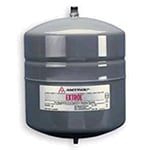
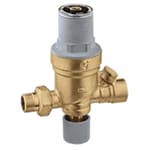 A hydronic system must be filled with water at a specific pressure in order to operate as designed. A fill valve will allow water to enter the system until it reaches the desired pressure.
A hydronic system must be filled with water at a specific pressure in order to operate as designed. A fill valve will allow water to enter the system until it reaches the desired pressure.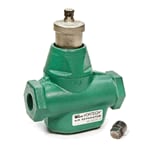 One of the top causes of poor performance and failure in heating systems is trapped air. Air can create traps in the high points of the system and restrict water flow, or accumulate in radiators to reduce heat output.
One of the top causes of poor performance and failure in heating systems is trapped air. Air can create traps in the high points of the system and restrict water flow, or accumulate in radiators to reduce heat output.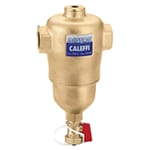 As dangerous to a hydronic system as air, dirt and other particles can clog heat exchangers, lock pumps, and cause valves to fail. A dirt separator can trap this dirt before it has a chance to damage the system.
As dangerous to a hydronic system as air, dirt and other particles can clog heat exchangers, lock pumps, and cause valves to fail. A dirt separator can trap this dirt before it has a chance to damage the system.
